EXPLORE. DREAM. DISCOVER.
Explore. dream. discover..


TRAVEL BLOG

DESTINATIONS

Thanks For Looking!
I'm David Leiter , the guy behind this website. I'm an American who's been traveling the world full time for 8 years now.
I started this travel blog in 2019 to document my own international trips, share my photos, and help others learn how to travel the world and find some really good spots off the beaten path.
I'm currently based in Bali , Indonesia , where I met my wife Intan, who’s a Bali local. Now she joins me on these wild and crazy adventures too.
Together, we've done some bucket list hikes , climbed active volcanoes , seen exotic wildlife , and visited some spectacular castles , temples , and monuments around the world.
I've worked with and been featured by BBC Travel , NBC News , Time , and other companies.
I haven’t been everywhere, but it’s on my list. I hope this world travel blog can help and inspire you in your own journeys as well!
Travel Guides
Popular travel blog posts & guides

HOW TO VISIT THE PYRAMIDS IN EGYPT

NUSA PENIDA ISLAND GUIDE FOR BALI

22 BEST THINGS TO DO IN JAPAN

10 BEST THINGS TO DO AT MACHU PICCHU

PETRA JORDAN TRAVEL GUIDE

18 BEST WATERFALLS IN INDONESIA

25 BEST ISLANDS IN INDONESIA

37 BEST THINGS TO DO IN OAHU HAWAII

CORON PALAWAN ISLAND GUIDE

EL NIDO PALAWAN ISLAND GUIDE

KOMODO ISLAND GUIDE FOR INDONESIA

15 AMAZING WATERFALLS IN ICELAND

ANGKOR WAT GUIDE FOR CAMBODIA

BALI WATERFALLS MAP

24 BEST THINGS TO DO IN INDONESIA

HOW TO VISIT THE BALI MONKEY FOREST

HOW TO VISIT CHICHEN ITZA FROM CANCUN

BAGAN MYANMAR TRAVEL GUIDE

ZAKYNTHOS ISLAND GUIDE FOR GREECE

CAPPADOCIA TURKEY TRAVEL GUIDE

ANG THONG THAILAND GUIDE

PHI PHI ISLAND GUIDE FOR THAILAND

IGUAZU FALLS ARGENTINA & BRAZIL GUIDE

TIKAL TEMPLE GUIDE FOR GUATEMALA

FLYING OVER THE GREAT BLUE HOLE IN BELIZE

SANTORINI TRAVEL GUIDE FOR GREECE

ROCK ISLANDS SCENIC FLIGHT IN PALAU
Bucket list hiking guides

EVEREST BASE CAMP TREK IN NEPAL

ANGELS LANDING HIKE IN ZION

WAYNA PICCHU HIKE IN PERU

25 BEST HIKES IN INDONESIA

TONGARIRO CROSSING IN NEW ZEALAND

TIGER'S NEST MONASTERY HIKE IN BHUTAN

26 BEST HIKES IN OAHU HAWAII

18 BEST SLOT CANYONS IN UTAH

STAIRWAY TO HEAVEN HIKE IN HAWAII

MOUNT FITZ ROY HIKE IN PATAGONIA

MOUNT BROMO CRATER IN INDONESIA

KAWAH IJEN VOLCANIC LAKE IN JAVA

PERITO MORENO GLACIER WALK

ACATENANGO VOLCANO HIKE IN GUATEMALA

HALF DOME HIKE IN YOSEMITE

23 BEST HIKES IN UTAH
Recent posts, how to visit dhigurah island: budget paradise in maldives, 10 best hikes in aruba: family friendly trails, how to visit tanjung puting national park in indonesia, lower antelope canyon tour review & photos, sanur bali travel guide: 23 best things to do, coron vs el nido: which is better all differences explained, banggai islands travel guide & itinerary for sulawesi, paisu pok lake in banggai: bluest lake in indonesia, destinations.
Pick a country and start exploring!

UNITED STATES

PHILIPPINES

UNITED ARAB EMIRATES

Get In Touch
Feel free to contact me if you have travel questions, comments, or suggestions! I'll try to get back to you!
Key travel tips you need to know — whether you’re a first-time or frequent traveler

The holiday travel season is fully upon us. The Transportation Security Administration expects to screen a record number of passengers this Christmas, and the TSA already broke a daily record. They screened a whopping 2.9 million travelers on Nov. 26, 2023, alone ... the most passengers ever screened in a single day.
As millions of travelers take trips by plane , cruise ship or road , we've gathered some essential travel tips on how best to book and enjoy your journeys.
Whether you're an occasional road-tripper or a frequent globe-trotter, these TPG-backed top travel tips can help you avoid unnecessary headaches when you spend time away from home.
How to find travel deals
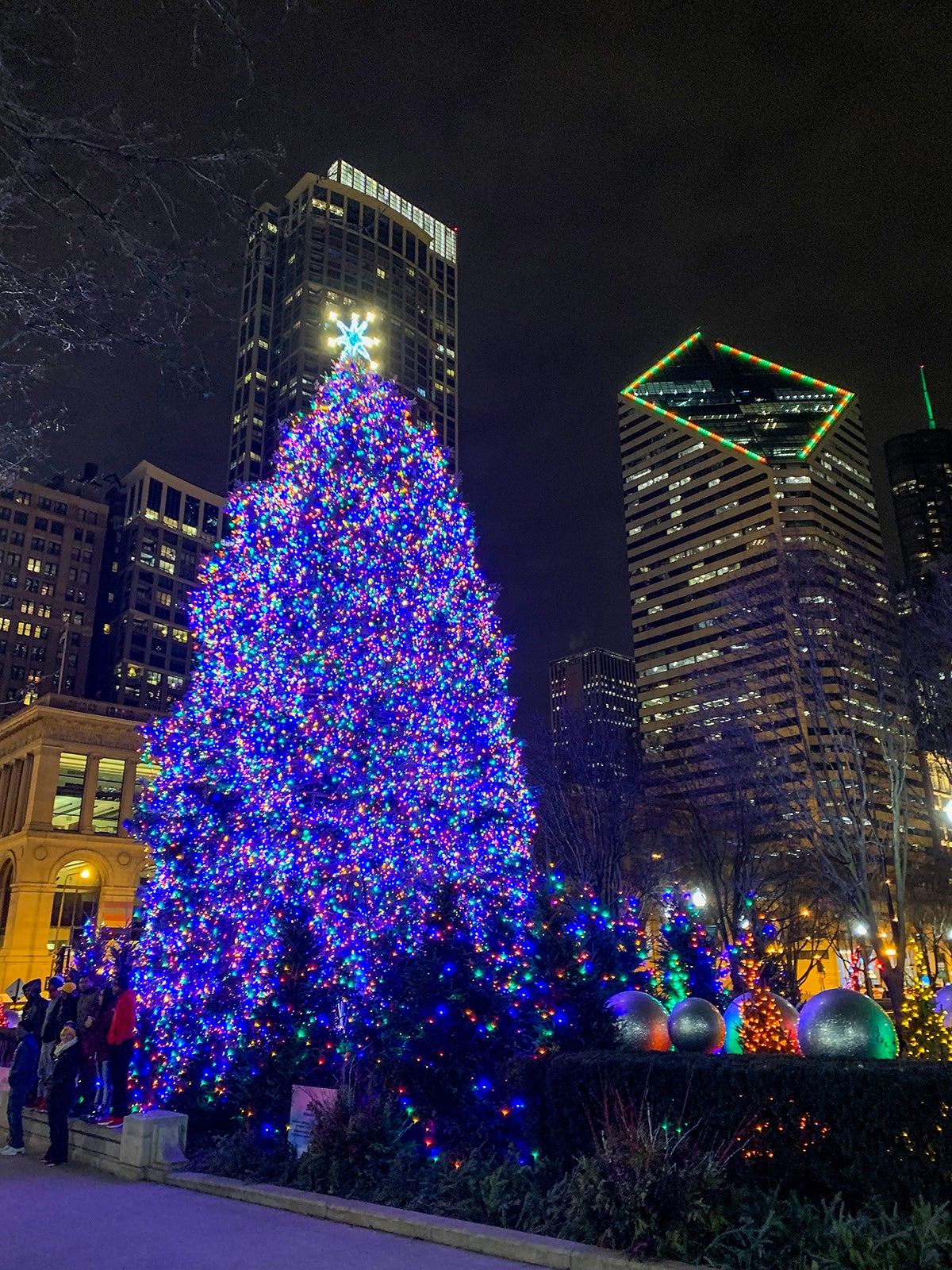
Flexibility is key when it comes to finding cheap airfare any time of year.
Changing your arrival or departure date by a single day can save you hundreds of dollars on airfare. If you don't mind altering your family's plans slightly, consider booking travel directly on major holidays like the Fourth of July, Thanksgiving and Christmas for cheaper prices and thinner airport crowds.
One of our favorite tools at TPG for finding deals is Google Flights . You can use the search field to find the cheapest (or best) flights. Google will also give you a historical view of how prices have ranged and will even send you email alerts if fares jump or drop on specific routes you've selected.
It also has some fun tools you can use to find a cheap destination. By clicking the "Explore" button on the sidebar and putting your departure airport, Google will give you a map or list view of the most wallet-friendly destinations.
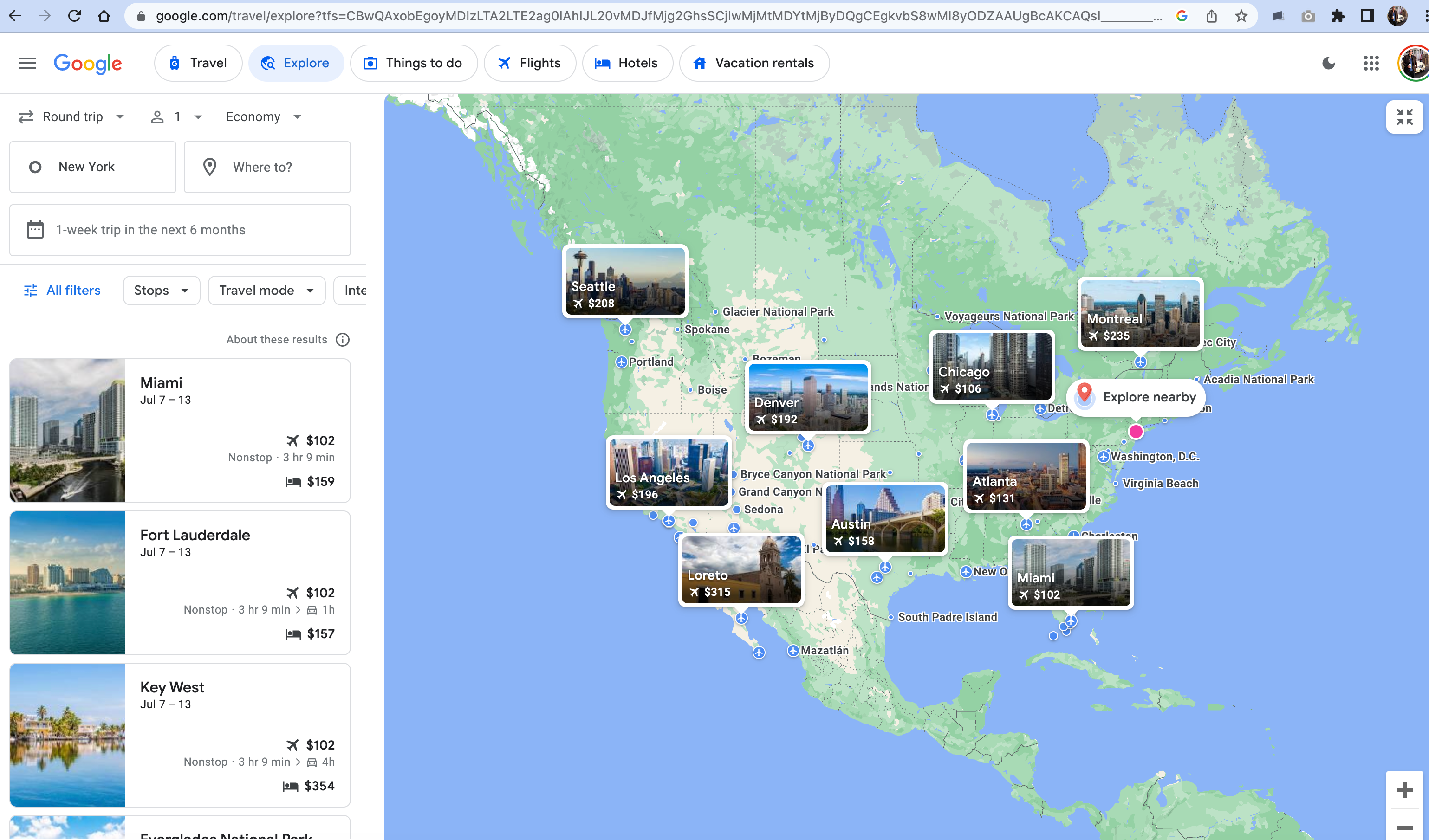
However, Google isn't the only place to find deals: TPG publishes regular deal alerts. You can sign up for Twitter alerts and subscribe to our daily newsletter for the latest deals news.
Don't sleep on mileage awards, either. If you've been hoarding miles during the pandemic, it's time to spend them. Cash prices are high, so it can be a good time to burn those miles.
No matter how much you think you know about redeeming miles for flights , there are always new tips and tricks for turning those earnings into dream trips. Turn to TPG for guidance on sweet spots for redemptions. Sites like ExpertFlyer (part of Red Ventures, like TPG) supply additional redemption ideas or even business class upgrade inventory.
You may even want to consult a travel agent to get access to special deals that aren't available anywhere else. Travel agents can sometimes get you extra perks at hotels or even cheaper business-class airfare to your dream destination.
Be your own best advocate
Since there are still air traffic controller shortages and little room for error in the system these days, travelers have to be their own best advocates.
There are ways to get ahead of any possible travel nightmares.
First, be smart when booking. Try to find a nonstop flight rather than one with connections, even if it costs a little more. You'll eliminate the risk of missing connections and lessen the chance of having your luggage go in a different direction than you during a transfer.
You could also take one of the first flights of the day, as those are least likely to face afternoon thunderstorms and most likely to depart on time. Read our article 5 reasons to book the first flight of the day for all the data.
Related: Your flight is canceled or delayed – here's what you should do next
Download your airline's mobile app to keep track of potential flight delays in real time. The airline app is a secret weapon in case things go wrong. Not only will you know when boarding starts, but you'll also learn of any delays first. Some airlines allow you to even rebook yourself in the app.
If your flight is canceled, you'll want to beat everyone else on your flight who is also looking to get rebooked.
We recommend heading for the customer service desk (or lounge desk if you have access). You could also get on the phone with the airline or contact them via social media if there's a delay . Sometimes, an airline's Twitter representative will help you faster than a phone or in-person agent can. You have to use every tool at your disposal when things go south.
Many airlines also now have live chat capabilities to help navigate delays and cancellations.
I always have an alternate plan (or two) in the back of my mind in case a flight gets canceled or delayed. I also look to see what other airlines are flying the route I'm booked in case something goes awry. This way, I'll know what to ask for if I need to be rebooked.
Also, save all the receipts for the expenses you incur during delays or cancellations. You'll want excellent documentation in the case of meltdowns like the one Southwest passengers experienced during the holidays .
If you're stuck at an airport for an extended period, seek out your airport's secret quiet spaces for a brief escape from the travel chaos.
Get Global Entry and/or TSA PreCheck
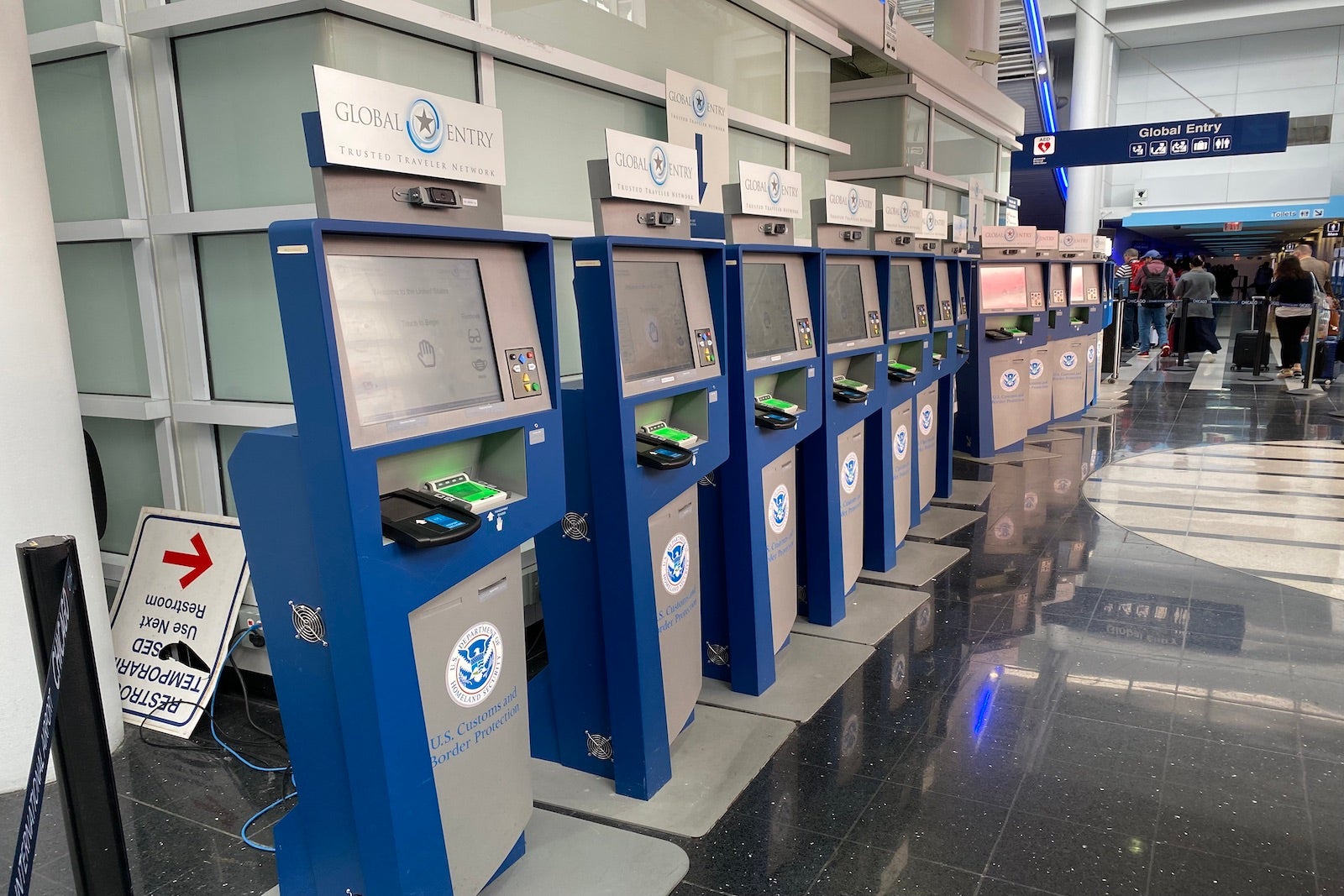
One of our favorite ways to speed through the airport and avoid those summertime mega lines is via Trusted Traveler programs like TSA PreCheck and Global Entry .
Essentially, the government pre-screens you for security and thus you save a bit of time during your travels. You'll need to apply ahead of time and pay a fee. The great news, however, is that many credit cards will give you a statement credit for these fees. TSA PreCheck is a $78 application fee for five years, and Global Entry is $100.
Related: 7 ways to get Global Entry, TSA PreCheck and/or Clear for free
TSA PreCheck allows you to speed through airport security without removing your shoes, laptops or liquids. With Global Entry , you can breeze through customs when you return from an international trip.
If you have the time, going for Global Entry rather than simply TSA PreCheck makes sense. Global Entry requires an interview with Customs and Border Patrol ahead of time, but once you're approved, TSA PreCheck will be included.
Get Clear for the ultimate security trifecta
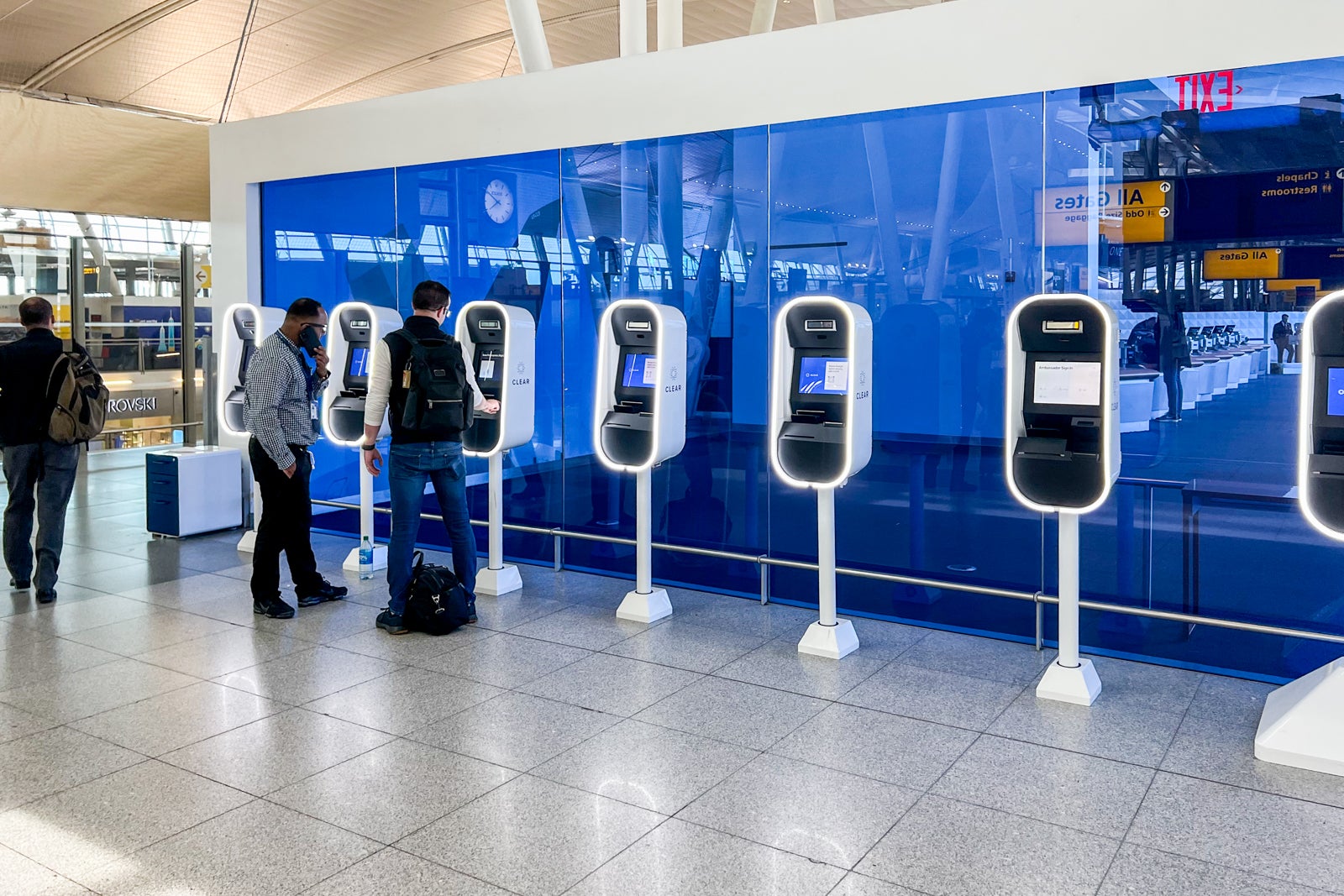
The other security tool we recommend you have in your travel toolbelt is Clear .
Related: Why you should get TSA PreCheck and Clear
The expedited security program allows you to bypass long security lines by using a separate lane at many airports. You'll approach a kiosk where your identity is confirmed via an iris scan or fingerprint. A Clear employee will then escort you to the front of the security screening line.
A Clear membership combined with TSA PreCheck will enable you to go to even shorter lines at some airports with designated Clear/PreCheck lines. Clear isn't perfect at all airports where it's so popular, and there are now long lines (cough, Atlanta). However, it will still generally lead to shorter lines overall.
Related: Guide to using the Amex Platinum Clear benefit
Make copies of your important documents
Make digital and hard copies of all your important travel-related documents. Start by photographing your driver's license, your state ID and/or your passport.
You should have copies of your IDs in your phone's library in case you get separated from the actual document. Sometimes, it also helps in a pinch if you are asked for ID, and you didn't bring the hard copy. For example, I was recently asked for my ID to enter One Vanderbilt to have dinner at the new American Express Centurion Lounge in New York. The receptionist would have accepted a photograph of the ID if I didn't have the physical document.
TPG also recommends having an actual photocopy in a separate place. Editor Kristy Tolley says she stores a hard copy in a separate place from where she keeps her passport in case she loses a bag. "I also leave a copy of it at home if I'm traveling alone," she said.
Check expiration dates
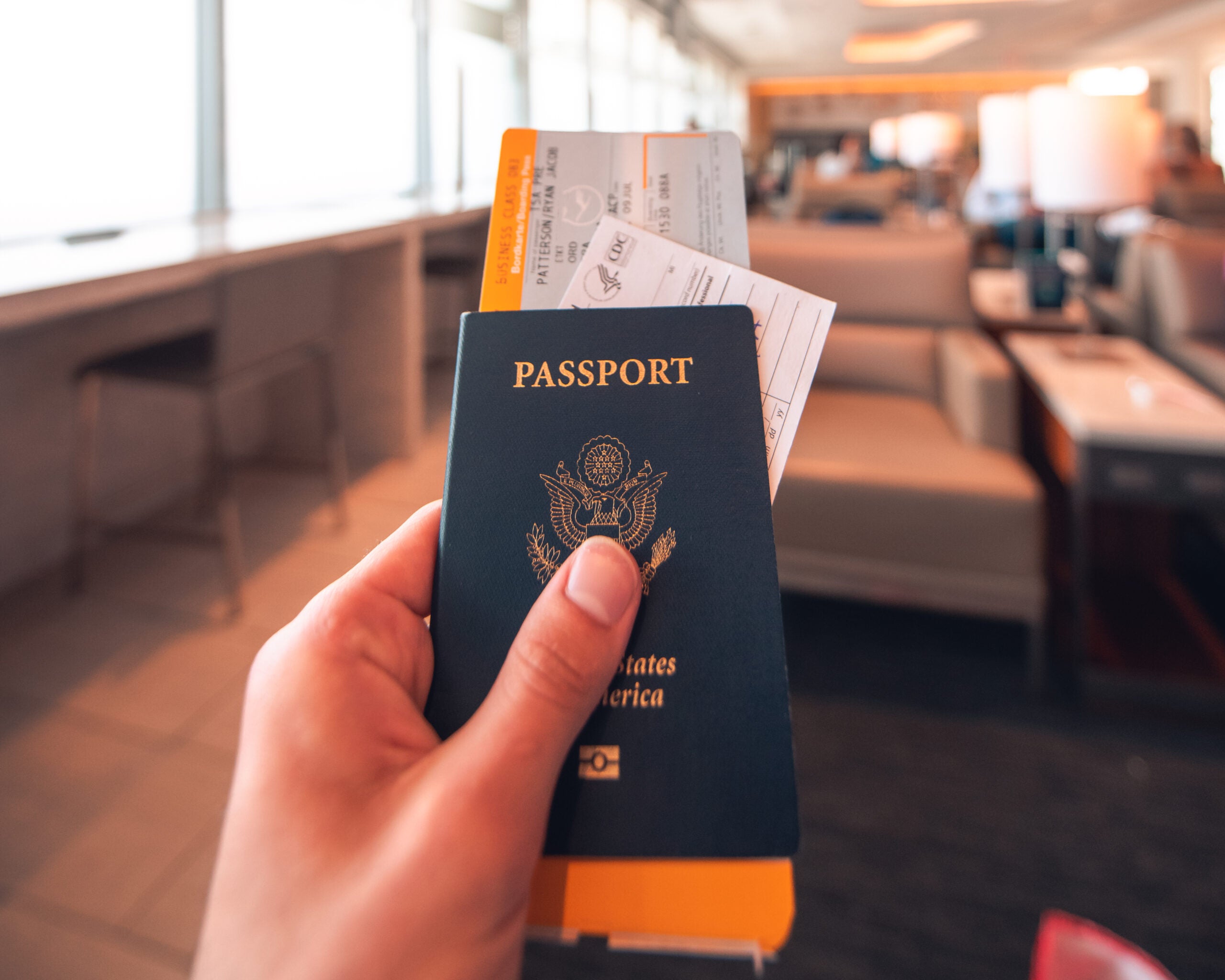
If you aren't 100% certain of the expiration date of your passport and other travel documents, go check them now. Renewing passports takes time, and some countries require six months of future passport validity to allow entry. Remember that child passports expire every five years, which can sneak up on you.
Related: How and when to renew your passport
Double-checking the expiration dates for your driver's licenses and state IDs is also a good idea. Remember that TSA checks the expiration dates on your documents when they screen you for security. Don't forget to check the expiration dates for your Trusted Traveler programs like Global Entry, Clear and TSA PreCheck, too. It can take a while to get a Global Entry interview appointment if you need one to renew.
Few things are worse than getting to the front of the security line and realizing the PreCheck mark is gone from your boarding pass.
Finally, check the entry requirements if you are traveling internationally. Some countries require visas that you must acquire before arrival.
Consider travel protection
When booking your travel, try to use a credit card that offers some built-in travel protection . Many credit cards, including TPG favorites like the Chase Sapphire Reserve or The Platinum Card® from American Express , offer this when you use those cards to purchase your airfare and similar.
Related: Best credit cards for trip delays and cancellations
If the coverage offered by your credit card isn't enough, you might also want to purchase travel insurance . These policies can sometimes go beyond trip cancellations to cover things like medical evacuations. Warning: Read the fine print on any extra policies very carefully to ensure it covers the situations that matter the most to you.
Those who frequently travel abroad may want to consider purchasing an annual travel insurance policy instead of buying one on a trip-by-trip basis. Some TPG staffers purchase annual policies because of the cost savings for multiple trips. Some will find having an annual policy is easier than juggling separate policies or various credit card coverage terms and conditions.
Tips for your luggage
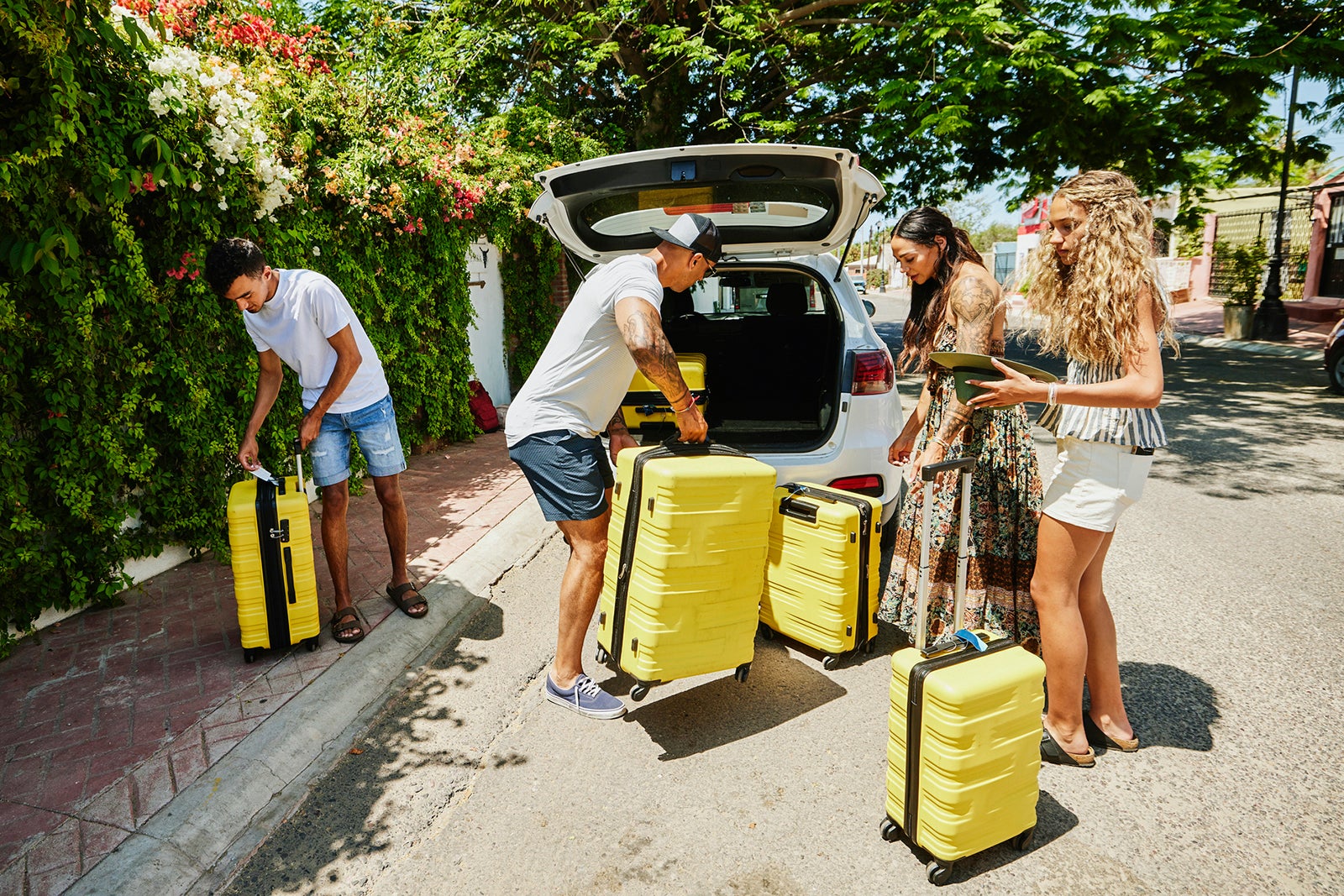
TPG has a ton of tips when it comes to luggage.
First and foremost, try to be on "team carry-on" whenever possible. If you don't check baggage, you are much less likely to become separated from it. Many of us at TPG refuse to check luggage except under extreme circumstances.
Of course, other folks with families or those embarking on long journeys may still want to check bags. If that's the case for you, you can still do many things to lessen the chance you get separated from your stuff. For example, make sure your luggage is in good working order, your contact info is attached, the bag is within the weight limits, you get to the airport early (but not too early) to check it and confirm your luggage is tagged to the right destination or connection.
Related: 7 tips to keep the airline from losing your luggage
After last year's baggage delays and luggage disasters , we strongly suggest you put Apple AirTags (or the Android equivalent ) into your luggage so you can track your items if they go missing .
If you check a bag, keep extra medicine or medical supplies in your carry-on bag in case your luggage goes missing or gets delayed. "As a diabetic, I keep a tiny emergency kit in my backpack with enough supplies to keep me going in an emergency," TPG writer Tanner Saunders said.
Former TPG credit card writer Ryan Smith also offered words of advice regarding luggage. "The last items you pack in your carry-on will be most accessible, so use this for your passport, ID, ticket, headphones or whatever else you need during the trip," he said. By making sure those items you'll use most are easiest to reach, you'll save yourself the hassle of having to dig around (or partially unpack) your bag to grab what you need.
Finally, be sure and get compensated if your bags are late or lost. Many airlines will give you points or even cash for delayed bags, and the government has rules on compensation if your bags are lost.
Staying safe on your journeys

From potentially getting robbed while on the road to experiencing bad weather or natural disasters while traveling, there are many scenarios that could arise when you're away from home.
To mitigate those risks, pay attention to U.S. Department of State warnings about a destination you plan to visit and check local sources for the latest news from that country or region for additional context. Although the State Department tends to err on the side of caution with its warnings, it's still best to be aware of what you may face during your trip.
Also, know the local number in case of emergencies. In many places, including Mexico and much of Europe, if you dial 9-1-1 on your cellphone, you will be connected to emergency services just like in the U.S. However, you should know the local emergency numbers of whichever country you visit.
Let people at home know your itinerary and stay in touch with them throughout your trip. If something goes amiss, at least someone will know where you're supposed to be or the last place you visited.
If you're arriving at night, contact your hotel or home-share host to ask about the best way to get there at the time you're arriving and the safest ways to travel at night in that area.
Also, be strategic about how you check into a hotel. Some solo travelers request two keycards to imply someone else is on the trip. Giving thought to the hotel room's security swing bar can also make sense, with some taking steps like placing a hand towel over it to make it harder to dislodge from the outside.
Some final tips
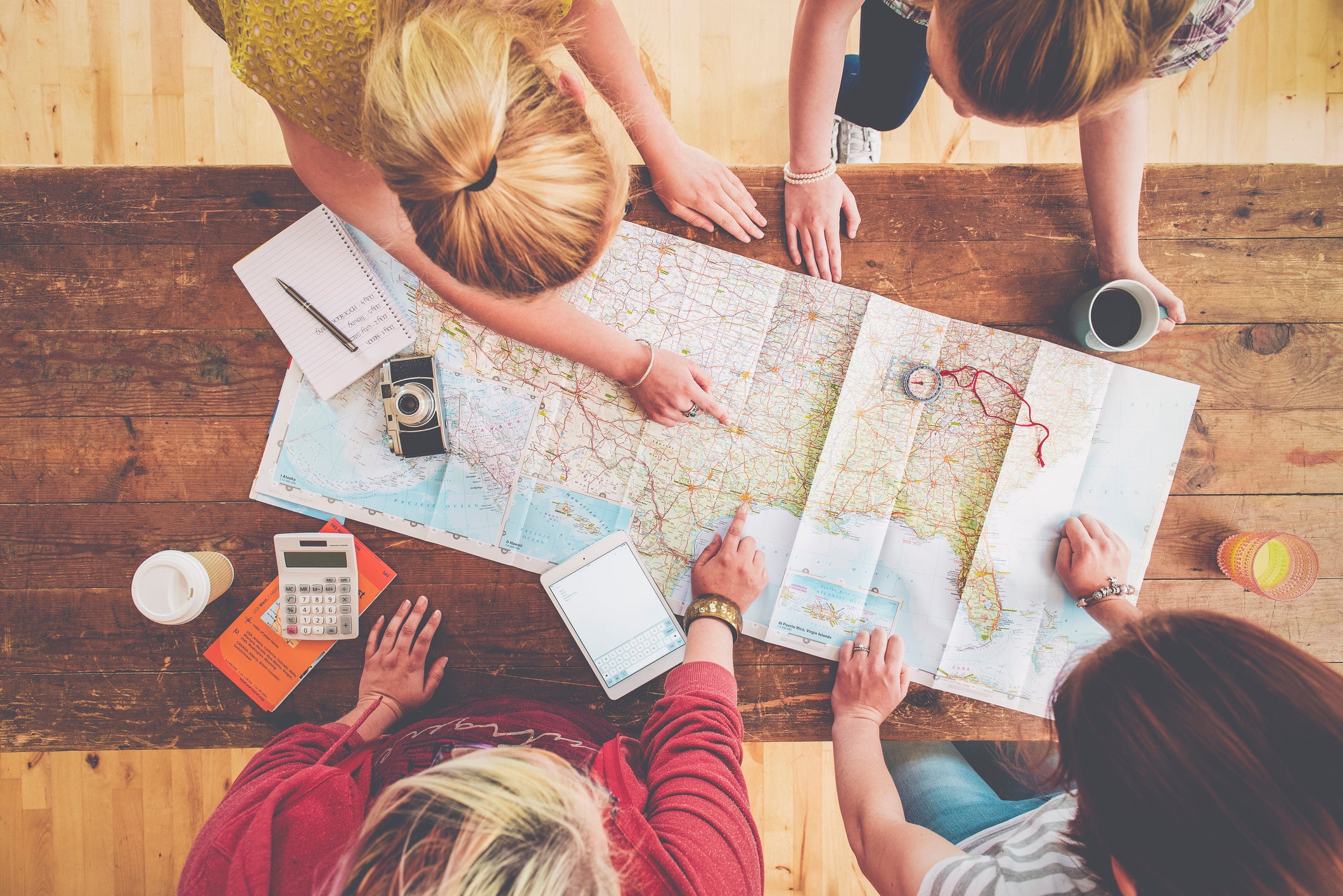
- For cruisers, TPG principal cruise writer Gene Sloan suggests arriving in port at least a day in advance (if not several days ahead of time). This will eliminate the risk of missing your ship's departure time and help you get acclimated to the local time zone.
- When taking road trips to out-of-the-way destinations, go old school and bring paper maps with you or download offline maps from Google. Using a paper map or an offline version means you always have a way to navigate around your chosen destination, even if you lose cellular service.
- One other note, you should reserve airport parking ahead of time during peak travel times. Some airport parking areas fill up fast around holidays, so reserving your spot ahead of time will save you from wasting time looking for a space when you need to catch a flight. You can also sometimes save by booking online in advance, too.
Bottom line
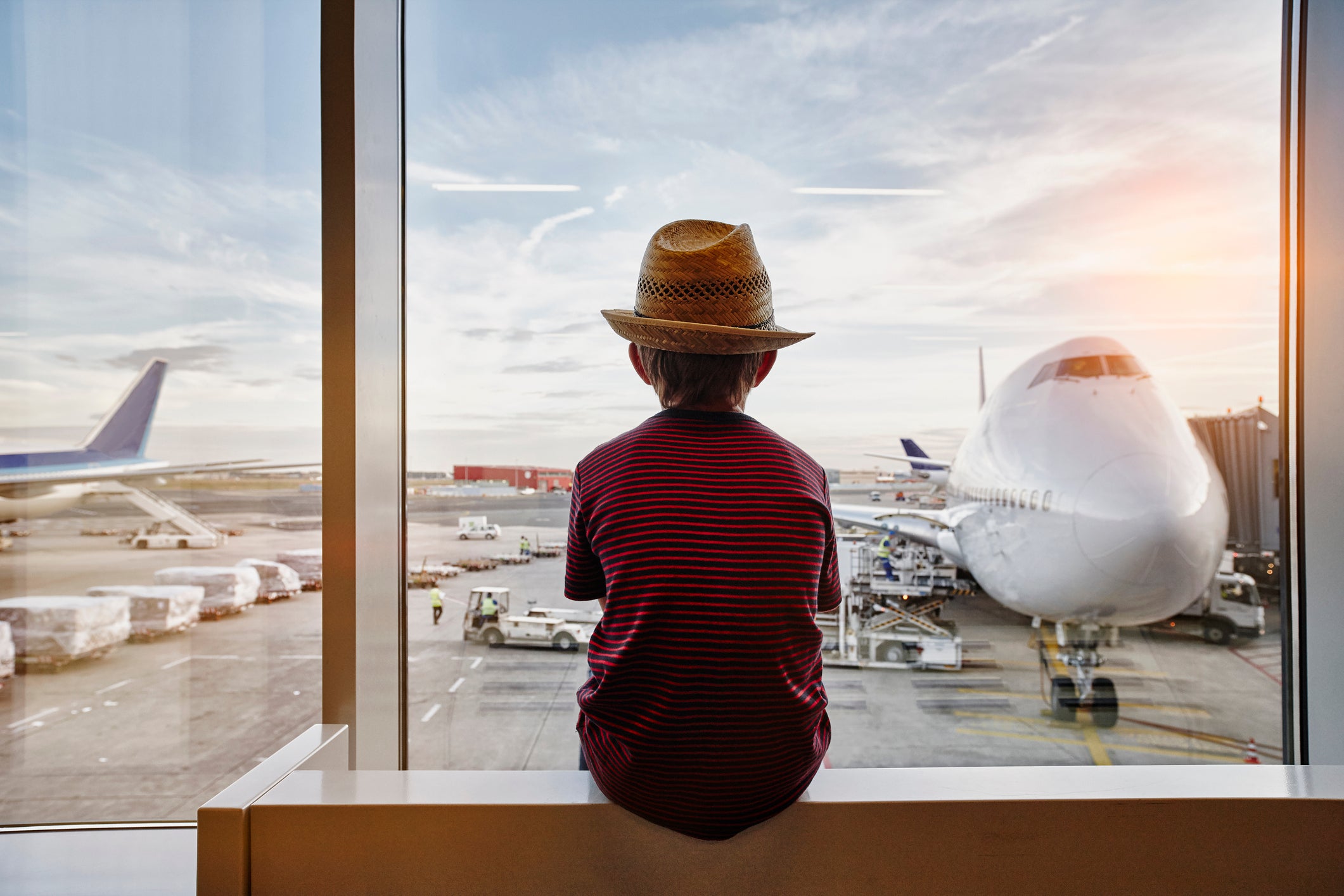
Whether you're fresh to the world of traveling or a seasoned expert, you can always learn new tips to maximize your time away from home. The more research and preparation you do before your trip, the better your experience will be — especially if things go wrong, as they sometimes do.
Some of our favorite tools are deal alerts, Google Flights , sign-up bonuses and credit card rewards . Learn those tools and use them for better travel every time.
Remember that these days when things go wrong, you have to be your own best advocate. For more travel tips and tricks, read the stories below.
Related reading:
- Your flight is delayed or canceled: Here's what to do next
- The best travel credit cards
- The 18 best places to travel in 2023
- 6 real-life strategies you can use when your flight is canceled or delayed
- 8 of the best credit cards for general travel purchases
- Here's how to get through airport security faster

Hi & Welcome to the Full Suitcase Travel Blog!
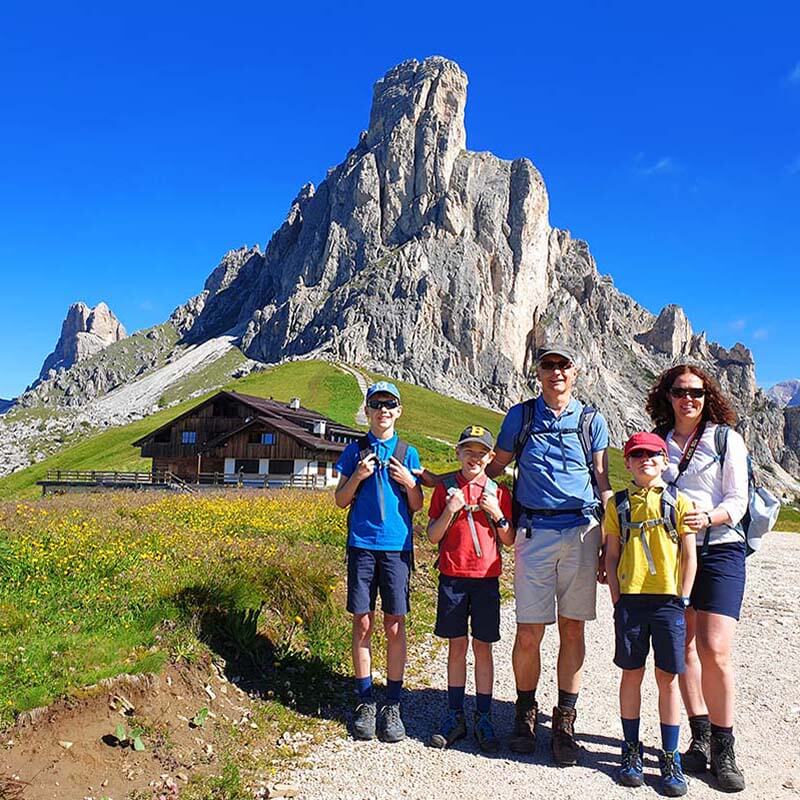
Full Suitcase is a travel website filled with inspiring travel stories, jaw-dropping images, and no-nonsense trip advice.
Established in 2015, Full Suitcase is now one of the world’s leading family travel blogs with millions of readers all over the world.
Our destination guides, trip itineraries, and practical tips will help you MAKE THE MOST OF EVERY TRIP. Check out some of our favorite destinations below or jump straight to our travel destinations page for the complete overview.

Latest from the blog
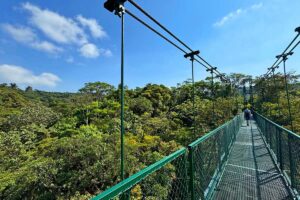
Some of Our Favorite Travel Destinations

More Travel Inspiration
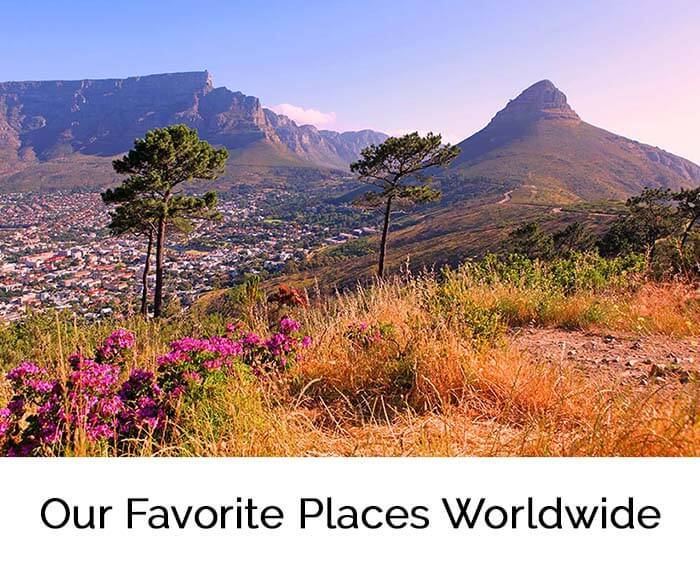
Travel Resources
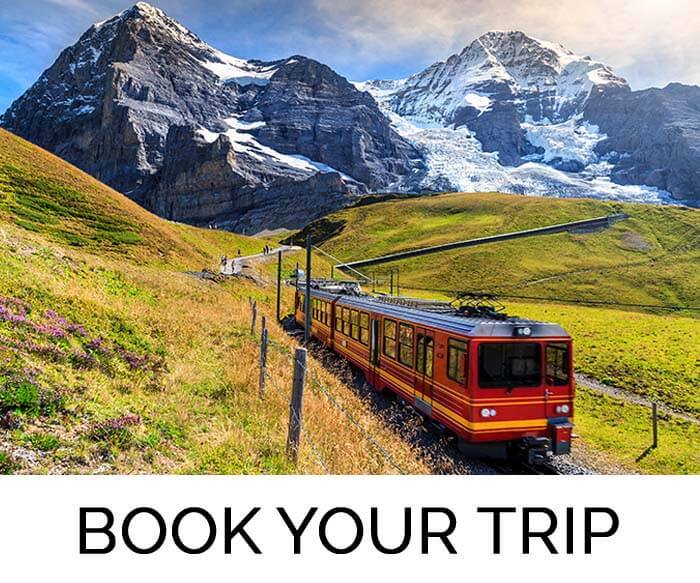
This site uses Akismet to reduce spam. Learn how your comment data is processed .

Our 15 Best Travel Tips from 15 Years on the Road
- Last Updated: March 30, 2024
Here’s our list of the best travel tips to help you travel like a pro.
We’ve been lucky enough to be travelling the world for over a decade, living a semi-nomadic life, and in that time we’ve picked up quite a lot of travel tips along the way.
Rather than write out a list of generic travel advice or life lessons, we wanted to put together this article with a bunch of actionable and not-so-obvious tips to help you make the most of your adventures.
Table of Contents
1) Travel Slow
2) think outside the box when booking flights, 3) learn some of the local language, 4) buy travel insurance, 5) ask for prices before you agree to anything, 6) get a vpn, 7) apply for a credit/debit card that has zero international transaction fees, 8) never exchange money in your home country, 9) have multiple copies of your important documents, 10) abc – always be charging, 11) save money (and time) – do your own laundry, 12) get quick-dry clothes, 13) pack ear plugs, 14) always bring a water bottle, 15) get a local sim card for your phone, here are our top travel tips.
Whether you’re planning on travelling for a week or a year, we hope these great travel tips will make your next trip go much more smoothly.
Whenever somebody asks what our number one travel tip is, we always reply with the same bit of advice – slow down.
It’s totally normal to try and fit in as many exciting destinations and incredible activities as possible when you’re on vacation. After all, your time away from work is precious. But we can promise you that you’ll gain so much more valuable experiences and memories if you travel slowly.
The truth is that unless you’re staying at an all-inclusive resort and have no intentions of leaving the property, travel is exhausting. Your sensors are firing on all cylinders, constantly taking in the new sights, smells and tastes of wherever you are.
If you’re anything like us too, the moment you leave the hotel you’re out on your feet all day, visiting museums, climbing viewpoints and winding your way through narrow alleyways. Yes, you’re on holiday, but you’re not exactly taking a rest!
Throw in that if you’re on a long-term trip as well, you need to be constantly thinking about how to get to the next place, where you’re going to stay, how to get a visa on the road, managing finances, etc.
READ MORE – Check out our guide on how to be a responsible traveller .
The best way to not get completely burnt out from all of this is to simply slow down.
Give yourself more time in each city you go to. Spend the mornings sightseeing, but leave the afternoons free to chill out in a cafe. Don’t try and jam pack a million things to do into a few hours.
Staying in places longer also gives you a chance to find hidden gems, try different restaurants and sometimes even get better deals on your accommodation.
We’ve done it all – tried to fit in everything into one week, spent 7 months wandering one country, and everything in between. We can promise you that slow travel is much more rewarding, and better for the soul.
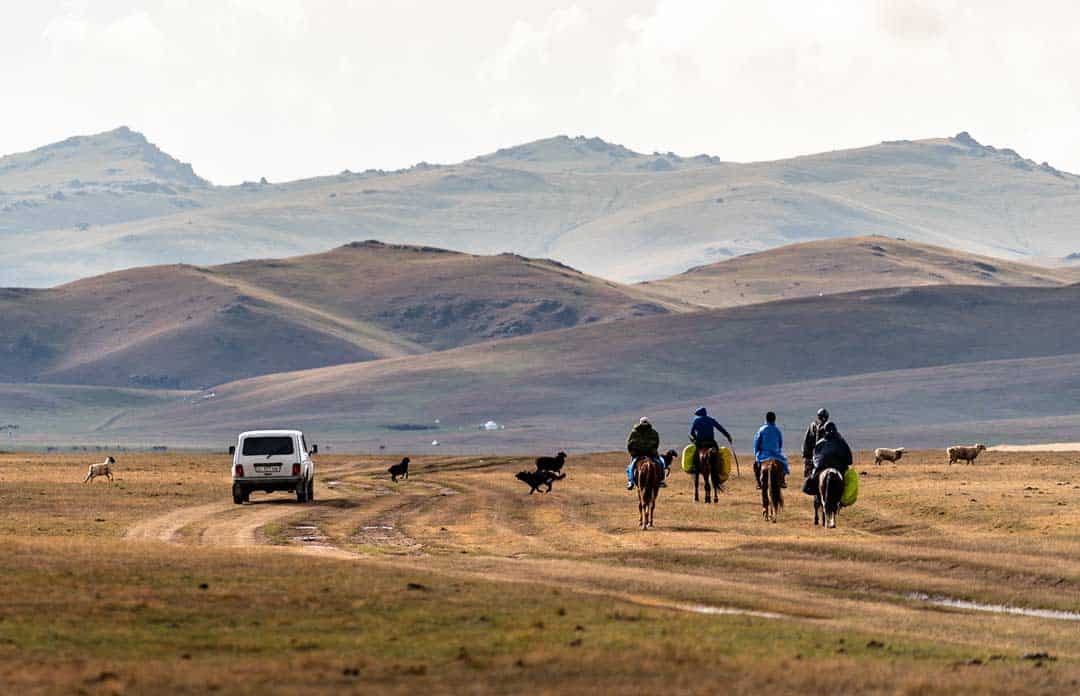
Depending on where you are going, flights can be the most expensive part of your trip. If you’re planning on going somewhere slightly obscure, the prices might even be astronomical.
That’s why we always try to think outside of the box when it comes to searching for our airfares.
The first thing to do is try a whole bunch of different websites to find the cheapest options. You can save money on flights with Wego as an example, or do simple online searches.
For example rather than just punching ‘Sydney to London’, try going ‘Sydney to Singapore/Kuala Lumpur/Bangkok’ or any other major hub, then from there to London to see if there’s specials on airlines that aren’t part of the same alliance.
Or if you want to have a layover somewhere, look at multi-trip tickets. That’s how we ended up giving ourselves 3 days in New York City for the same price as transiting through.
Have you ever had somebody walk up to in your home town and ask a question in a language you don’t know? If you live somewhere like Australia or the United States, the chances are not likely, or if it has happened, very rarely.
It’s just not something that would happen, and in some places it’d even be considered completely unacceptable.
Now let’s flip the coin – have you ever travelled to a place where you don’t know a single word in the local language? Where you just walked up to a local and blurted out a query or question in English, expecting or hoping them to understand?
I’m going to go out on a limb and say yes. We’ve all done it.
There seems to be a double standard when it comes to speaking local languages, depending on whether you are on vacation, or you are at home. The fact of the matter is though it’s almost impossible to learn an entire language for a place you only plan on visiting for a couple of weeks.
That doesn’t mean you shouldn’t at least try though.
Our next best travel tip is to make an effort to learn the basics of the local language for where you are visiting. Try to pick up words and phrases such as ‘hello’, ‘thank you’, ‘good bye’, ‘where is the bathroom?’ and ‘how much?’ so when you communicate with a local, you are making an effort to do so in their language.
Showing this level of respect will go a long way in making positive interactions between tourists and local communities. If you don’t have time to learn from various apps before you leave home, on your first day in a new country ask a local to write down those keywords into a notebook, and keep that on you at all times.
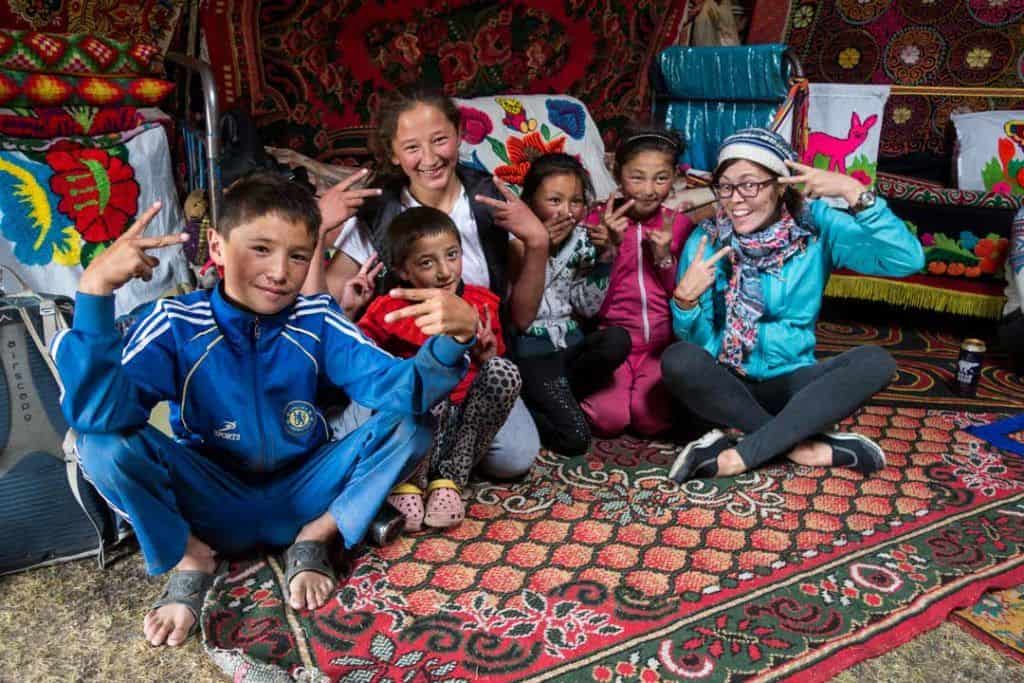
If you can’t afford travel insurance, you can’t afford to travel. It’s a saying that has been used thousands of times, and that’s because it’s entirely true.
A lot of the people we know who have refused to buy travel insurance do so because they feel it’s a waste of money, or they don’t travel with anything valuable, or believe that medical care wherever they are going is cheap.
We can tell you from experience that none of that matters. Alesha visited a hospital in Thailand with severe stomach pains one day, and after only spending a few hours there we were handed a bill for USD$1000.
Our old roommate broke his leg rock climbing in Canada and ended up getting a blood infection in the hospital. He spent 6 weeks confined to a bed getting treatment, and his bill came to $150’000.
Even if you don’t think you’ll get sick or aren’t planning on doing any extreme activities, accidents do happen.
READ MORE – Do you really need travel insurance?
Never, and we mean never, get into a cab, sign up for a tour, order a meal at a local restaurant or agree to anything that involves money without knowing exactly how much it will cost you.
Unfortunately in quite a few countries, unscrupulous locals may see tourists as a walking money bag (especially taxi drivers, don’t get us started on taxi drivers), and if you haven’t determined how much something is worth beforehand, they may feel they can make up a higher price at the end.
At this point you’ve already received your product or service, and can find it hard to argue a lower price, even if you know they are trying to rip you off.
So our big travel tip is to always negotiate and agree on a price beforehand, and make sure you iron out all of the finer details first (one-way or both ways, per person or total, etc).

If you’re like us and are constantly connecting to random wifi networks around the world, you need to learn to protect your sensitive data when browsing the web.
Hackers are getting smarter and more cunning, and might be monitoring web traffic on an unprotected network, and if you happen to punch in your bank login or credit card details on a compromised network, you could be at risk of having your accounts cleared out.
For this reason whenever we are doing anything involving money, we use a VPN to create a secure connection.
Some countries as well block access to various social media platforms and websites, and you can get around these restrictions by using a VPN.
Beyond that, this is also very handy if you are trying to use a website that is geo-restricted, or perhaps has different prices for people buying products outside of their home country.
(For example we’ve seen websites try to charge us up to 25% more for something because we’re trying to buy it in Australia. Change location to the US, and get the same thing for cheaper!)
We personally use ExpressVPN and have done so without issue since 2014. Use this link to get your first 30 days for free .
Did you know that many banks will charge you a fee for making purchases in a foreign currency, or using an international ATM?
This is usually 3% for a currency conversion, plus $5 (more or less) for using your card overseas. It might not seem like a lot, but if you’re on a long trip, or making regular purchases in different currencies, this is going to add up.
For this reason we always carry a bunch of different debit and credit cards that offer zero international transaction fees to keep our needless expenses down. Because at the end of the day, who really wants to give banks more money?
You’ll need to do your own research to see which banks offer these products in your own personal country, but here in Australia we’ve found a couple of great ones:
Bankwest have a Platinum MasterCard with zero annual fee and zero overseas transaction fees.
CitiBank has a debit card that doesn’t charge you anything to withdraw money at an overseas ATM (you still pay the local ATM fee though).
ANZ also have a ‘Travel Rewards’ Visa credit card that doesn’t charge any fees for overseas credit transactions, plus it lets you collect frequent flyer miles.
Note – we are not sponsored by or affiliated with any of the above banks in any way.

Speaking of money, one common question we get from readers, friends and family is what to do about having access to cash when they travel. We always tell them over and over again, just get your money there in the country.
Gone are the days of needing traveller’s cheques or having to exchange your money in your home country before you start the vacation.
In fact these methods will actually end up costing you money!
Airports and banks offer horrible exchange rates on international money, and you’ll up losing a lot of money in currency conversions if you give them your business.
Instead we recommend waiting until you are in the country and withdrawing money at an ATM. Remember how you picked up that awesome debit card without international transaction fees? Yep, it’s going to work wonders here.
Even if you don’t have one of those awesome cards, getting money out an ATM will almost always be better value than exchanging money at the bank or airport.
For those that always want local money as well for when they land, most airports have ATMs in the terminal, and while they might have higher ATM fees, you’ll usually get the current market rate for currency conversions.
You’ll be surprised how many places ask for a photocopy of your passport, or in some places like Iran perhaps even to see you wedding certificate if you’re sharing a room with your significant other.
Rather than always having these important documents on you at all times, we recommend having a number of photocopies that you stick into your backpack and can show if ever asked (without presenting the real versions).
It’s also a good idea to take photos of these and save them everywhere – email them to yourself, upload them to Google Drive or Dropbox, and keep them in an easy-to-find folder on your phone.
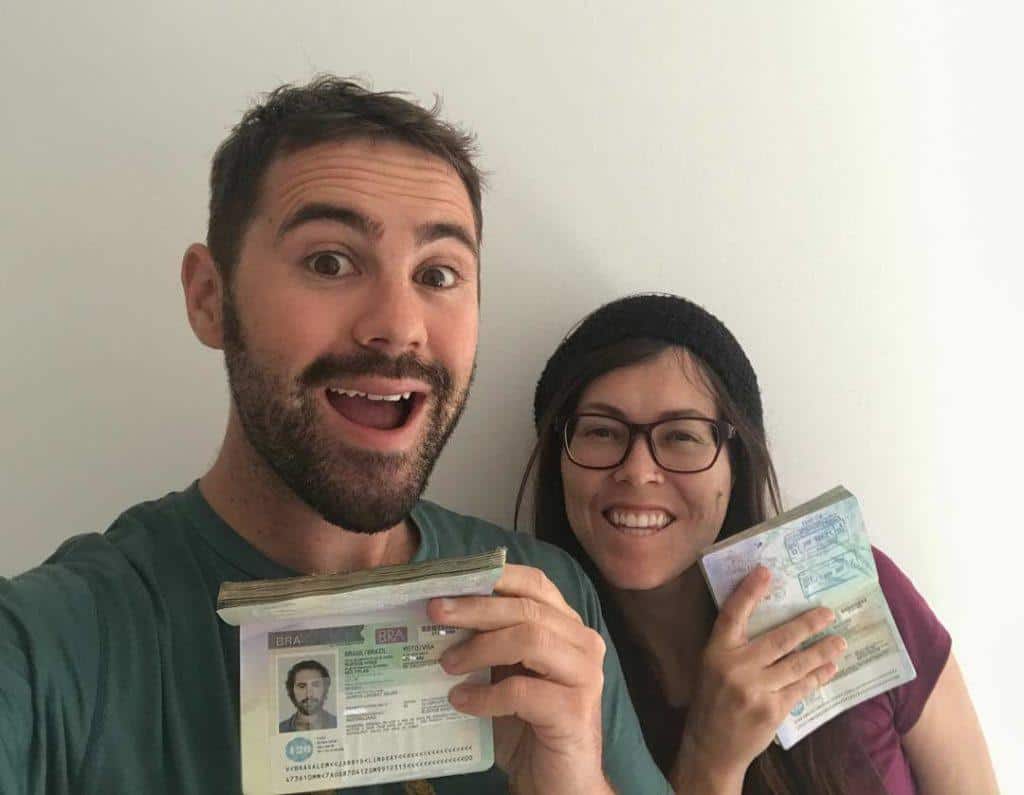
This one is particularly important for people like us, who always have laptops, cameras and phones in constant use. Keep them charged!
There’s nothing more frustrating than being out for a full day of exploration, and finding out that your phone/camera is flat.
You never know when you’re going to get a chance to charge your electronics, so if you find yourself somewhere with a spare powerpoint and a bit of time to kill, throw everything you can on charge.
Another great accessory to pick up is a USB battery pack, so you can charge your smaller items throughout the day without needing to find an electrical outlet.
You definitely don’t want to be ‘that smelly backpacker’ when you travel, so make sure you bathe regularly, and always have clean clothes.
The thing about travel though is you rarely have time to look for a laundromat and wash your clothes, and getting your hotel to do it for you can be very expensive (it’s 2019, why do they still charge per piece??), so we recommend doing your own laundry.
For years we’ve always hand-washed our clothes (in sinks or in the shower), then hung them up using a pegless clothesline in our room
There’s a couple of reasons we do this. First of all it saves money. While some hostels and hotels charge a reasonable price of only a few dollars for laundry, or have washing machines guests can use themselves, a lot charge insane prices.
Another reason is it also guarantees we won’t lose any bits of clothing. We’ve lost count of the number of times we’ve picked up laundry only to find socks, underwear and even t-shirts missing.
Third, time. We can wash our clothes at night, hang them up, go to bed and in the morning they’ll be dry.
Recently we’ve just picked up a Scrubba ‘travel washing machine’ to make the task of doing laundry easier. So far we’re loving it.
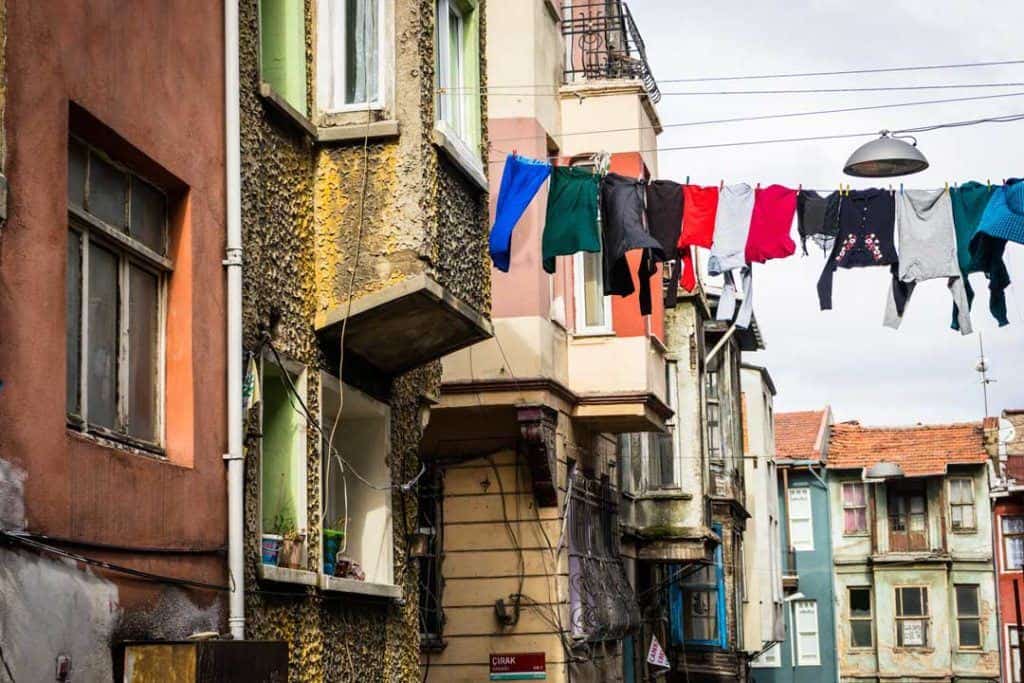
This travel tip follows on from the laundry one above. Always travel with quick-dry clothing. The reasoning is pretty self explanatory.
Quick-dry clothing is just what it sounds like – made of material that dries quickly. This is awesome if you’re doing your laundry in a hurry or do a lot of outdoor activities where you might sweat (or end in a rain shower).
Just hang it up for an hour or two with a bit of sun or a breeze, and it’ll be fully dry. Or you can do what we do and put on a damp shirt and let your body heat dry it out for you.
Our all-time favourite brand for quick-dry clothing is Kathmandu .
Even if you’re the world’s heaviest sleeper, having ear plugs in your bag can be the single best (and cheapest) item you travel with.
From loud music on overnight buses to heavy snorers in the tent next to you, you’ll never know when you’ll find yourself trying to catch some z’s in place that is just too noisy to crash out.
You don’t need to have anything fancy. Just the standard foam ear plugs you get from a hardware will do.

If you care about the environment at all, then you should travel with a reusable aluminium water bottle.
Rather than always buying plastic bottles for drinking water as you walk around a town, carry a metal bottle with you and fill it up on the go.
You can drink the tap water in most of Europe, North America, Australia and New Zealand, and also in some parts of South America, Asia and Africa (just ask the locals first).
If you happen to be travelling in one of the very lucky countries that have drinkable water coming straight from the tap, there’s no excuse to buy bottled water.
If you do happen to be somewhere that you can’t drink the tap water, then we recommend buying the biggest water bottle you can find (5L, 10L, etc) and refilling your metal one before going out for the day. This way you’ll minimise your plastic use.
Some places like Thailand have reverse osmosis machines on every block, or most bars and hotels will have water dispensers and will happily fill up your water bottle for a small fee.
In this day and age, having access to the internet while you travel is almost essential. From booking last-minute accommodation to checking Google Maps, to posting your best travel photos to social media, there’s a million reasons to want to have phone data at all times.
Unless your mobile phone plan has free international data roaming, chances are the moment you turn your phone on in a new country you’re going to start getting hit with crazy fees.
Even if your mobile phone provider offers a deal such as $5-10 a day for international roaming, this is going to add up quickly if you’re on a long trip.
What we personally do is pick up a prepaid SIM card with data in every country that we’re going to be in for a week or more. You might be surprised at how cheap this can be!
For example in Kyrgyzstan we got a 30-day prepaid sim card with 50gb of 4G data for $7. In Romania 10gb was about $10. In fact most countries except for Canada offer really good prepaid deals.
If you have the time we recommend going into a phone shop directly to get the best deals, rather than buying the airport SIM deals, as they’ll almost always be cheaper.
Your phone has to be unlocked for this to work. Do a little bit of Googling before buying a SIM card to make sure you find the best deal as well.
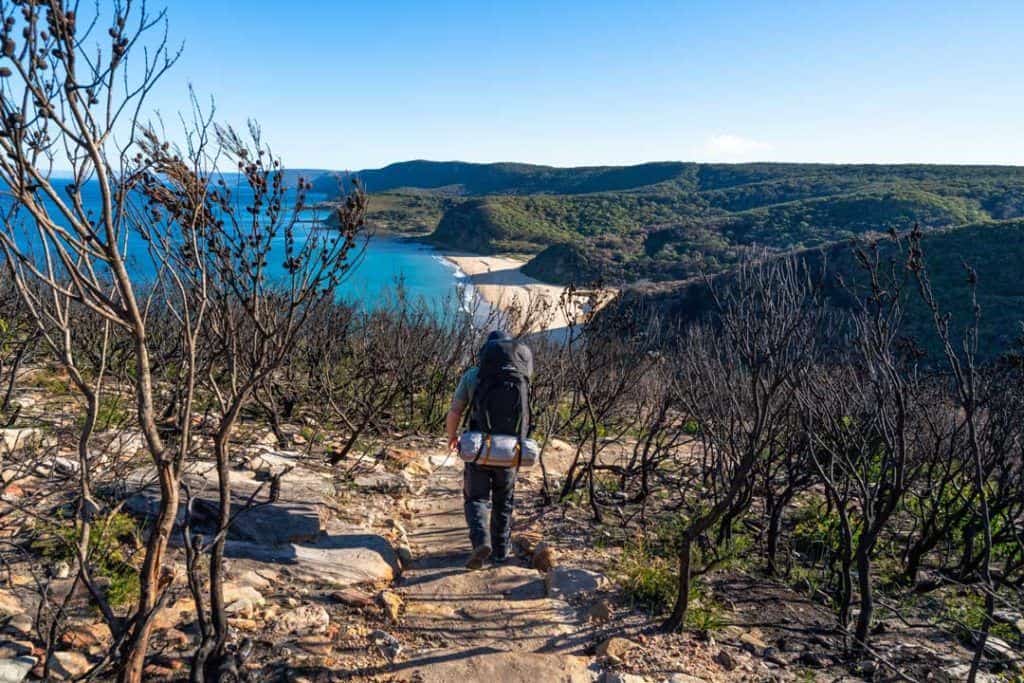
Alesha and Jarryd
Hi, We’re Alesha and Jarryd!

We’ve been traveling the world together since 2008, searching for the planet’s best destinations and adventures.
Love Travel?
Sign up for our free weekly newsletter for the best travel tips, ideas and deals!
We respect your privacy. Unsubscribe at any time.
READ MORE...
Getting Around Magnetic Island – ‘How to’ Transportation Guide
The Ultimate GUIDE to the Best MAGNETIC ISLAND BEACHES and Bays
14 Best Day Trips From Reykjavik, Iceland (2024 Guide)
Related Posts
Lijiang – china’s disneyland (without the rides), the power of travelling outside your comfort zone, the ultimate guide to hiking the overland track in tasmania, a bulgarian mountain escape at kosovo houses, 21 thoughts on “our 15 best travel tips from 15 years on the road”.
Wow, this article is full of great travel tips! I’ve been lucky to go on a few adventures myself, and I completely agree with the idea of learning some local language basics. It’s amazing how even a few words can open doors and make your travels more special. Plus, it’s a way to show respect for the local culture, and you can have some really heartwarming interactions.
All of these tips are fantastic and show a lot of travel wisdom built up over the years. Thanks a bunch for sharing your valuable insights.
Cheers, Femi.
Fifteen years of travel distilled into a priceless collection of tips. These battle-tested insights offer a shortcut to mastering the art of exploration and turning your journeys into unforgettable adventures.
This article has many helpful and realistic travel tips. I enjoyed the tips to travel slow, learn some language and get a VPN. You are very knowledgeable and inspiring. Thanks for sharing and I can’t wait to read more. Great job!
Your travel tips are practical and insightful. Thank you so much for your suggestions.
Very practical tips! I am very much in unison with buying a travel insurance. It helps in dealing with unforseen situations.
Great post! I found the information you shared to be really helpful and informative. One suggestion I have for future posts is to maybe include more real-life examples or case studies. It would be interesting to read about how others have applied the concepts you’ve discussed in their own lives or businesses. Additionally, it might be helpful to break up the text with more visuals or subheadings to make it easier to read and navigate. Keep up the good work!
Nice and interesting post
Thank you so much 🙂
These are very useful tips. I am planning to take a trip very soon and these will surely be handy. Thanks for sharing it with everyone.
I loved the way how you wrote these tips. I’m a beginner at traveling to a different country. Thank you for sharing.
So glad you enjoyed the post. All the best with your travels. 🙂
I am a photographer whose is been travelling for years. I love to explore new adventures people and places. thank you for the tips. This helped me. thank you 🙂 Keep updating!
I bet you have seen some wonderful places. All the best with your future travels. Glad the article was helpful. 🙂
I love traveling, I’m glad to across your blog. Very helpful. Thank you!
Thank you so much. Glad you liked the post. 🙂
Very interesting, Please share more.
This is an excellent article. Thank you for sharing your travel tips with us. I adored the way you presented yourself. Thanks for the useful information and advice provided in your article, I’ve learned a lot.
Hi Alesha and Jarryd, This is channa.Nice to bump on to you here.I am in Sydney for a vacation and going through your travel blog is a big help to plan my vacation.Thanks for the good information and advices provided. Hope you remember me some years back you stayed in my home stay in Galle,Sri Lanka.
I love travelling and I make 2 family overseas trips a year. I thank you for giving incredible advise on every single details of travelling. Despite my own travel experience I have learned so much from your article. The most useful is first one (to make travelling top priority ) . I have 2 kids, and my next trip will be very much different with your great tips.
Thank you for reading. We are happy to help. Happy future travels. 🙂
Leave a comment Cancel reply
Save my name, email, and website in this browser for the next time I comment.
Hi! I’m Kate.
I teach women how to travel the world safely — and I’m here to help you have the best trip ever.
I quit my job to travel the world alone in 2010. 12 years later, I’ve traveled to 83 countries and all seven continents! Oh, and I never went back to a “real” job.
Whether you need guidance for your first solo trip or you’re a seasoned traveler looking for destination inspiration, you’ve come to the right place!
You’re the most genuine blogger I’ve ever read…I’ve consumed a lot of blogs and travel related content in the past decade but you’re the only one I really trust and can genuinely say puts your readers first.
No one tackles the uncomfortable and difficult subjects like Kate does. I feel like she makes me a more aware and ethical traveler. It’s a complete bonus that reading her is like manifesting that wickedly intelligent, hilarious well-traveled friend we would all love to have.
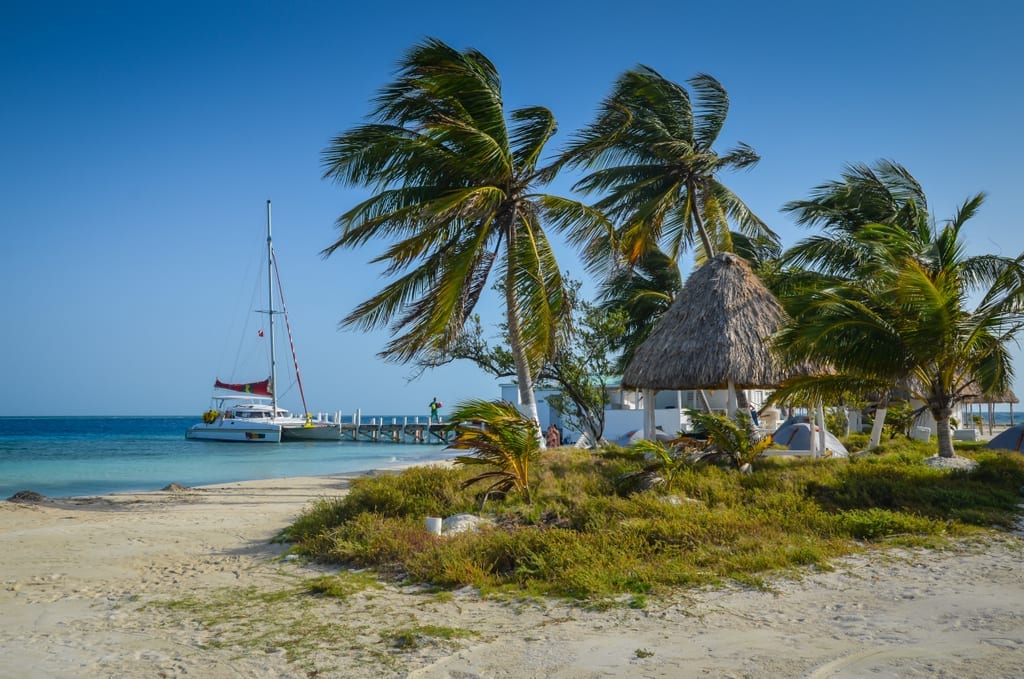
17 Colorful Things to Do in Valparaíso, Chile

AK Monthly Recap: March 2024

23 Best Things to do in Bologna, Italy
Top destinations.

How to Be Less of a Traveling Asshole in 2020

Backpacking Southeast Asia vs. Backpacking Central America

100 Travel Tips for Paris
Solo female travel posts.

Top 10 Travel Safety Tips for Women
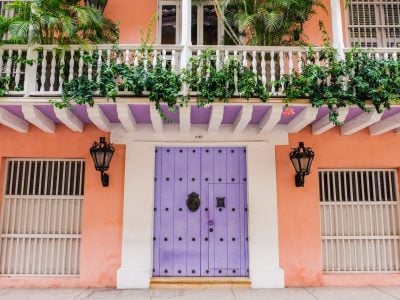
How to Survive Pre-Trip Anxiety

Travel Safety: Always Consider the Source
Best usa getaways.

Solo Female Travel in New Orleans: How to Stay Safe and Have Fun!
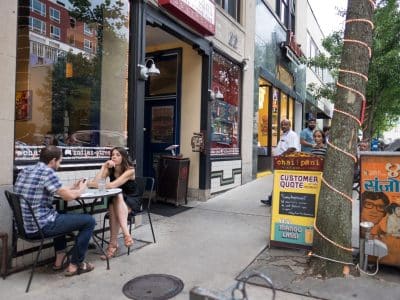
14 Reasons Why I’m Smitten with Asheville, North Carolina

How to Spend Three Days in Savannah


What are you looking for?
90 travel tips & tricks to save you time, money & stress.
After more than 5 years spent travelling the world, visiting many of the best backpacking destinations you can think of, we figured it time to put together our top travel tips!
These are all tips we’ve used over the years and are planning to use on our future travels.
Many have been hard learned after making plenty of mistakes over the years!
So if you're just starting out on your world travel adventures, take note to help you avoid making the same mistakes.
They should help you with everything, right through from planning your adventures, to saving money and even how to stay safe on the road!
Plus, we’ve split this guide into different sections to help you out, you're welcome!
Want our overall top 10 best tips? Here they are ...

Travellerspoint
Travel planning tips
1. take out annual travel insurance .
It’s important to ALWAYS travel with travel insurance.
It’s a silly risk to take if you’re not covered and you’ll soon find that paying for healthcare out of your own pocket is very very expensive.
If you’re taking more than one trip a year, it’s often more feasible to take out an annual policy. Or one that auto-renews each month; but allows you to pause when not needed (which is what SafetyWing offer)
You also need to make sure it includes covid cover which limited travel policies still do.
Luckily, SafetyWing offers both of these things. We have used them and can recommend them as an awesome policy for most travellers. So be sure to check them out and get a quote . They have very straightforward pricing and policy details.
2. The earlier you book, the cheaper the flights
Most flight companies release their flight schedule a year ahead of time, but that doesn’t mean it’s the best deal.
There seems to be a sweet spot when it comes to booking flights, and that tends to be around 4-6 month mark.
That's not to say that you can’t bag some great last minute deals!
However if like us you like to be a little prepared when booking long haul flights, then this is a good guideline to aim for.
Sure, you may be able to save a little more closer to the time, but you could also end up being forced to pay a lot more!

3. Book refundable hotel rooms
You’ll soon find that when travelling (especially when backpacking), your plans don’t always play out.
This means you’ll need to cancel hotel bookings last minute.
Rather than losing out on that money, it's great to use a website like Booking.com or Airbnb, who (most of the time) offer free cancellations (sometimes even on the day you’re due to arrive!)
This has proven really useful for us in last minute situations where circumstances have changed.
To save even more time with this process, I recommend using a price comparison site like CozyCozy which compares properties around a given location.
They rank all properties across both Airbnb & Booking.com, making this search process 10 times easier. And even have the option to only show properties with flexible cancellation terms.
We've got plenty of other travel tips on how to get cheap hotel rooms if you're interested...

4. Start preparing your trip at least 6 weeks before you go
We love a last minute trip, and whilst they are great, if you’re going somewhere that requires a specific visa, then some visa applications can take up to 6 weeks, so bear this in mind when you’re planning your travels.
There are lots of great services online, like Natvisa which take much of the stress out of visa applications and show you exactly what you need to do and how far in advance.
Plus, it’s the same with vaccinations and planning certain tourist sights.
For example, getting tickets for hot spots like the Anne Frank Museum in Amsterdam , or the Statue of Liberty in New York require booking at least a few weeks in advance.
5. Book vacation time well before you go
Most people aren’t digital nomads who work whilst travelling, so remember to book your vacation time well before you go.
If you can, build up your vacation time so that you can really make the most of your trip!
If you’re heading on a city break try and book a Thursday and/or Monday off, so that you can turn it into a long weekend.
A city like Barcelona only needs 2 nights to discover the highlights!
6. Bookmark posts on Instagram to remember great places to visit
This is such a great travel tip and something I’ve started doing in more recent years.
Instagram is a haven for travel inspiration, and you can discover some pretty awesome places, both popular and remote.
If you save those travel photos , you can go in search of them when you visit a location, and lots of time people tag the location in their photos which is super helpful.
I found myself with a lot of places to discover from Instagram when we visited The Philippines .
It was awesome!

7. Bring more than one credit/debit card with you
Don’t make the mistake of just travelling with one bank card.
It’s too easy for it to go missing, to break, be stolen, and there is even the chance that the ATM will not accept it (or eat the card!).
Prepare for this by bringing at least 2 or 3 cards with you.
This could be one debit card, one credit card, and a travel card.
If you’re from the UK (like us) then you should check out Monzo and Revolut .
Here are some guides that you might find helpful if you're looking to get a travel card:
- Monzo Vs Revolut Which Is Best For Travel? [Full Comparison]
- Wise Vs Revolut: Which Is Better? [Detailed And Unbiased]
8. Purchase a quality backpack or suitcase
Before you head off on an adventure, it’s a good idea to research different backpacks and suitcases that will perform well in the environment you’re visiting.
Of course if you’re just visiting one destination that’s quite tourist friendly, then you’ll probably not need something robust and sturdy, but if you’re backpacking for long periods of time in different terrains and places, then you’re going to need a backpack that can handle that environment.
Typically, higher quality backpacks are a little more expensive, BUT, they last a lot longer! My top recommendation at the moment would be the Tropicfeel Shell backpack .
As an added tip, ask for your bag as a Christmas/birthday backpacking gift . Our parents paid for our first backpacks as a Christmas gift before we first set off to South America.
9. Allow at least 1.5 hours between connection flights
Bradley and I have taken a lot of connection flights over the years, and I’ve learnt that there is a perfect balance when it comes to a connection time.
Clearly you don’t want it to be too long, because the wait is just annoying, but you also don’t want it to be too short, because that means there is no room for error.
We’ve often had flight connection times that were 45 minutes, and when our first flight landed 15 minutes late, and we still have to go through security, run to a different boarding gate, or get on the next flight, there suddenly is NOT a lot of time!
We’ve found that a 1.5 hour connection time seems to work well. You’ll have time to go to the toilet and catch a coffee before your next flight.
10. Use Skyscanner before booking any flight
We have never booked a flight without using Skyscanner .
Skyscanner is a flight comparison website and it shows you the best possible flight combinations, in terms of time and price.
You’ll never definitely get it cheaper searching direct (unless you have points of course), so Skycanner is the best way to find the best deals on flights all over the world.
Plus you can set up price alerts if you’re looking to buy flights at the cheapest price!
11. Book tickets online when possible
Booking tickets online for all aspects of travel has become very popular. We are in a digital age where paper isn’t really necessary.
With regards to travelling, this is really useful.
There’s less complication and confusion when everything is online.
Plus, you’ll often see that when you’re booking tourist attractions online, you can get discounts, coupon codes and flash deals that will allow you to save money.
We typically use GetYourGuide & Klook for all our tour needs.
12. Compare tour sites before booking (Klook/GYG/Viator)
On the same note … there are a lot of tour companies online offering different deals and experiences, but you’d be surprised at just how much the difference in price can be between some of these companies.
We always cross-check different websites for the same tour or experience, to see who is giving the best deal.
Sometimes this might only be a couple of dollars, but if you’re on a budget, this will add up!
Here’s all the tour sites we have used and recommend:
- GetYourGuide
- Forever Vacation
- 12Go ← Not for tours, but excellent on transfers

13. Use Rome2Rio to make planning transfers a LOT easier
Rome2Rio is a fantastic website which lets you type in any two locations in the world and it will give you all the options of getting there, alongside the estimated cost.
This is really good, not only for planning a travel route , but also for quickly working out a rough budget.
The one thing I will say is to never take their prices as a firm answer.
When it comes to actually booking, prices on your chosen days can be a lot different, so instead use them as a rough estimate.
14. Check into your flight as soon as it opens to get seats together
It’s really annoying when you book flights with your friends or partners and the airline wants to charge you $30 a seat each so that you can sit together.
I don’t think it’s justifiable.
But there is a way around it.
All airlines will tell you the exact time their check-in will open for a flight.
I suggest you set an alarm and check it right at that moment, and you’ll likely get to sit next together.
This has always worked for us, especially on long haul flights.
Some airlines, like Ryanair, purposely seat you away from each other because you didn’t pay for extra seats, but they’re a short haul airline, so it’s fine!
15. Use Facebook groups for local experiences
A great way to discover local experiences that are low-cost, or free is via Facebook groups.
Most popular destinations will have a Facebook group that’s dedicated to sharing information about travelling around that destination.
We found this group super useful when planning our visit to Sri Lanka.
At the time, drone laws were incredibly vague in Sri Lanka and this group was vital in helping us to find out if we could take our drone and also to providing unique spots to film.
Here’s 2 other groups we’ve used regularly over the years:
- Travel Around the World - Backpackers
- Backpacking Europe
Packing tips
16. plan your clothing for all the seasons you’ll be experiencing .
If you’re doing an adventure trip but you're only going to warm destinations, then you certainly won’t need a thick jacket, jumpers or a hat.
So don’t pack those unnecessary items.
BUT if you’re planning on visiting somewhere like South America , where you will pass through a variety of climates from very hot to very cold, then you’ll want to plan for that.
Especially in that continent where buying warm clothes isn’t cheap.
I remember being stood outside of Ushuaia airport in southern Argentina, shivering under a blanket because we hadn’t brought any cold weather clothes with us!

17. Don’t bring more than 2 pairs of shoes
When we first started backpacking, I’m pretty sure I took 4 pairs of shoes with me!
I had hiking boots, I had trainers, I had a pair flip flops and I had a pair of Skechers.
This is WAY too much. I now carry two.
I always have my water shoes, and a pair of Skechers or Tropicfeel shoes which work well for walking and day-to-day outfits.
If I need other shoes, such as flip flops, I’ll buy a cheap pair in the country I’m visiting.
If you’re heading on a shorter trip, then sure, you can throw in your favourite pair of sandals or boots, but not when you’re backpacking for a longer period of time.

18. Bring enough underwear for at least a week
I guess this also applies to all clothing.
Basically pack enough clothes for a week.
I’m not talking about full outfits either, it’s easy to bring 2 pairs of shorts and a couple of tops and suddenly you’ve got like 5 different outfits.
But always pack a week's worth of underwear. I actually bring about 10 days worth, simply because I always seem to lose something.
19. Bring ear plugs
Ear plugs are really useful for a lot of occasions when travelling.
They’re perfect for plane travel, when you want to get some sleep, they’re really good for hostels, perfect for busy cities when the walls can’t drown out that city noise, and super long bus and train journeys throughout the country.
Or, if your partner simply snores a lot!
If you struggle sleeping in different light conditions, then an eye mask might be a good idea too. But these are typically provided on long-haul flights so you can just take it off the plane with you.
20. Pack a small towel with you
When we first started travelling we used to bring a big towel each.
Turns out, it just took up too much room and it was unnecessary as every hotel we have ever stayed in has provided us with towels.
But bringing a small towel is a great idea for the days you are chasing waterfalls or by the beach and need to dry yourself off.
Here’s a great lightweight, fast-drying towel .
21. Don’t bring lots of hair products/body wash products with you
Lots of people make the mistake of bringing shampoo and conditioner, body wash, and maybe some lotion.
This really isn’t necessary.
Firstly, it takes up valuable space, and valuable weight from your luggage.
Rather, most hotels and hostels will provide you with these, and if you wish, you can pick up a smaller version of them at the airport, or even in the country you're visiting.
There is no real need to bring your own with you (unless you have a specific skin condition).

22. Use packing cubes
Packing cubes are an excellent way to maximise the space in your suitcase or backpack.
They are also very useful for bringing some sort of organisation when travelling.
You’ll also find you can fit more in when you use packing cubes, because you become strategic with how you pack.
Again these are easily purchased online .
23. Always pack a sarong
This is more relevant for women, but it also is necessary for men in quite a few countries.
A sarong is required at a lot of religious sites across Asia.
When you’re travelling in a hot continent like Asia, naturally you want to have lightweight clothing on, which usually means your shoulders are exposed.
This is a big no-no if you want to enter certain religious sights, so having a lightweight sarong with you is an easy way to cover up .
Plus they’re great as cover ups by the beach, or or lie on instead of a towel.

24. Bring a small travel first aid kit
We always travel with a small first aid kit that’s packed with the essentials.
This includes paracetamol, flu tablets, tablets to help your tummy when issues arise due to food, plasters, antiseptic cream and a couple of bandages.
You may wish to put more or less in, but that tends to be a good start and will help you with any minor issues.
25. Pack your backpack, then remove a third
Overpacking a backpack is so easy to do. I mentioned above that a week’s worth of clothes is enough, but naturally when you start packing, you’ll do more than that- trust me.
So I suggest you pack your backpack with everything you think you need, then you get rid of a third of it.
You will thank me later when your back isn’t killing you and you realize having an extra 3 dress, or shorts is unnecessary.
For more of an idea what to bring, check out our travel packing list !
26. Bring extra memory cards
Travel is all about creating memories and most people don’t travel with a laptop like Bradley and I do.
So you’ll not have a way to back up your photos and delete them to create space on your memory card.
So rather than having to delete precious photos, I suggest you bring extra memory cards with you .
This means you never have to miss out on an epic photo.
Here’s the memory cards we use (oh, and be sure to grab a hard case as well so as to keep them all safe and organised!)
27. Bring a light jacket
Always bring a light jacket when travelling.
Not only do they class up an outfit (when needed), but even if you’re visiting the hottest of countries, it tends to get chilly in the evenings.
You’ll also notice that when your body starts adapting to the heat, you’ll feel colder at temperatures you never thought you could!
They’ll also keep you warm on the plane and bus journeys that are typically cold from air conditioning.
28. Test the weight of your backpack and make sure you can actually carry it
This goes hand-in-hand with your overpacking.
But whilst avoiding overpacking is important, it’s also important to consider the weight of what you are packing.
Remember, you’re going to be carrying your backpack around with you.
And if you’re on a real low budget, then you’ll probably be walking from train stations to your accommodation.
It’s therefore important to test the weight against what you can actually carry.
Pop your backpack on and go for a 10 minute walk, you’ll soon find out whether it’s too heavy or not.

29. Carry a small bag within your backpack for dirty laundry
Keeping your clean and dirty clothes separate is not only great for your sanity but for obvious cleanliness reasons too.
Just bring a small extra bag that you can pop your dirty clothes in, then this is the bag you can send to the laundry room when washing clothes!
Bradley and I share the same bag to save space.
30. Bring toilet roll tissues with you
In a lot of countries, toilet roll is a luxury, and if you’re doing some serious travelling you will find yourself going to the bathroom in a hole in the ground where there is no form of toilet paper.
Just the classic bucket of water situation.
I always suggest you carry a roll of toilet paper, or if on day-trips then a packet of tissues that you can use when necessary.
31. Use a packing list to help you pack
Packing lists are a really useful way to visually see and check off everything you need to bring with you on a trip.
You can either create your own, or use an online list and combine it with yours to make sure you’ve covered all angles.
We’ve actually created some pretty cool packing lists for certain destinations that you can check out below.
- Sri Lanka Packing List
- Thailand Packing List
- Bali Packing List
- India Packing List
32. Bring an universal adapter
You can’t travel without a universal adapter.
It’s an absolutely travel necessity!
Adapters can change from country to country, so a universal adapter will allow you to stay charged whilst travelling the world.
We recommend this one here.
Sightseeing travel tips
33. don’t overplan every detail (learn to go with the flow) .
I LOVE to plan, but sometimes that’s actually a downfall.
Sometimes when you overplan everything, you become rigid and restricted in what you can and want to do.
This means if something doesn’t go to plan, you’ll be disappointed or frustrated.
Well, things will not go to plan all the time, so it’s important to learn to go with the flow.
Some of our best travel adventures and memories were completely unexpected.
34. Wake up early to beat the crowds
If you wonder how people take great travel photos with no one else in the background, it’s the art of getting up early.
Most people often think “oh it’s just Photoshopped”, not always true.
If you’re one of the first people to arrive at a destination, then you’ll easily beat the crowds!
It’s really nice having a spot to yourself before others arrive, it gives you a sense of peacefulness and excitement.
You’ll really have the chance to appreciate your surroundings.

35. Only carry what you need when sightseeing
Only take the bare essentials when you're sightseeing.
If you’ve got a lot of important documents and items with you, you’ll spend most of your time worried that something will be stolen, or has gone missing.
Take only what you need and it’ll be a lot less stressful. Don’t flash your cash or fancy jewels either.
It just puts you at increased risk from thieves.

36. Eat local
Now, I can’t say that I’ve never been to a Mcdonalds in a foreign country.
It’s a great place to pee and get a coffee or a snack at night, but don’t let that replace the amazing local cuisine that will surround you!
Try new foods, ask locals for food recommendations and support the local businesses.
I have to say our favourite country for amazing local food is India .
India has the best food in the world, and after 3 weeks of eating there we never got the dreaded Delhi Belly .

37. Bring a decent camera to take amazing photos
Whilst you don’t need a super expensive camera to take great photos , it’s still worth having a phone or camera that can take good quality pictures.
You will constantly be surrounded with the opportunity to take pictures and you should!
Photos are the best way to capture a memory and look back on it in the future.
When we travel, we take:
- Our blogging cameras
- Our travel drone
- GoPro/Alternative action cam

38. Bring a GoPro if you’re going somewhere water-based
If you’re travelling somewhere that’s famous for it’s waters, then you’re going to want to bring a GoPro - trust me.
We didn’t bring a GoPro to The Philippines and honestly it’s one of the biggest travel regrets we have!
If you want awesome underwater footage, great snorkeling pictures etc, then bring your GoPro! Or a great quality GoPro alternative that can capture epic places in just as much detail.
We now have the GoPro Hero 9 and the quality is just fantastic.
39. Don’t be afraid to get lost
Getting lost often leads you to new places and new adventures, so don’t be worried when you do.
When you get lost for real in a destination, locals are more than happy to help you find your way back.
So enjoy the experience of where you are and take the unknown road. You never know where it could lead!

40. Try new things (but don’t be afraid to say no)
Travelling is all about pushing yourself to try new things and new experiences in a new country. This is fantastic, but don’t be afraid to say no.
If you’re terrified of something, don’t just do it because you feel like you have to because you’re travelling, or it’s “for the Gram”.
Only do things you are genuinely interested and comfortable doing.
Just because someone else is doing it, doesn’t mean you need to either.
Especially if said thing is unsafe.

41. Get friendly with locals
Some of our favourite travel moments are from making friends with locals.
We’ve met some amazing people over the years and chatting with people who live and breathe the country you're visiting is such an amazing way to get real insight into what the country is like, rather than just what’s in the guidebooks.
Some of my favourite moments are enjoying a fire with the locals outside in Nagarkot (Nepal) , chatting about life and learning about Nepaliese pop music, and meeting awesome locals in El Salvador who invited us for surfing and a really great night out.
They’ll also find you locations to discover that you didn’t know existed!

42. Be respectful & mindful
Different countries have different religions and rules that need to be abided.
Just because it’s something you’re not used to, or you don’t necessarily agree with, doesn’t mean you just blatantly ignore it.
For example, in Muslim countries it’s important not to go around showing off loads of skin.
Local people are tolerable to a certain extent of course, but it’s nice to be respectful of a culture and to reflect that in your actions when visiting their country.
Failing to do so could land you in a lot of trouble.
43. Ask permission when taking pictures of locals
It’s important to remember that when you’re a new destination, the people of that country aren’t zoo animals that you’re looking at.
So what I mean is, that you can’t just take close up pictures of them without asking.
You’ll often find most people say yes to pictures being taken, but just ask first.
This is especially true if you’re taking pictures of local children. Just be wary of what you’re doing.
I have to say, I wish this worked the other way.
When in India I felt like I had the paparazzi with me anywhere I went.
People were constantly taking my picture, to the point crowds would form and I would be overwhelmed. I’m not joking .
But, I realise I look unique to them, so I accept it to a certain extent, but say no when I feel uncomfortable.

44. Bring a power bank with you when on long day trips
When you’re using your phone to navigate yourself, taking pictures and using Instagram or other apps, you’ll find that your battery is going to drain pretty quickly.
This can often be really frustrating, so I suggest bringing a power bank with you so that you can keep your phone charged when out on your adventures.
Better yet, grab a solar powered one that recharges itself throughout the day!
45. Google translate can be useful when you’re struggling to communicate
Google translate has saved us quite a few times!
It’s all well and good knowing little bits of the local language, but if you need to ask something specific, you’ll run into problems.
A great way to overcome this is simply by using Google translate.
It’s also a good way to learn new phrases too!
46. Don’t be afraid to see the generic tourist attractions
There seems to be some sort of stigma when it comes to sightseeing certain attractions.
So you’ll often see bloggers and travellers stating things about getting off the beaten track, and “alternative things to do in, such and such”.
Well, that’s great, but it’s also completely fine to see the generic popular sights of a city or country.
They are popular for a reason.
I wasn’t disappointed by a single sight when we visited Rome , but they were all very touristy. Who cares! It’s your trip, see and do whatever makes you happy.

47. Rent a car at your destination when possible
There is no better way to explore a country than with a set of wheels.
Whether it’s a car, moped, or a tuk-tuk ( like we had in Sri Lanka! ), having your own vehicle allows you to explore far more than you ever could on a tour.
Even just driving the local roads will give you a whole new perspective on a country.
We always suggest that if it’s possible, then rent a car for at least a day and head out and find new things to discover.
Rentalcars.com is a great website to compare rental car prices around the world.

48. Or better yet, a campervan!
If the opportunity is there, then 100% get a campervan.
Our favourite trips around the world have been in campervans and it’s our go-to form of transport when planning most new trips .
We’ve had the opportunity to wild camp in some of the most epic locations around the world.
The most memorable being around Norway when we saw the Northern Lights almost every night!
A campervan is a great way to just emerge yourself in the nature and surroundings of a country and it can be a useful way to save money as you’ll be combining accommodation, cooking and travel costs into one. Living and travelling from a campervan is also becoming more and more common .
Useful guides:
- Best campervan rentals in Norway
- Best campervan rentals in Portugal
- Best campervan rentals in France
- Best campervan rentals in Scotland
- Best campervan rentals in Ireland

49. Use Atlas Obscura to find cool sights off-the-beaten-path
Atlas Obscuras has proved extremely useful is finding the most random attractions, but also great fun.
For example, when road tripping Sweden , two of our favourite spots were found through Atlas Obscura:
- Esrange Space Centre ← Yes, we got to visit a space centre!
- Lovikkavanten ← The world’s largest hand-knitted mitten .. I know, jealous much!?
They weren’t mentioned on any other travel blogs so we’d have missed them otherwise!
If you’re revisiting a destination you’ve been to before, or you’ve managed to see all the sights you want to see and still have some time left, then this is a fantastic way to discover even more. Seriously a lot of the time you wonder how these places were even found!

Budget travel tips
50. don’t be afraid to haggle .
In many countries, when you’re at a market or even trying to buy a tour from a local street vendor, haggling is expected.
Of course there is a fine line between getting a great deal and offending someone.
Naturally, when locals expect you to haggle, they start you off at a price that’s crazy high (something you would never pay back home), that’s because they expect you to cut it by half and start your negotiations from there.
Sometimes, if you’re haggling for the sake of a couple of dollars it’s not worth it, so you may just want to pay the little extra.
But haggling can be a lot of fun once you get the hang of it, and a great way to share a joke with a local!

51. Lunchtime always has the best meal deals in restaurants
We’ve found this to be the case in many countries all around the world, such as Bolivia, France, Ireland , Peru, and Spain.
Lunch time is the time of day you can get great meal deals in restaurants.
Typically it could be a set menu for a low price (in Bolivia it’s $2 for a 3 course meal!), or all lunch dishes are $5, and things like that.
So if you want cheaper food, then have your bigger meal at lunch time and something smaller for dinner.

52. Book a hotel/hostel that includes breakfast
Tonnes of hotels and hostels include breakfast in their rate, but if they don’t, you’ll often have the option to add it on.
In Asia, this typically costs an extra $1-2 so it’s worth doing.
When possible, we try and choose an accommodation option that includes our breakfast.
That’s one less meal we have to worry about paying for!
If you’re really tight on money, you could also book accommodation that has cooking facilities so you can cook your own lunch and dinner.

53. If you’re still a student - don’t forget your student card for discounts
We aren’t students any more, but when I went to South America , I still had a valid in-date student card and was able to get some great discounts, especially on famous sights in Rio de Janeiro. You’ll also get lots of discounts throughout Europe, so it’s definitely worth bringing your student card with you on your travels.
54. Take advantage of free walking tours/travel experiences
Most cities nowadays seem to offer some form of free walking tour and over the years Bradley and I have partaken in quite a few.
They are a great way to get some extra insight into a destination and work out sights you want to return too.
We did one in Rome which was excellent, and in Buenos Aires which was fantastic! Of course when they mean free, it doesn’t mean totally free.
You should give your guide a tip, as that’s what their earnings are based on! It’ll always cost less than actually forking out for a tour.
55. Shoulder season is the BEST time to travel
Shoulder season is brilliant for a variety of reasons.
Firstly there are less people and the weather is usually still great, but the most appealing reason is that it’s always cheaper.
You’ll get cheaper flights, cheaper accommodation and even cheaper entrance fees.
So shoulder season is the sweet spot for anyone wanting to save money whilst travelling.

56. Travelling with a friend or partner is always cheaper
Whether it’s a romantic partner or a great friend, travelling with someone else always seems to work out cheaper.
You’ll be able to get a twin room/double room often for less than it costs for two dorm beds, you’ll be able to haggle for better prices on tours, and you can split food bills and taxis.
It’s one of the reasons Bradley and I love travelling as a couple !

57. Carry one laundry soap bar and wash the basics yourself
Laundry soap bars are very cheap and a great way to keep on top of your washing.
When travelling, doing the laundry is actually time consuming, so we often try to do it once a week, or every 10 days, but this means we might run out of basics, like underwear.
When you’ve got your own laundry soap bar, you can clean these yourself to stay on top of things.
58. Use Revolut/Monzo for the best exchange rates (avoid airport exchanging)
Monzo and Revolut are two digital banking systems that offer the best exchange rates on the market.
There is no hidden detail or charges, it’s very basic and you get the best exchange rate available.
You also get no charges for withdrawals up to a certain amount, which in the UK is £200 per month on each card.
So we often travel with two cards each, which means we get £800 worth of free withdrawals between us monthly.
You’ll find that most places take cards nowadays anyway, so you never really go over the limit. But even if you do, it’s only a small percentage (2%).
Exchanging at the airport is a waste of time and money.
Just withdraw your money from the ATM at the destination you’ve arrived at with your travel card.
REMEMBER, when the ATM asks you to choose either the ATMs exchange rate or your bank’s, you choose your bank’s.
This option is sometimes called: “continue without conversion”.
59. Couchsurfing is a great low-budget accommodation option
We’ve only done couch surfing once, when in Chile, but it was amazing.
We ended up staying with a wonderful couple who we are still in touch with today.
Staying with locals allows you to really see more of a country from a local perspective and it’s a great way to make new connections.
Plus, couchsurfing works on a free basis.
You stay at the hosts home for free, and in return, you are typically just expected to spend some time with and get to know them.
You really never know just who you might meet!
60. Use local transport to save money
Local transport is always cheaper because locals use it.
It’s true, in some countries local transport is over-crowded, not very safe, and just very manic.
But if you like a challenge, then it’s always fun to use and the cheapest way to get around.
It’s always best to just ask a local for advice with local transport.
Tell them where you want to go and they’ll point you to the right train or bus.


61. Pick up a Handpresso and still have great coffee every day
This is an awesome device I recently discovered as Bradley got me one for my birthday!
This nifty device allows you to make real espresso on the go!
All you need is your coffee and hot water and you’re ready to make great coffee.
I’m a coffee lover, and sometimes I miss espresso coffee when travelling, especially when on a road trip , so this is a brilliant alternative and a great way for me to get my caffeine fix!
It also means you can pick up local coffee from around the world and try it when travelling. Central America is a great place for this since it has so many amazing coffee regions including, Nicaragua , Honduras, Guatemala , Costa Rica & El Salvador .
62. Make full use of sign up codes
Sign up codes are a great travel tip when you want to save money for travel !
Lots of accommodation websites use sign up codes to entice you into your first booking, and if a sign up code requires an email address, remember you can use different email addresses to reuse the code on different occasions.
Here are a few of our sign up codes you can use to get started:
Be sure to pass your own referral code onto friends and relatives so you can benefit again and again!
Travel safety tips
63. always bring a lock for your bags/items .
A lock is a good way to help keep your items more secure.
I do think that they aren’t full proof, because if someone wants to steal your stuff, then a lock won’t stand in their way.
But it can act as a deterrent. Locks are cheap, just make sure you don’t lose the keys!
64. When carrying medical supplies: split between two bags
Since I have type 1 diabetes, this is an important factor for me, but lots of people travel with some sort of condition or illness and if that applies to you, then make sure you split your important supplies between two different bags.
It could be your bag and your travel partners bag, or a day bag or a main bag.
This means if something gets stolen (or ruined), you have a backup plan.
65. Ask locals for advice on the local safety
No one knows the safety of a city or country better than the locals themselves.
Ask your hotel staff or guy at the coffee shop if the area is safe.
Ask if there are anything extra precautions you should take, can you walk alone at night, should you trust the taxi drivers, etc.
You’ll often find that locals want to keep you safe, so that you can encourage others to visit, so they’ll be open and honest. We’ve always found this.

66. Be careful with who you trust
Unfortunately not everyone you meet will have your best interests at heart.
So, you need to find the balance between trusting people and having your guard up.
This is actually a pretty difficult balance to find, especially when you’re approached by locals in the street.
You just need to keep common sense.
If you ask for directions and you know it’s somewhere left, and the person you ask is directing you another way, then the chances are, they’re not trying to help.
This happens in Marrakech a lot. Some people are genuine, but you just need to be wary.
67. Let someone else know your travel plans
This is pretty easy to do if you’re sharing your travels on social media.
Often I’ll say on Instagram stories what the plans are for the day, where we are going, and this is really useful if suddenly we were inactive, someone would know the last place we said we were.
This also works for if you’re travelling solo, tell someone at the hostel desk where you’re planning on heading out to, or let your friends and family know back home, so that if they don’t hear from you, then they have a starting place on where to look.

68. Don’t put all your money/bank cards in one bag
I’ve mentioned before the importance of taking more than one bank card with you when travelling, but it’s also smart not to place them altogether.
You should separate your cards into different bags so that if one bag goes missing, you’ve still got another.
69. Plan your routes (at least roughly) before you go on an adventure
This is more applicable to daily days when travelling.
If you’re heading out for the day it’s a good idea to plan your route before you leave.
This means you’ve got an idea of when places close, and ensure you’re closer to your hotel/hostel before dark.
It also allows you to feel secure in where you’re going, so if someone tries to offer you advice that throws you off track, you can stick to the route you had planned.
Of course things change, but it’s good to be prepared.

70. Save the address of your accommodation on your phone
Always save your hotel or hostel on Google Maps .
This means if you get lost, or you need to show someone where you’re staying, you can show on Google maps rather than trying to explain verbally in a language you probably don’t speak. Locals can often work out where your hotel is once you show them a map, or if not, you can direct the taxi driver yourself to ensure you get back okay.
This is another reason why we love Booking.com ; their mobile app syncs up to Google Maps; so once you’ve made a booking, you can quickly click through from the app to the exact location of the property on maps.
Other general travel tips
71. learn common phrases in the language of the country your visiting .
Not only is this a very useful travel tip, it’s actually pretty fun!
I really enjoy trying to learn basic phrases in the language I visit.
And honestly, this is one of the reasons I love visiting Central/South America, basically anywhere that speaks Spanish, because I love learning the language!
You don’t need to know a lot, just basic, “hello”, “thank you”, “do you speak English”, tend to be useful and the locals really appreciate it.

72. Make photocopies of important documents & digital copies
This is really important.
Your passport is pretty much your most important document when travelling, you’ll need it to get into and out of a country.
Sometimes it’s required in certain countries that you carry your passport with you daily for random spot checks.
I can tell you that in all my years of travelling, this has never ever happened.
So, instead I would carry a photocopy of my passport, and if they need further information, then I’ll just have to bring my actual passport to a station at a later date.
With regards to health insurance documents and visa documents, make sure you have digital copies of those with you that are easily accessible.
73. Always carry extra passport photos
This is a really useful travel tip, that I only learnt from experience.
You’ll need passport photos for random things, it could be a visa application at a border, or it could be to get a local sim card (this happened in India ).
It’s really useful to carry just one or two passport photos with you and I usually keep mine in the back of my phone for safekeeping and easy access!
74. Make sure your phone is unlocked to use local sims
Local sims are the easiest and cheapest way to stay connected when travelling abroad.
We’ve used local sims all around the world, from Nepal the USA, and they’ve always proven to be better value for money.
You just need to ensure that your phone is unlocked, which basically means your phone will allow you to use another sim.
Speak with your phone provider to find out if your phone is locked or unlocked.
75. Plan for the unexpected
We always plan for the “what could go wrong” before we head off on a big trip.
You can’t predict absolutely everything, but it definitely brings you more confidence if you’re ready to accept some of the potential mishaps that could happen.
For me, I like to have a rough idea of how I can get a hold of type 1 diabetes supplies, just in case something bad happens and my supplies get lost or broken.
If you like to be particularly cautious, you could always go ahead and download important local numbers, such as health services or the police.

76. Bring your own water bottle with you
In the eco-friendly world we live in, or aspire to live in, this is definitely a great tip.
Bringing your own water bottle with you will ensure you use less plastic, and it also means you’ll save money on buying countless bottles of water.
Lots of cities have water fountains, and typically if you ask your hostel/hotel or a cafe to fill up your water bottle, they will!
You can get water purifiers too (if you’re worried about the quality of water you’re drinking).
77. Bring your own coffee cup with you
I’m a coffee fanatic, and this is something I’ve started doing on my recent travels.
I now bring my own little pop up travel coffee cup that I use daily.
This is perfect if you want to bring your coffee with you on the go, and if you’re grabbing a coffee from a cafe, you can use your own cup.
It’s also handy for it to be collapsible as it saves space in my bags.
78. Slow travel is better than fast
Slow travel is not only cheaper, but it’s just an all round better experience.
You’ll get the chance to really immerse yourself in a new culture and way of life, and you’ll feel much more relaxed when sightseeing and visiting a country.
There’s nothing worse than being super stressed that you’ve only got a day to see all the best sights in one location, then rushing through them and not really admiring or connecting with what you’re actually visiting.
We’ve learnt this over the years, and I much prefer to give myself extra time than rush through a destination.
After all, our mission is to see every country in the world, but we have a lifetime to do it!

79. Listen to your body & know when to rest
Travel burnout is a real thing and when you’re constantly on the move, constantly taking in new situations, experiences, your brain is on overdrive a lot of the time.
Eventually you’ll just feel overwhelmed or super tired and you lose interest in what you're seeing. These are all signs that you just need to take a day or two to do nothing.
Just relax, reconnect your thoughts, and then you’ll be ready to take on the world again!
80. When flying, only sleep when your destination is sleeping (jet lag tip)
I never get jet lagged (well, hardly ever) and it’s because I stick to this one rule:
I only sleep when my destination country is sleeping.
So if I’m on an overnight flight, but my destination is awake, then I’m awake too and if I arrive in a country and I haven’t slept in hours but it’s not bedtime yet there, I force myself to stay awake.
It’s a challenge, but it means you reset your body right away, so when you wake up, you’re already connecting to the new time zone.
I sleep really easily, so this marks it easier for me. But, it’s a good travel tip that genuinely works!
For more flying tips, check out my guide on the best things to do on long flights .
81. Wear sunscreen!
It’s really important you protect your skin when travelling.
The sun is a powerful thing and damage to your skin, and skin cancer is a real possibility if you do not wear suncream.
If you’re going to be swimming and snorkelling, then opt for reef safe sunscreen when possible. But don’t let yourself burn!
Suncream will be more expensive in hotter countries, so if you can get a great deal for suncream online, or in your hometown, stock up there.

82. Move your feet and legs regularly on long haul flights
People actually underestimate how easy it is to get blood clots in the legs when flying long haul. It’s really important to keep your feet moving.
My legs have swollen a few times, and it’s not great! Wear flight socks when flying long haul, and get up and walk around the cabin.
If you don’t want to get up a lot, then just do little feet exercises at your seat.
83. Carry hand sanitizer with you
This is a pretty basic, but important travel tip … always carry hand sanitizer!
A lot of the toilets you’ll be visiting if you’re backpacking will not have any sort of cleaning facilities in place, and it’s super easy to pick up infection.
Clean your hands before you eat too, as again, you don’t know what you’ve been touching all day.
84. Download offline maps for your chosen country
This is really useful when you don’t want to drain your battery with your internet data on whilst sightseeing.
Mark all your sightseeing locations on Google Maps and download offline maps so that you access directions without the internet.
This has been super useful for us when travelling and I can’t imagine how we survived without it before!

85. Carry small change
Whilst a lot of places accept card payments nowadays, when you visit very local places, the chances are, no cards will be accepted.
So it’s good to have a small change with you.
Small change is also useful for local transportation.
For example tuk-tuk drivers can’t break large notes, and it’s also good for restaurants and cafes when you’re leaving a tip!
Try to use larger supermarkets and stores to break change, rather than a local market which will be less willing or able.
86. Always check under the bed when leaving a hotel room
As you travel more frequently, you’ll begin to develop your own little routine for hotel check-outs. But one tip I can give you is to always check under the bed!
Stuff constantly falls underneath or even between the bed and you could misplace it easily. Bradley will confirm this, but we always find one sock under the bed before we leave hotel rooms...and that leads me to my next tip ...

87. Accept the fact you will loose socks
I don’t know why I keep losing socks, I don’t do it intentionally, I try to keep track of them, but I always end up losing my socks when travelling!
They’re either stuck in between the beds, or they go missing when laundry is done, but you’ll just have to accept that those darn socks will disappear.
88. Use a VPN to maintain access to your favourite sites
VPNs are not only a great way to protect yourself online, especially when using the internet in foreign countries where connections might not be as secure.
But, it’s also perfect for being able to access websites that may not be accessible in your destination.
For example, in China where a lot of social media networks sites are blocked. Or if you just want to access Netflix movies from another region!
There are lots of great VPNs on the market, but we can recommend this one for your travels.
89. Keep in touch with family and friends (but not too much!)
It’s important to strike a balance when it comes to staying in connection with your friends and family.
If you’re in touch too much then there is a good chance you will start to get homesick, whereas if you ring them weekly it’s fun to catch up on all the awesome activities and things you’ve seen that week.
Don’t feel guilty either, you’re family and friends want to have fun on your trip of a lifetime!
I find that Instagram story updates are a great compromise.
That way, your friends and family can see what you’re up to every day and you don’t have to repeat the same stories for everyone!

90. Make sure you vaccinated
Lots of people decide to take the risk when it comes to travelling and vaccinations, but I think this is a silly attitude.
The conditions you’re getting vaccinated for can kill you, so why would you take the risk .
Most vaccinations last a couple of years, and some a lifetime, so it’s an investment into your future travels.
To find which vaccines you need for different countries, it’s always best to visit a travel nurse before you leave!
Oh, and make sure you visit at least a month in advance (ideally 2) so that you have enough time to receive the different vaccines needed.
Digital nomad?
Do not leave home without ensuring you have access to good quality internet, regardless of where you travel with a wifi hot spot .
GlocalMe are a great option for this, they have a range of devices to help you stay connected throughout the world.
We've been using their Numen Air, which is truly the best global 5G portable WIFI hotspot we've used!
If you're interested in being a digital nomad there are plenty of fantastic travel-related jobs out there...
What is your top travel tip?
So there you have it, our ultimate travel tips that will hopefully help you plan the perfect trip and ensure you have a fantastic time on your adventures!
Now over to you ...
Drop a comment below letting me know either:
- What travel tip you found the most useful
- What is your top travel tip that you think I missed out from this post!
I'm always keen to pick up new travel tricks so would love to hear your thoughts and ideas!

Leave a comment
Let us know what you think.

5 million people can't be wrong
- Switzerland
- New Zealand
- United Kingdom
- United States
- Work With Us
- Blogging Bootcamp

- Van Conversion Academy
- Campervan Shop
- Campervan Rentals
- Plan a Trip
- Itineraries
- Destinations
- Responsible Travel
- Family Travel
- Budget Travel
- Scuba Diving
- Travel Credit Cards
- Digital Nomad
- Teach English Abroad
- Blogging Resources
- Income Reports
- Travel Shop
- Meet Katie & Ben
- About Two Wandering Soles
- Personal Stuff
- Portfolio & Press
35 Expert Tips for Visiting Japan (Dos and Don’ts!)
Home » Blog » Japan » 35 Expert Tips for Visiting Japan (Dos and Don’ts!)
In this article we’re covering essential tips for visiting Japan, plus helpful advice we learned from personal experience that’ll ensure you enjoy your time in the Land of the Rising Sun even more!

Before you hop on that flight to Japan, there are some things you should know.
This country has a complex culture, and there are definitely some manners and “norms” you should be aware of. There are also some Japan-isms that will leave you scratching your head… like, what are all those buttons for on Japanese toilets anyway?!
Don’t worry, we’ll give you the scoop! We’ve traveled to Japan three times now (and counting!) and have picked up some pretty good travel tips along the way. In this article we’re going over the essential tips for visiting Japan you should know before you go.

If you’re planning a trip to Japan, we have the ultimate resource for you!
This FREE PDF download includes everything you’re going to want to pack for your Japan trip, including what NOT to bring, plus tons of insider tips!
Sign up for our ultimate Japan packing list now and get a copy sent straight to your inbox.
1. Don’t worry too much about the language barrier
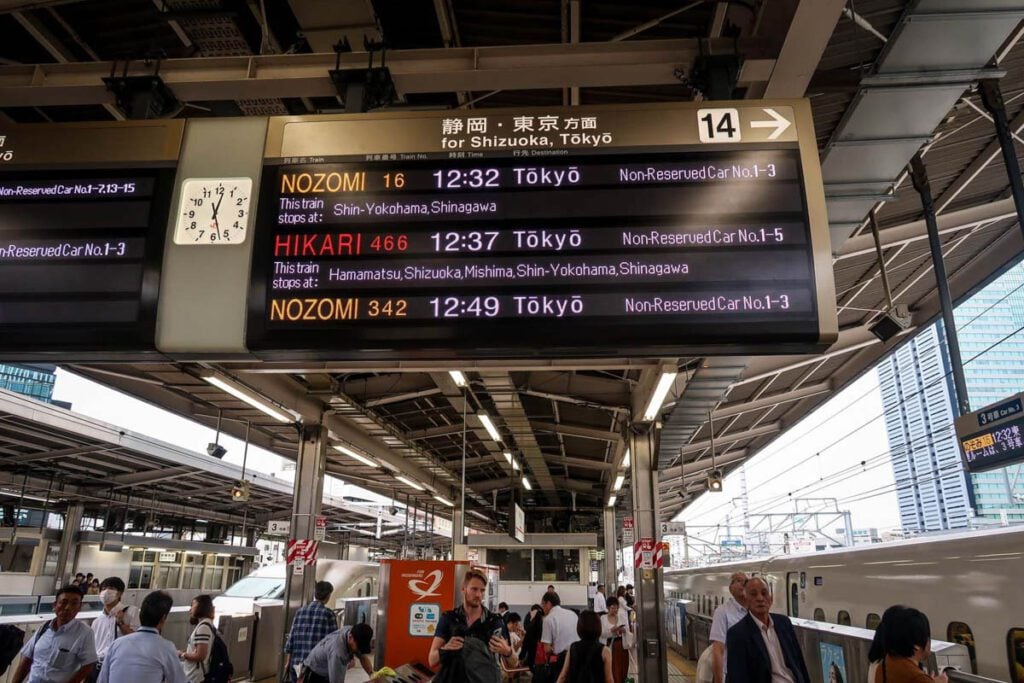
One of the things we get the most questions on is the language barrier in Japan. And after reading guide books and articles online, it can seem like traveling in Japan without speaking Japanese is impossible. But that’s far from the truth.
Honestly, we didn’t feel like the language barrier was too bad. (That said, we’ve spent a cumulative 3+ years living in and traveling through Asia, so we are used to language barriers.)
It is always respectful and recommended that you learn a few helpful words or phrases in the country you’re visiting, but we want to point out that it is possible to have a fantastic trip to Japan without having mastered the language.
This should put you at ease:
- In the event that you have a question, go to the JR counter and speak to an employee. They should have a translation device, which will help in the event that they aren’t confident with their English skills.
- Oftentimes restaurants have English menus (some even have pictures!)
- Hotel staff usually speak a bit of English
- At most restaurants there is at least one staff member who will be able to communicate with English speakers
- Oh, and the Google Translate app is literally the BEST THING EVER. Read about more apps we recommend downloading for your trip to Japan !
- Japanese people, in general, are very polite and kind. While they may not approach you, if you ask for help they will usually do their best to assist you or point you in the direction of someone who can help.
Learn a few words in Japanese, as it will show you’re trying. And be patient. Remember, you are a guest in another country, and while some people may know a bit of English, it is not their first language.
Helpful words & phrases in Japanese
- Hello: Konnichiwa (also means “good afternoon’)
- Good morning: Ohayō gozaimasu
- Thank you: Arigato gozaimasu (the “u” on the end of the word is almost silent)
- Excuse me: Sumimasen
- Cheers!: Kanpai!
- Delicious: Oishī
- More practical Japanese words and phrases
If you take one thing away from this point, I hope that it’s this:
There will be a language barrier while traveling in Japan, and you can’t expect people to speak English. BUT, it is definitely possible to communicate with simple vocab words, the Google Translate app, and a bit of patience.
2. Japan is super safe
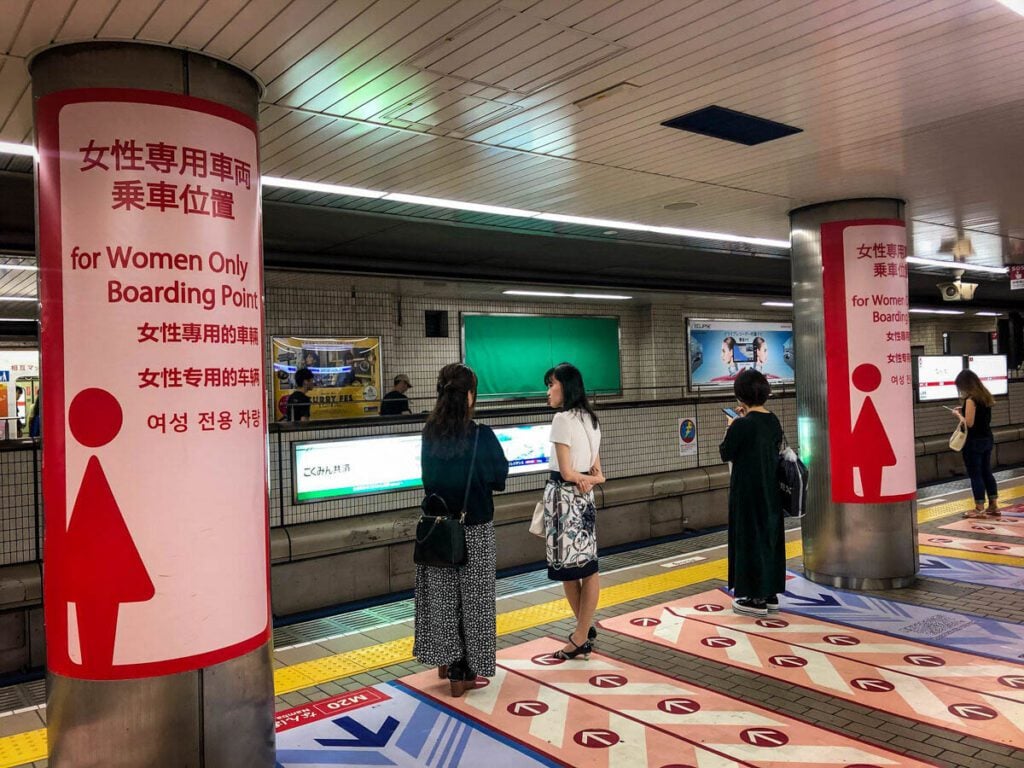
Like, very safe. Of course, you’ll still want to use common sense on your travels in Japan, but the chances of you encountering any dangerous situations or theft are very slim.
We’ve known people who have left their wallet on a crowded subway in Tokyo, only to have it hand-returned to them hours later. The thing we had to get used to was being mindful of our belongings when we returned to the U.S. after our trip to Japan!
Psst! Here are some essential travel safety tips you should know before any travels!
3. Do look into getting a Japan Rail Pass to save money
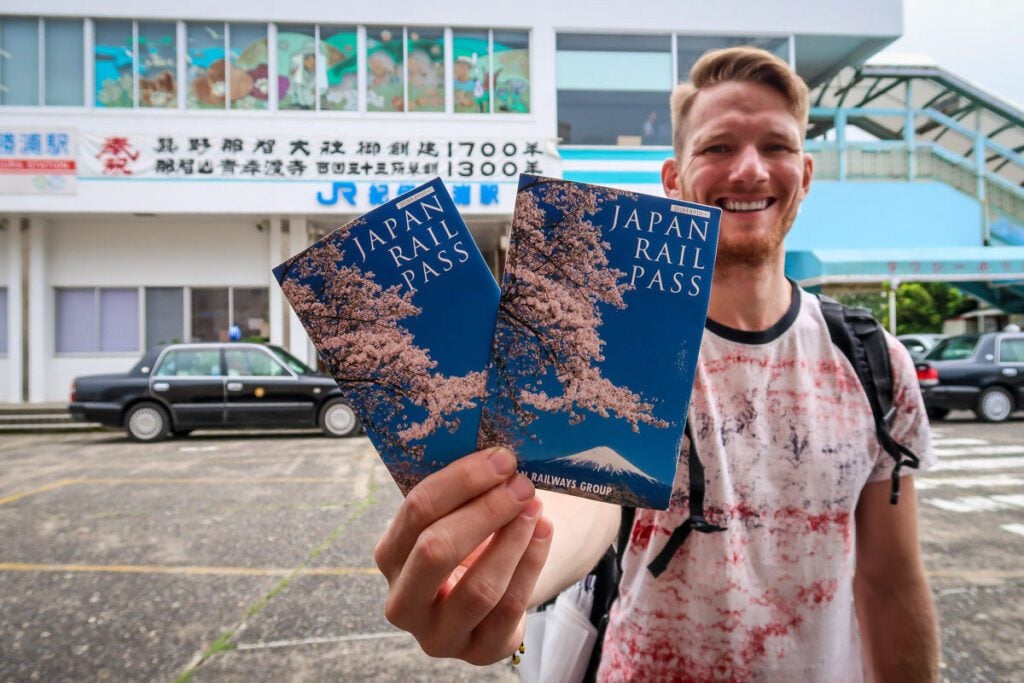
Essentially, if you plan to visit more than 2 cities during your trip to Japan, the JR Pass will almost definitely save you money .
We have a whole article detailing it and even a quick way to calculate whether or not it will be worth it for you… but chances are it WILL .

Good to know: A JR Pass is essentially the same price as a roundtrip ticket from Tokyo to Osaka. So many travelers in Japan will save lots of money by getting the pass.
Also, we didn’t know this until we were in Japan, but Japanese citizens actually cannot get this pass, and therefore pay a lot more than most tourists for train travel.
4. Book your major train routes ahead of time
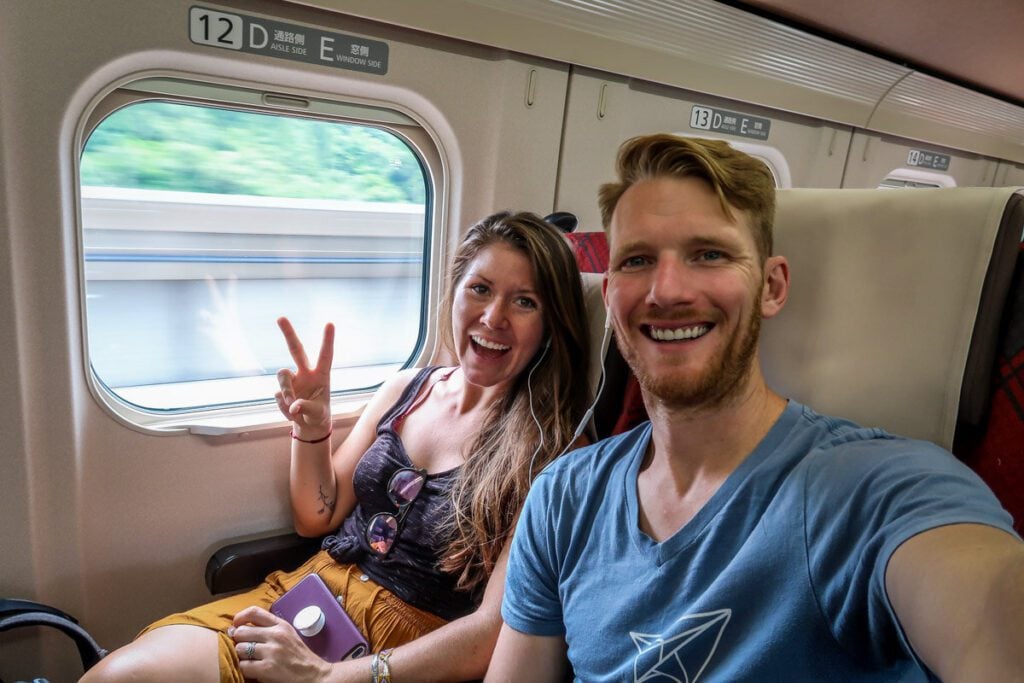
Many popular routes get fully booked up, so don’t wait until the last minute to reserve seats. For example, we had to stand for the 1.5-hour ride from Hiroshima to Osaka because we didn’t book our tickets in advance.
When you have the JR Pass , all train routes are free (there are a few lines that are not included, but you really don’t have to worry about those).
We’d recommend on your first day in Japan, to go to the JR ticket counter at the train station and reserve all your seats for your routes at once. You can always change your time and book another ticket later, but it’s good to have seats reserved.
If your route is fully booked, on every shinkansen train (bullet trains) there are a couple of cars that are for passengers that don’t have reserved seats. However, there is a high chance that you’ll be standing for that ride.
5. Do eat more than sushi and ramen
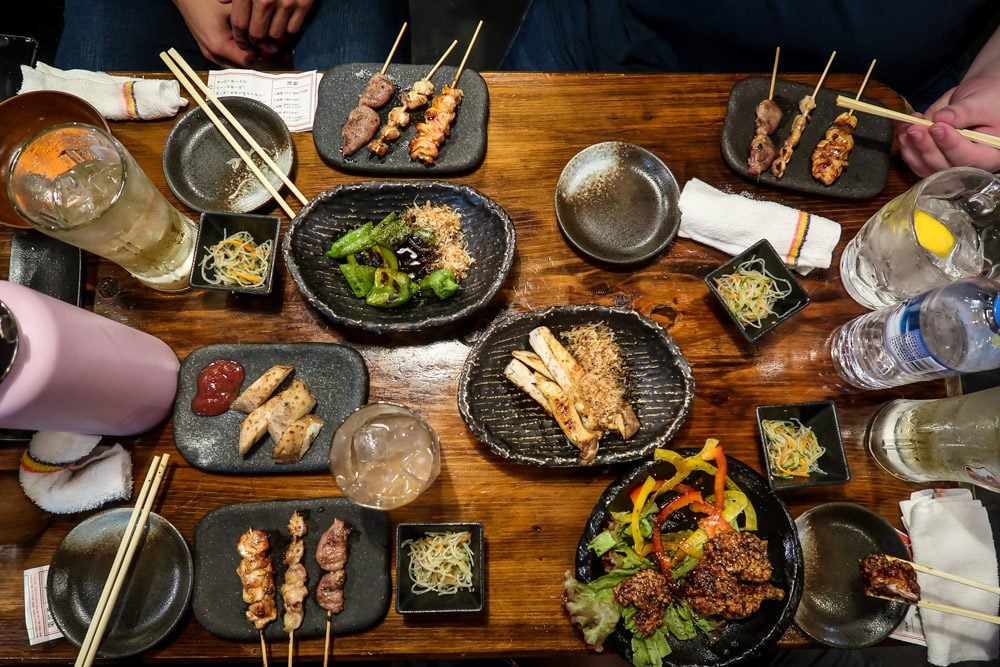
Before our first trip to Japan, our knowledge of Japanese cuisine started and ended with sushi and ramen. We didn’t know much else about it. But we’re here to tell you there is SO much more to this cuisine.
Check out our guide to the best foods to try in Japan , which even has a checklist you can download so you can make sure you don’t miss any foods! The more you know before your trip, the more you’ll be able to try.
6. Mind your manners
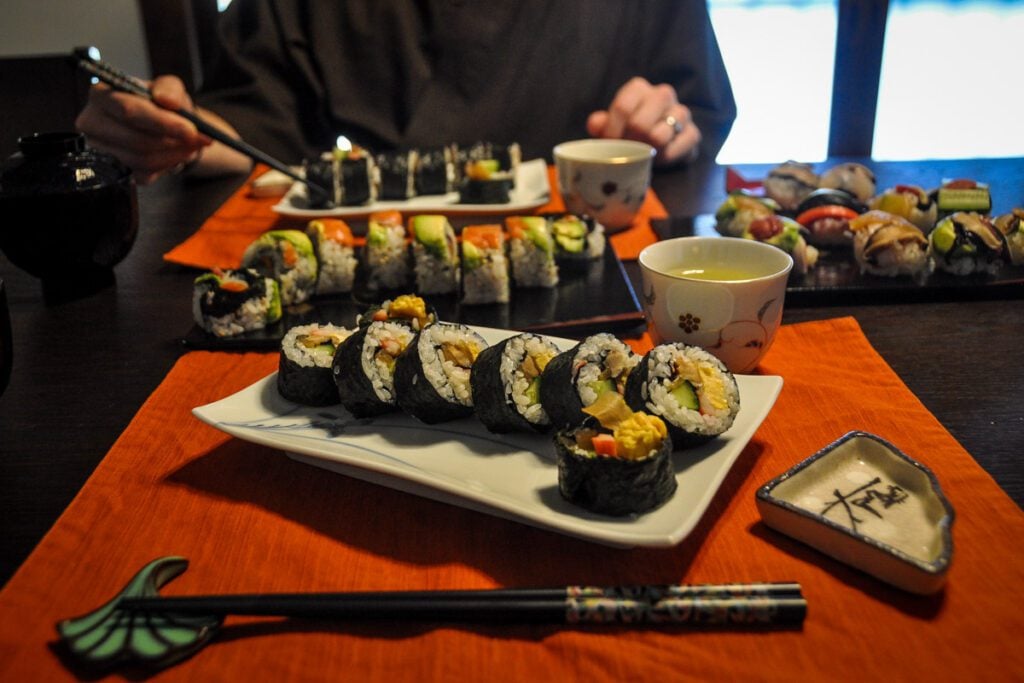
Manners are important in Japan, and it’s a good idea to read up on some Japanese etiquette before your trip so you don’t embarrass yourself or offend someone.
Here are a few manners to keep in mind:
- Instead of pointing with one finger, use your entire hand
- Avoid physical touch, like hugging, until you know if someone is comfortable with it. Also, public PDA is kind of a no-no
- Don’t eat while walking
- Be quiet on public transportation and avoid taking phone calls if possible
7. Don’t tip your server
While it is a common practice in North America, Europe and many other parts of the world, tipping is not part of Japanese culture and can be seen as mildly rude in some instances.
The Japanese believe that good service is expected (whether it be at a restaurant or tour) so there is no need to add extra money in the form of a tip.
Try to show your appreciation for a meal or tour by verbally thanking the staff, cook or guide. Leaving a review is always helpful so other travelers know what to expect.
8. Forks are few and far between
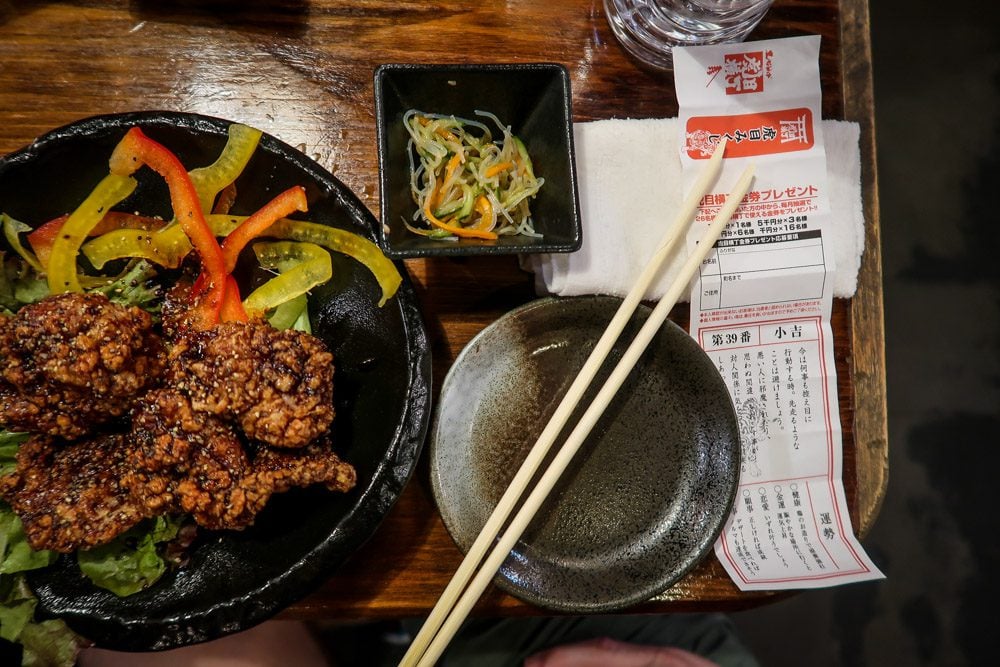
You’ll want to practice your chopstick skills before your trip to Japan because it is the utensil of choice, and very rarely will you find forks.
Hint: Chopsticks also make a great souvenir from Japan !
9. Do slurp your noodles

Everyone knows that slurping noodles is the best way to enjoy them , right? Well, here’s a fun fact about Japan you didn’t know you needed: it’s actually not considered rude!
In Japan, slurping your noodles is actually considered a sign of appreciation . It shows the restaurant or chef that you’re enjoying their food. Plus, slurping can even enhance the flavor!
10. Don’t forget to take your shoes off
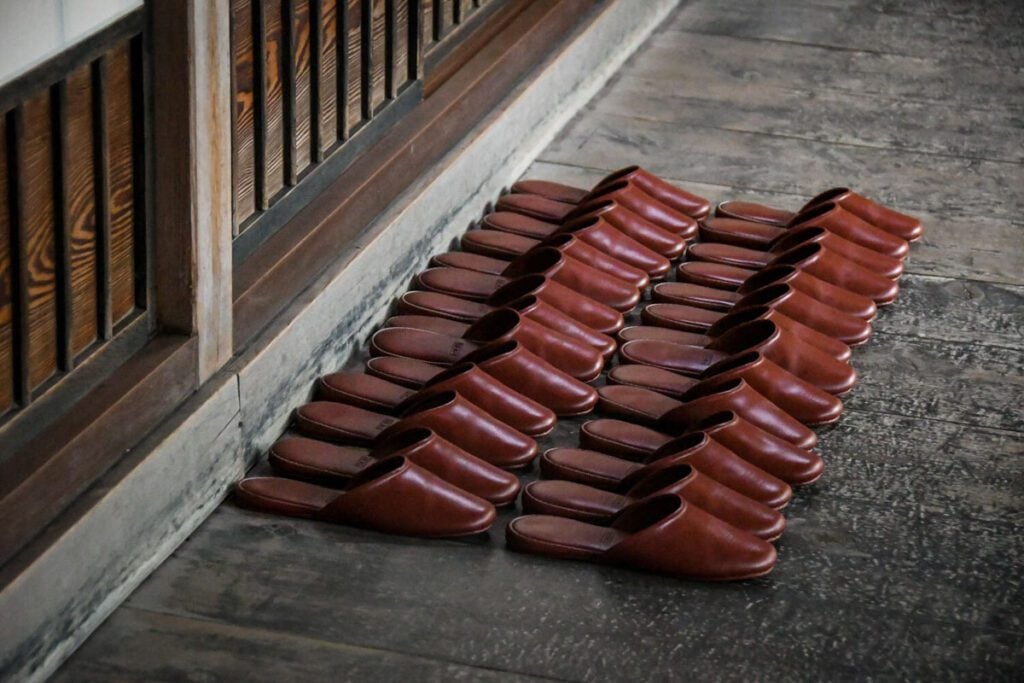
When entering guesthouses, homes, holy sites, and some stores, you will need to remove your shoes. This is typically indicated by floor that is different levels — either raised or lowered once you enter.
Usually there are indoor slippers that you can wear once you remove your shoes. The exception to this is in rooms where the floor is tatami mats — a delicate traditional flooring made of rice straw. These are common in traditional guesthouses and teahouses, inside which you can wear socks.
Also, some guesthouses have bathroom slippers. Yes, you read that right, shoes for the potty. Typically they will be sitting just inside the bathroom door and you’ll leave your indoor slippers outside of the bathroom.
11. Do learn onsen etiquette
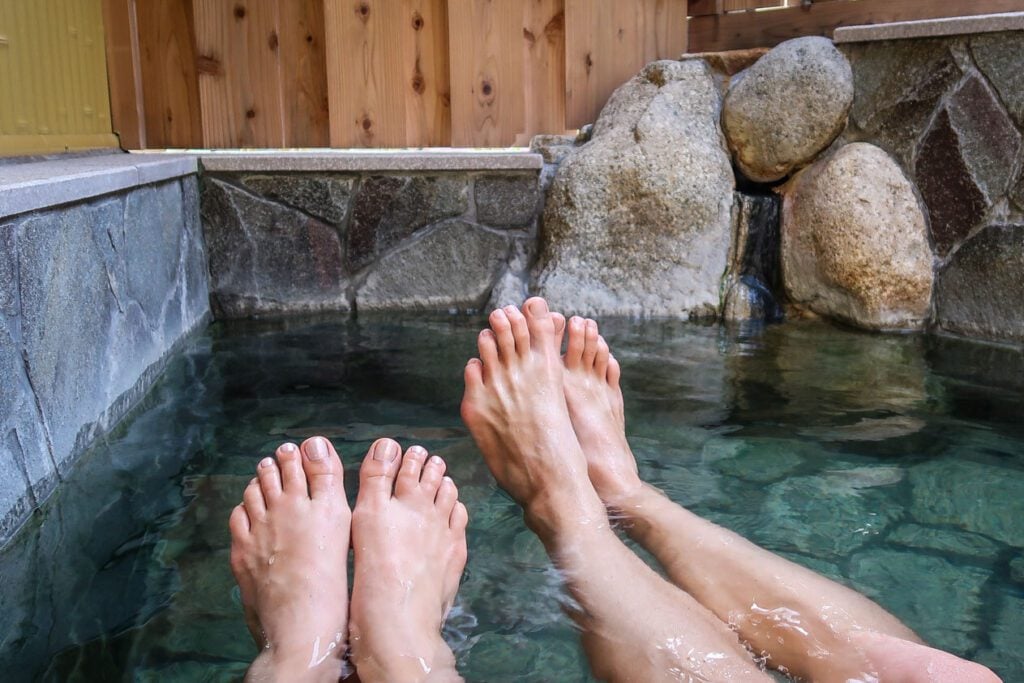
Soaking in an onsen should definitely be on your list of top things to do in Japan !
Hold up, what is an onsen, exactly?
An onsen is a Japanese hot spring with a bathing facility.
Japan has a lot of volcanic activity, meaning there are many onsens to choose from all around the country!
But before you start shedding your clothes, there are some important rules you should know so you don’t embarrass yourself…
Basic onsen etiquette
- Shower before you get in , oftentimes it’s at a shower where you will sit on a stool and rinse yourself off.
- Unless otherwise noted, do not wear a bathing suit.
- You can bring a towel into the bathing area, but don’t let it touch the water (many people put it on top of their head).
- Tie up your long hair so it doesn’t touch the water.
- Know the onsen’s policy on tattoos. Many onsen do not allow guests with tattoos, so you’ll have to seek out onsen where it is accepted or opt for a private onsen facility.
We go into more detail about onsen rules in our Japanese etiquette article.
Alternative: For those of you who just can’t get over the whole naked in public thing (I get it!), you may want to consider staying at a ryokan with a private onsen. This means you can reserve a time slot for yourself (and a travel partner if you wish).
11. Understand the difference between a shrine and a temple
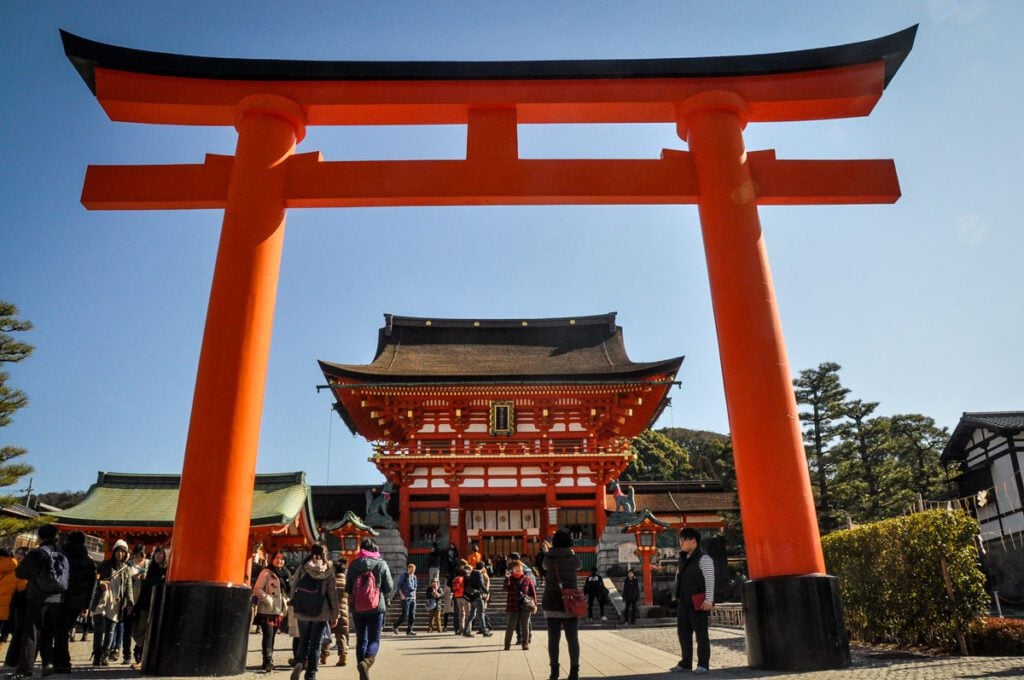
Before traveling to Japan, it’s very useful to know the difference between a shrine and a temple. Here is a general guide to help you:
Shinto Shrine:
- recognize them by the tori gates
- purification fountain (called chozuya ) with ladles
Buddhist Temple:
- large incense burner
- statues of Buddha
- sometimes a graveyard is attached
We have a whole section on how to visit a shine and a temple in our Japanese etiquette article.
12. Japan is not as expensive as you might think
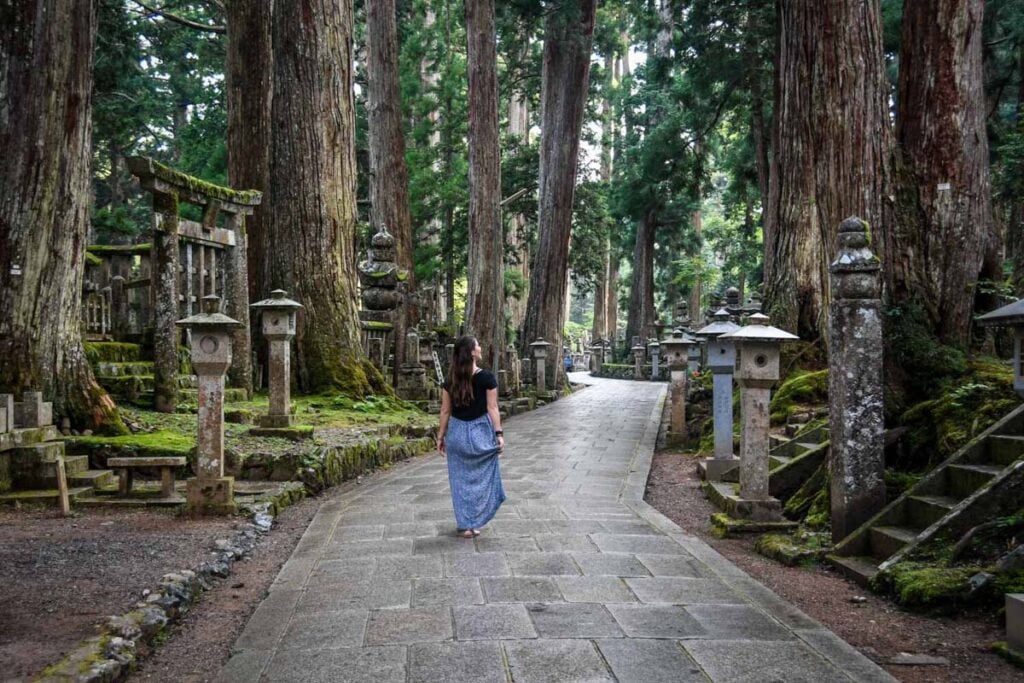
We’ve traveled extensively around Asia, and it’s true — Japan is one of the more expensive places we’ve visited in this region of the world. That said, it is still possible to travel Japan cheaply.
You can find budget accommodation in hostels, capsule hotels, or even Airbnbs . You can save money on food by eating at convenience stores, cooking some meals yourself, and planning out “splurge meals”. Cut transportation costs by getting the JR Pass , and enjoy all sorts of free things to do around the country.
Psst! We have loads of info on how to book Airbnbs , including red flags to watch out for when booking and our favorite Airbnbs.
Traveling to Japan doesn’t have to be crazy expensive. We’ve rounded up some of our top tips for traveling to Japan on a budget .
Moral of the story: If Japan is a country you’ve been dreaming of visiting, don’t let costs inhibit or deter you from making your dream a reality!
Related: We’ve got tons of super practical tips to show you how we afford to travel !
13. Do carry cash AND credit cards
Many places in Japan accept foreign credit cards with no problem. And if you have one with no foreign transaction fees that earns good rewards, you’ll definitely want to bring it along and use it as much as possible.
That said, there are still small shops, restaurants, and even guesthouses that only accept cash , so you’ll definitely want to have some Japanese yen on hand.
14. Withdraw cash from 7-eleven ATMs
The ATMs in 7-elevens are the most reliable ATMs in Japan with no fees for international cards. As a bonus, you can find 7-elevens everywhere! However, it’s good to note that some of the 7-eleven ATMs in popular spots do now charge a fee, so try to withdraw in less touristy areas.
Insider Tip: We always get foreign currency by withdrawing from ATMs, as it gives you the best exchange rate. To avoid those pesky ATM fees, we use our Charles Schwab debit card, which reimburses all ATM fees at the end of each month. It is the BEST card ever! Read more about which travel credit cards we recommend .
15. Don’t throw out your coins
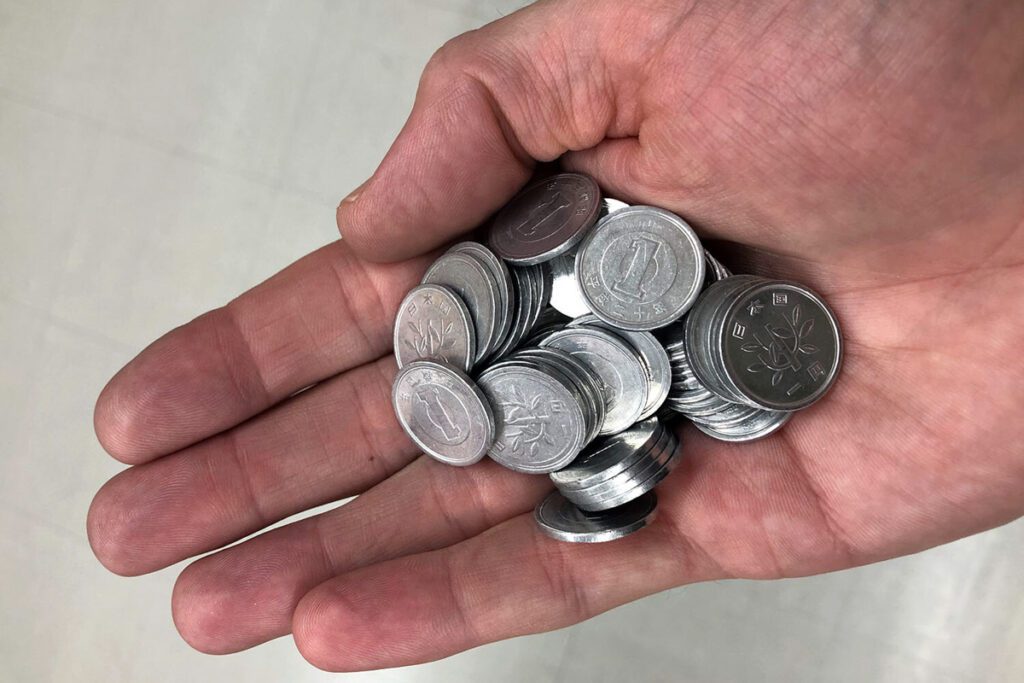
Some of those yen coins are worth almost $5 USD! I don’t know about you, but I typically throw coins around without much care — I mean, it’s no big deal if I misplace 12 cents… But in Japan, losing a handful of coins could add up to big money.
While on a train, a bunch of coins fell out of Ben’s pocket and we had to get down on our hands and knees to find them all before our stop. When we counted them all up we realized we nearly lost $24 USD in coins. Yikes!
When traveling in Japan it’s a good idea to have a coin case to keep them secure.
Tip: We met another traveler who had two coin purses — one for the large coins and one for the small ones to keep them organized.
16. Don’t get lost
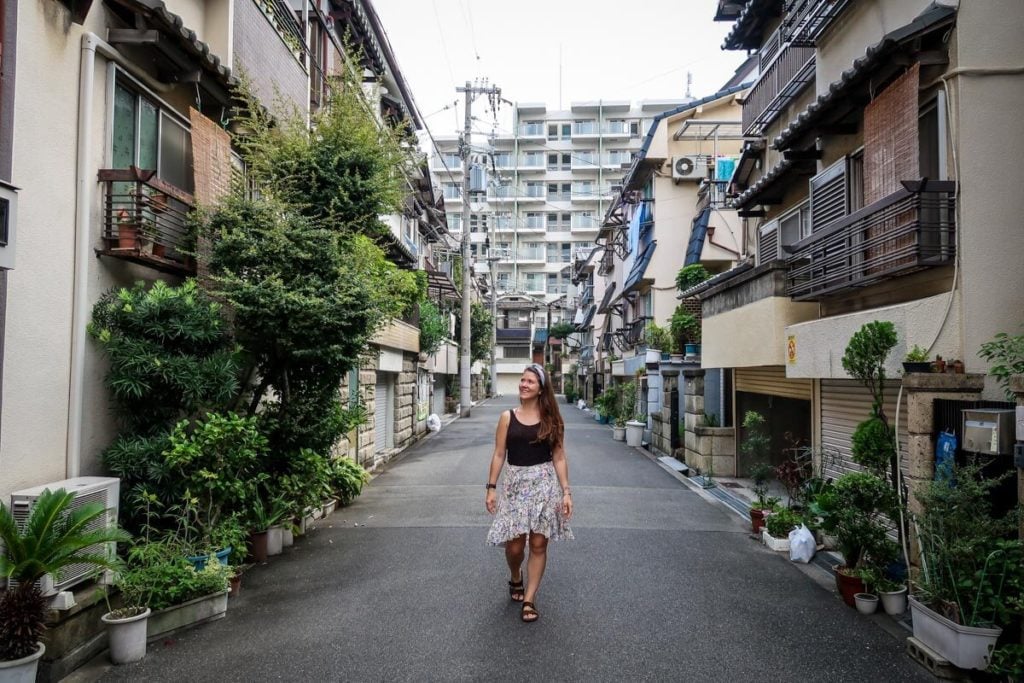
If you’re someone who’s not great with directions, you may find it alarming to find out that streets don’t have names in Japan… So how the heck are you supposed to find your way around?!
Although there are no street names, it isn’t a free-for-all. Addresses in Japan use an area-based system, where each area is divided into smaller areas .
The largest of these is called a prefecture. Prefectures are broken down into cities, and the cities are divided into wards.
Getting around and following directions in Japan is definitely a learning curve, so it’s worth studying some maps and taking time to research the numbering system before visiting.
17. Hold onto your trash
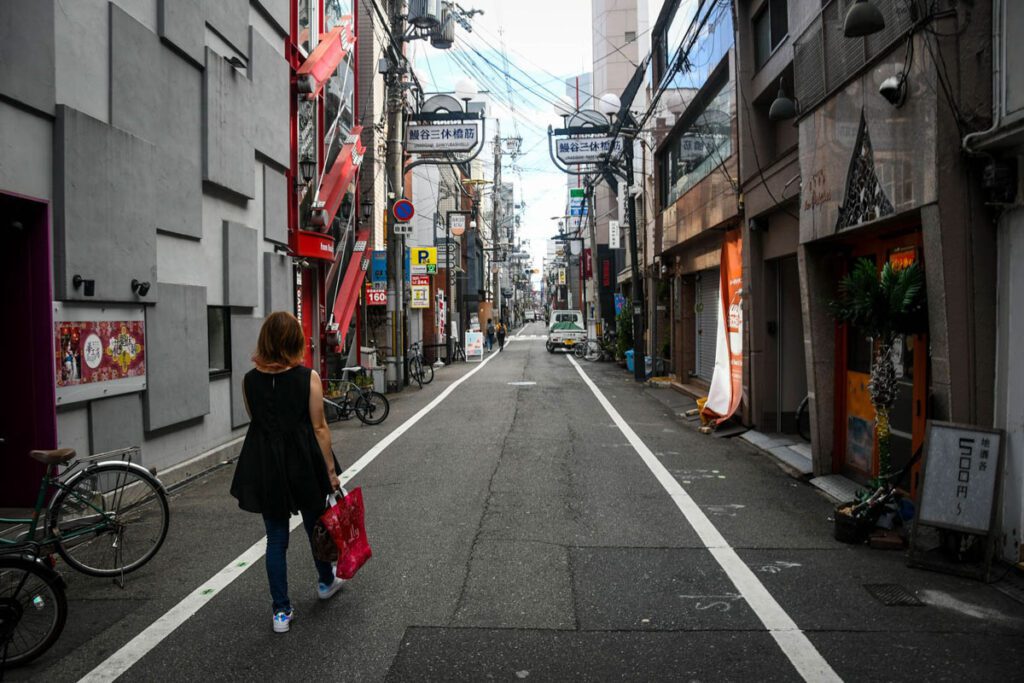
There are few trash cans on the streets in Japan. After hearing this, you might be surprised to learn that even though there is a shortage of garbage bins, there is very little litter in Japan.
Cleanliness is a big part of Japanese culture, which is reflected in the (mostly) litter-free streets.
So do as the Japanese do, and hold onto any wrappers until you find a bin. There are typically trash cans at convenience stores, meant for customers to dispose of their garbage.
18. Do the work to avoid plastic waste
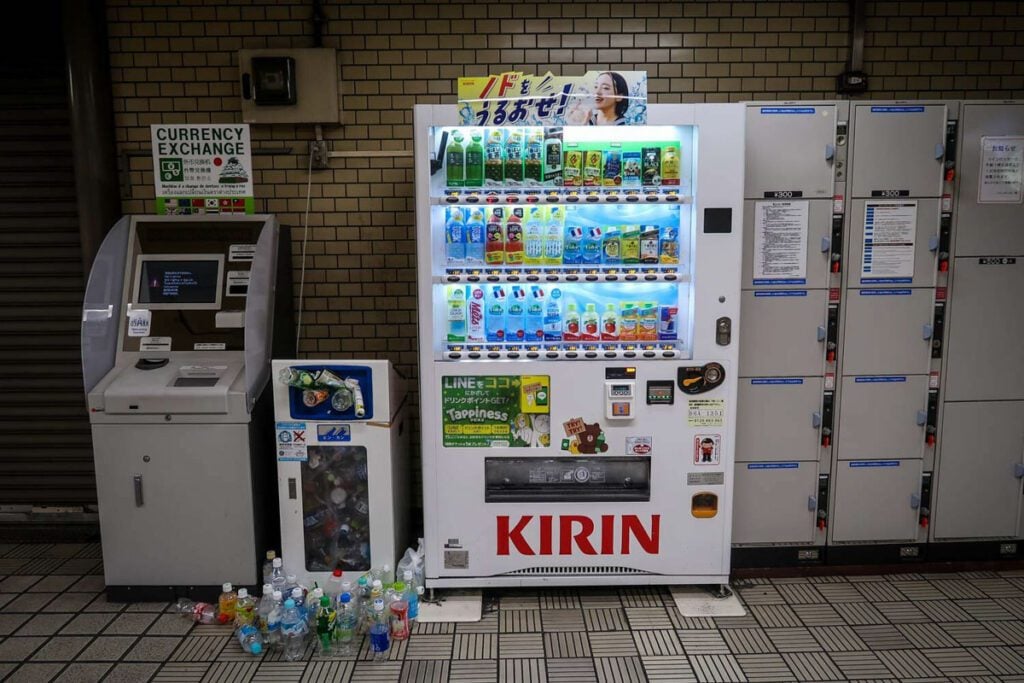
On the surface, Japan seems to be environmentally conscious: there are recycling bins every so often and the streets are very clean.
But as soon as you stop into a convenience store, you’ll notice that this country, like much of Asia, relies heavily on plastic packaging. And the super unnecessary kind, like plastic wrappers around single bananas.
As a traveler, there’s not too much you can do to change this, but you can reduce your own plastic waste by packing items that’ll help you turn down single-use plastic items.
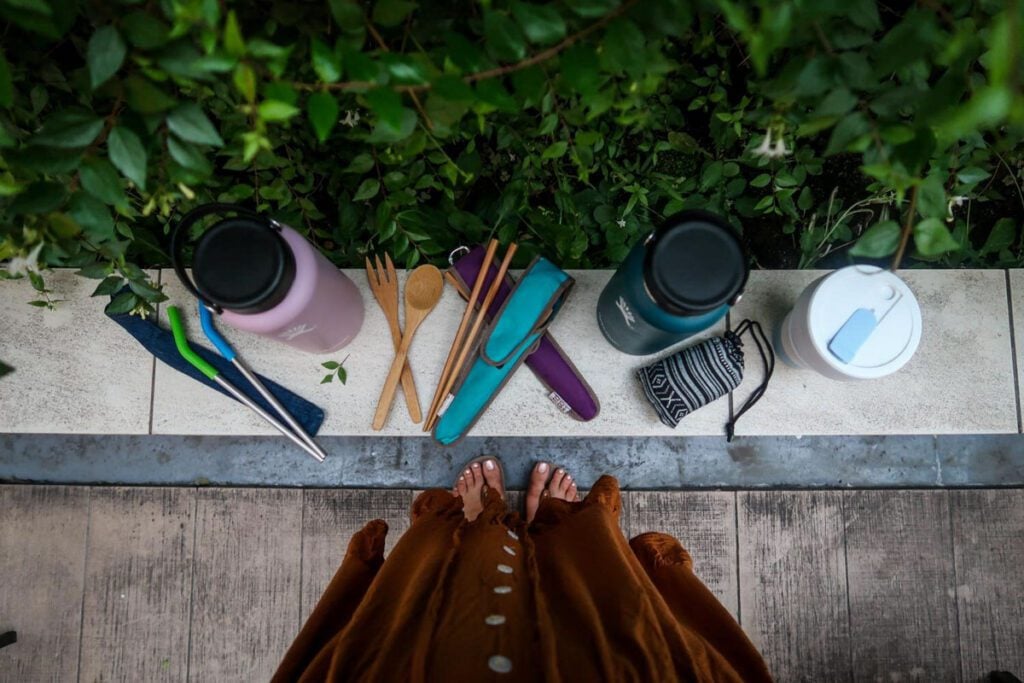
Here are some items we’d recommend packing:
- reusable utensils
- reusable straw
- water bottle *
- reusable bag
*Yes, you can fill up from the tap and drink the water in Japan! There’s an app called MyMizu that has a map of refill stations (mostly in larger cities, but I’m sure they’re expanding it as data is available).
Check out our eco-friendly packing list for some more ideas!
19. Choose an interesting hotel option
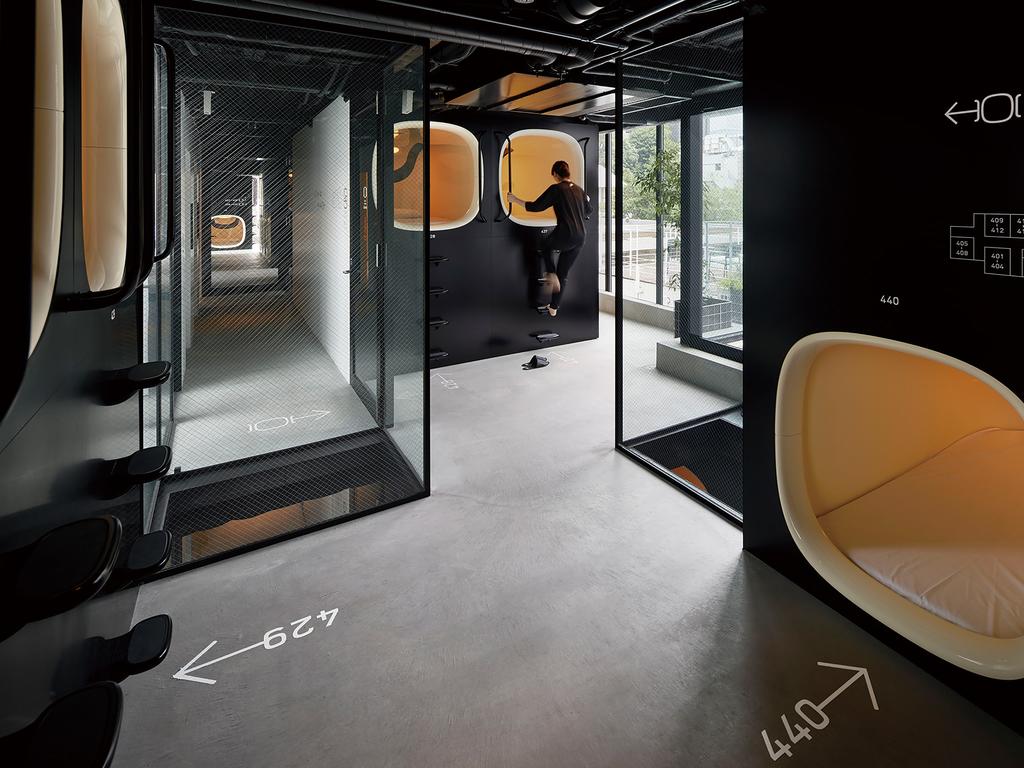
While traveling in Japan, you might want to try out a few unique hotel stays that you can find only in Japan.
- Ryokan: This is a traditional Japanese inn that typically provides guests with robes and meals. There is often a shared bathroom and onsite onsens that can be used by guests.
- Capsule Hotel: Made to maximize space in crowded cities, capsule hotels provide guests with privacy and an affordable stay. However, don’t expect to stand up in your pod! Staying in a capsule hotel is definitely a top Japanese experience to try out on your trip!
- Robot Hotel: There are even hotels run by robots! Like we said, #OnlyInJapan
20. Learn how to use a Japanese toilet

You’ve probably heard about Japanese toilets, and what the rumors say is true!
There are all sorts of buttons that perform different functions. For example, one button may play waterfall sounds or music to cover up— ehem —some other sounds you may not want the person in the next stall to hear. Other buttons will trigger a bum wash and can be set at varying pressure strengths.
All those buttons can be a little intimidating at first, but try them out (locate the STOP button first) and take advantage of those fancy toilets while you can. Because you surely don’t have those fun features at home!
21. Download these apps before you get to Japan
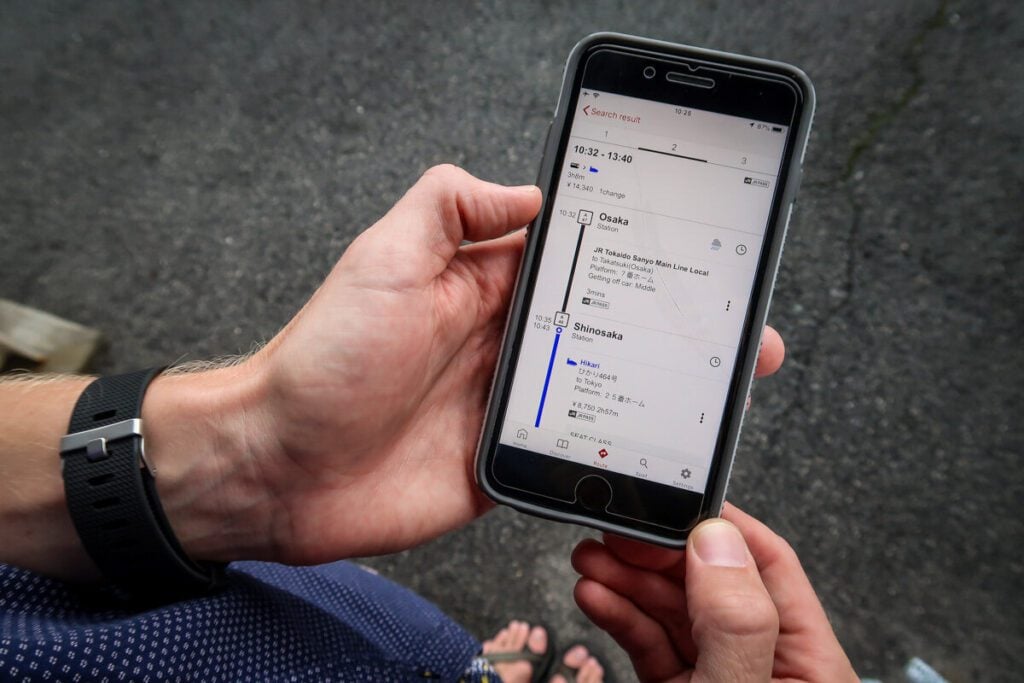
We have a whole article detailing all the best Japan travel apps you should download before your trip, but the 2 best ones that you NEED to download are:
- Japan Official Travel App
- Google Translate
You will thank us because they will come in so handy during your trip!
22. It’s difficult to be gluten-free in Japan
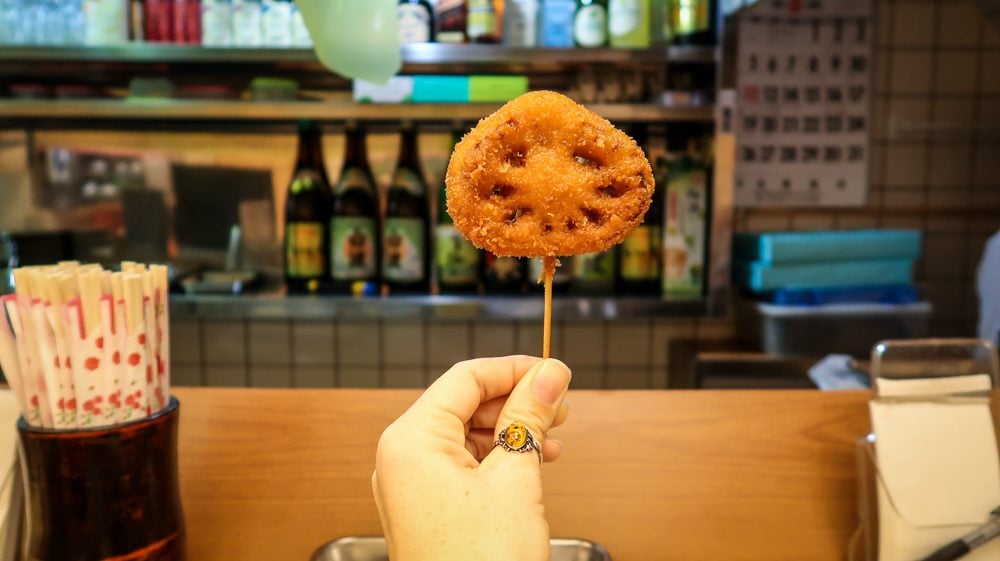
While the abundance of rice may make you think Japan would be an easy country for gluten-free travelers, that’s simply not the case. Soy sauce and other wheat-based seasonings are an integral part of Japanese cuisine, making it hard to avoid gluten.
Read this for more info on gluten-free travel to Japan .
23. Be on time
In Japan, it is seen as rude to be late, and thus, everything in Japan is run very strictly according to the clock.
This means trains leave exactly as scheduled and guests are often asked to show up to guided tours 15 minutes in advance. If you have a tendency to be late (I’m right there with ya!), be sure to pay extra careful attention to the time during your trip to Japan.
24. Utilize coin lockers to make things easy
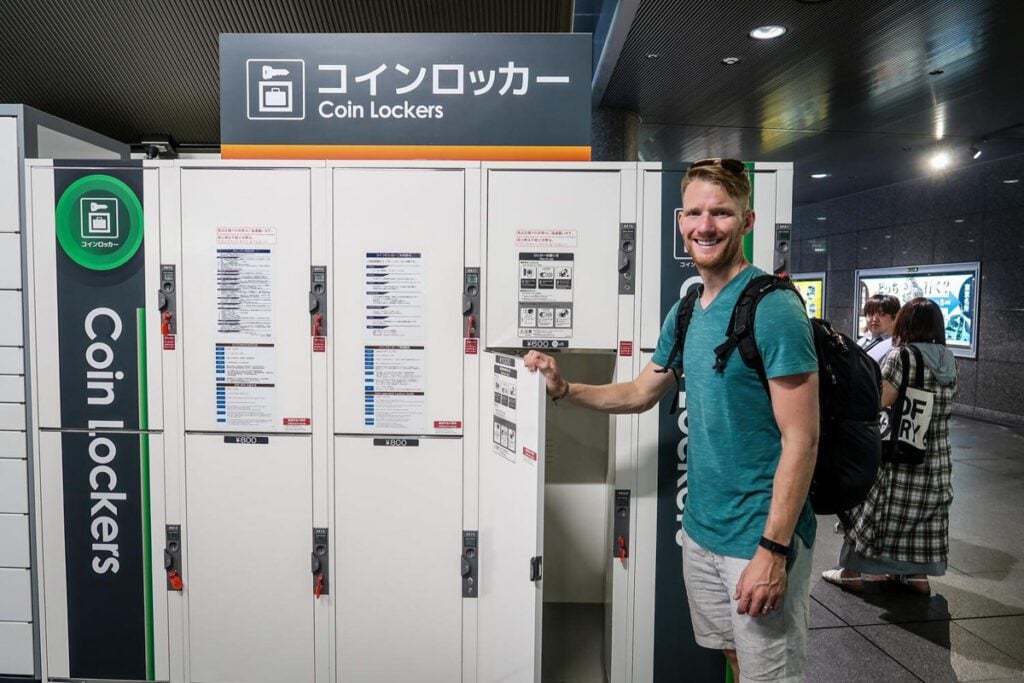
Nearly every train station has lockers which you can use to store belongings for a reasonable price. There are usually different sizes available, so you can store anything from a purse or small daypack to a large suitcase.
This is handy when you need to check out of your hotel but want to spend the day exploring.
Insider Tip: If you have a suitcase that you don’t want to bring with you on the train, there are luggage transport companies that can get it to your final destination for you!
25. Theme cafes are part of the experience

Japan is known for all things quirky, and this applies to restaurants and cafes.
The famous Robot Restaurant , with its laser beams, giant robots and scantily clad performers, is an example of something you can only find in Japan. But the theme restaurants don’t stop there. There are plenty of other over-the-top themed restaurants and cafes in Tokyo and Osaka you can visit to get the full experience.
However, it’s important to beware and do a little research before patronizing them.
Some of these theme cafes have a dark side. For example, many of the animal cafes (hedgehog, owls, sheep, etc.) do not have a safe and healthy environment for the animals. Also, there are anecdotes of young waitresses being exploited in the infamous “maid cafes”.
And no matter which cafe you go to, just remember, you’re not there for the food, which is usually sub-par. And it’s also worth noting, you’re paying for the experience as well!
26. Staying connected is easy
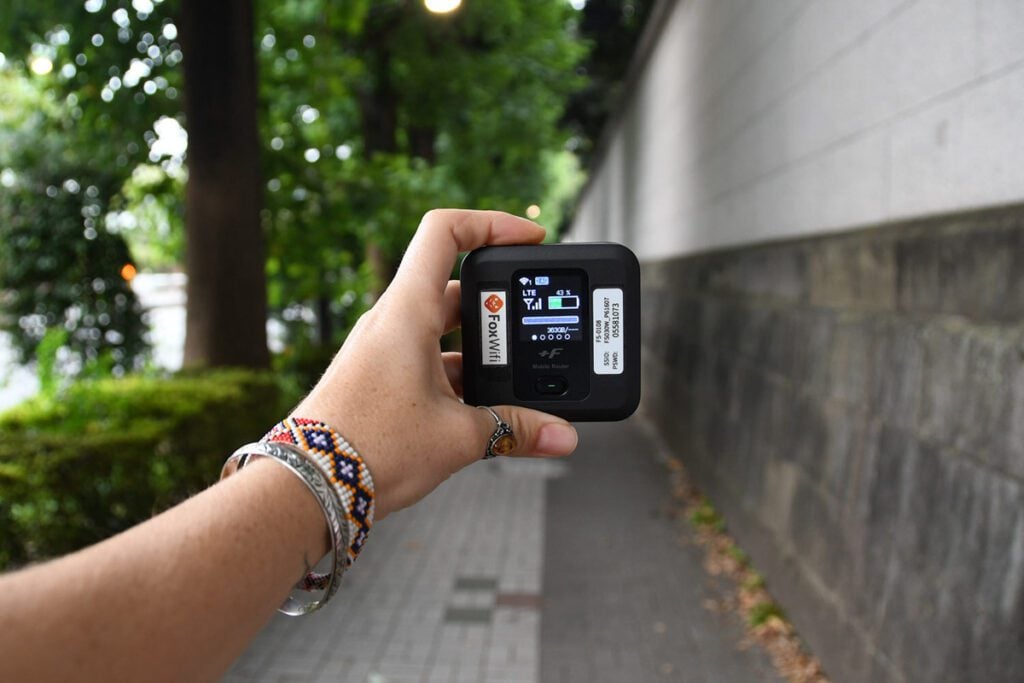
Staying connected to the Internet is very useful when traveling in Japan. And not just because you can post your pretty pictures to Instagram to make all your friends jealous…
Having an Internet connection will make your travels SO much easier when it comes to translating Japanese writing and getting directions for the notoriously confusing train and metro systems.
Trust me, having translating and navigating abilities in Japan is an absolute LIFESAVER.
The two best ways to stay connected is with a SIM card or via a hotspot. The best option is going to totally depend on your needs and budget, and we’ve compared them here so you can choose the best one for you.
27. Convenience store culture is a thing
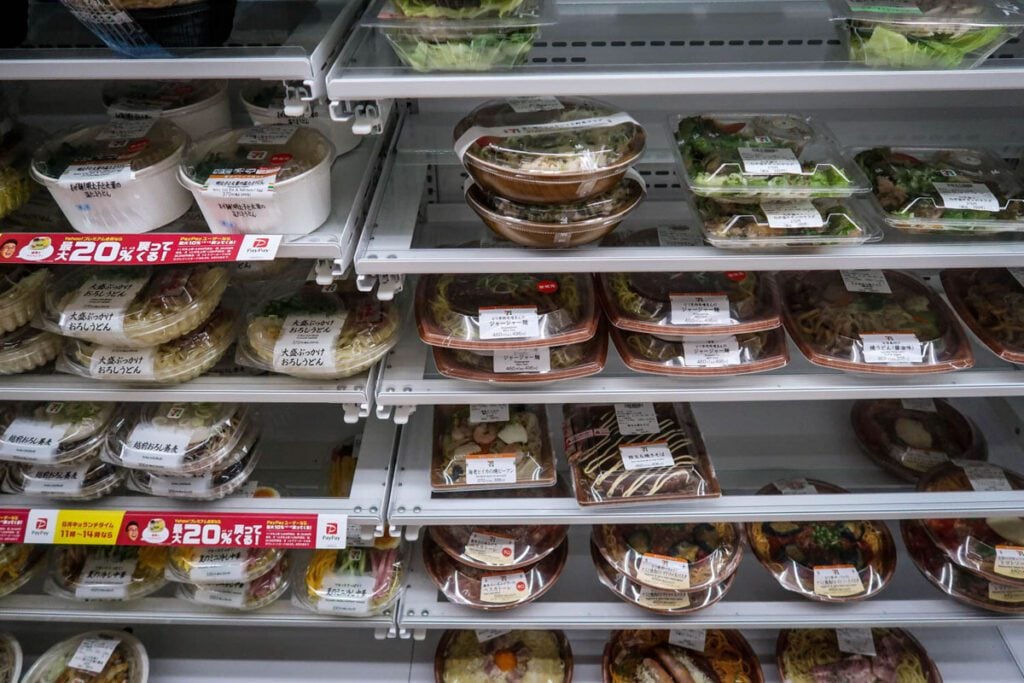
Convenience stores are a big deal in Japan.
And the food options in Japanese convenience stores are much larger — and less sketchy — than in most other places around the world. I mean, I would NEVER get sushi from a convenience store in the U.S., but I definitely did just that in Japan. And it was good!
You can literally eat breakfast, lunch, and dinner (and all your snacks too!) from convenience stores. The most popular chains are 7-Eleven, Lawsons, and Family Mart, and you can find them on just about every city block. No joke.
I will say that at the end of the day, the food you’ll find — while good — is still processed, packaged food. Some people claim they would live off of convenience store food in Japan. I am not one of those people!
I did enjoy it in moderation, and loved being able to try some super quirky treats, like Sugar Butter Sand Tree Cookies , which are weirdly delicious and familiar-tasting!
28. Don’t expect to eat lots of fresh fruits & veggies
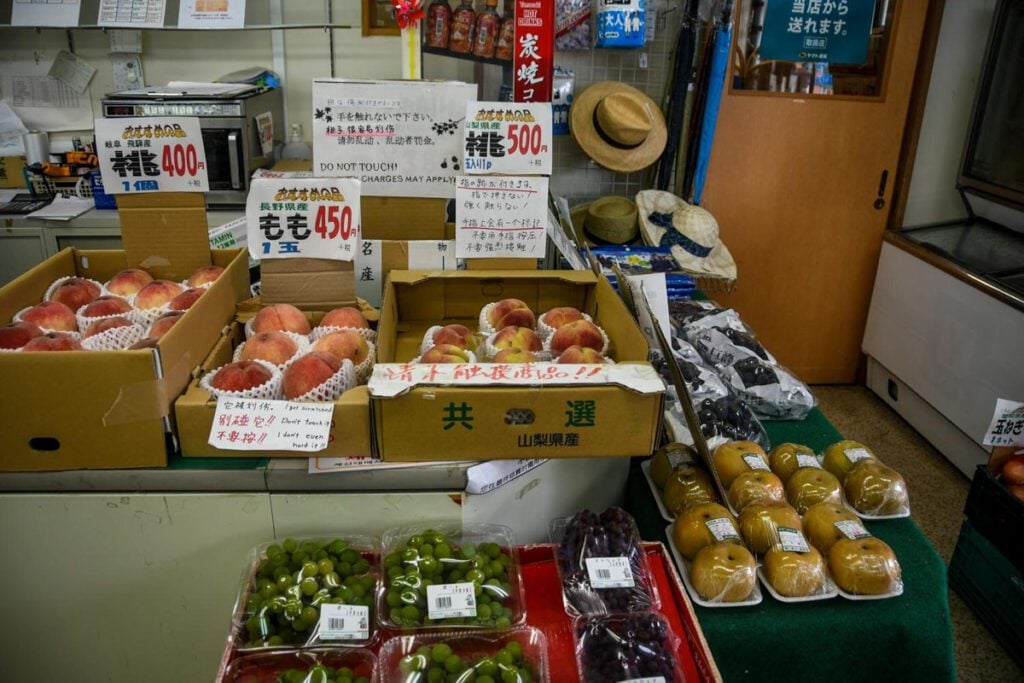
It might be good for some travelers to know that you should be prepared to go without a ton of fresh veggies and fruits for a while. We usually eat lots and lots of fresh vegetables and fruits, so we felt a bit “heavy/bloated” during our time in Japan.
You’ll find some vegetables cooked or fried in your meals or a shredded cabbage “salad” on the side, but not too much more than that. And fresh fruit is pretty expensive, so it’s more of a treat than a typical snack.
We had been living in Bali for 3 months before our trip to Japan, where our daily diet consisted of giant fresh salads and smoothie bowls. Let’s just say that Japan goes a lot heavier on the rice, noodles, meats and seafood than on fresh veg!
If you don’t eat that much fresh produce regularly, you might not notice too much of a difference.
Tip: Also, while convenience stores are great, and just that — super convenient! — I found it hard to find healthy snacking options. Next time I travel to Japan, I’ll pack some dried fruit (not covered in sugar), nuts, protein bars, etc.
29. Get a pre-paid transport card on the app
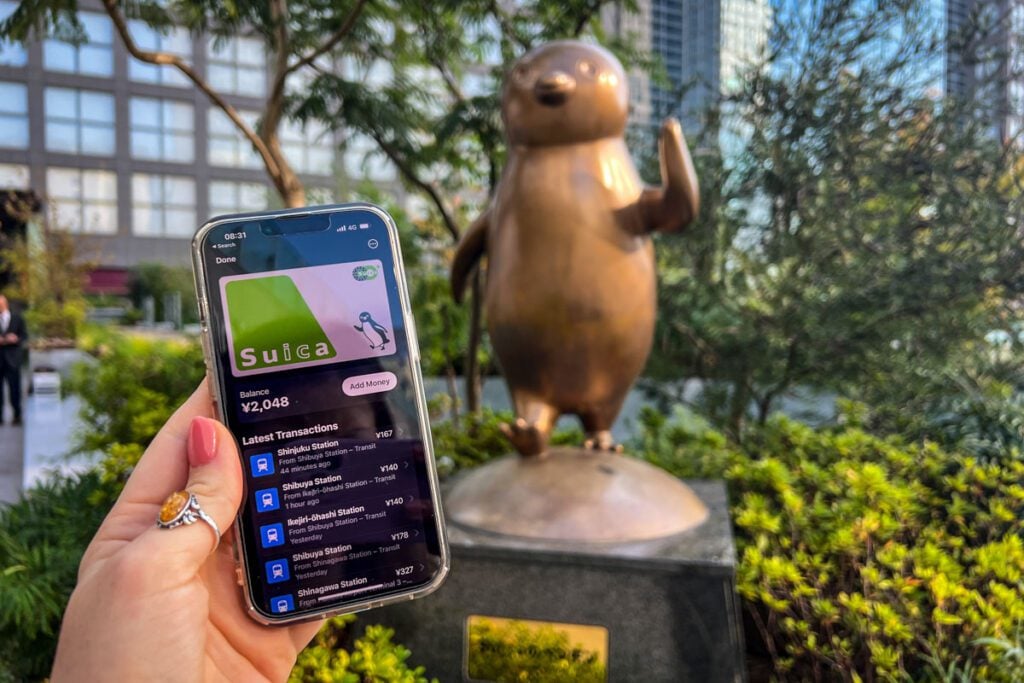
These are essentially the metro cards in Japan ( Suica is for Tokyo and the surrounding area, and ICOCA is for Kyoto/Osaka and the greater Kansai region).
They will save you money on each trip , and are more convenient than having to purchase a ticket each time.
Due to a shortage of physical cards, you are now required to get an app on your phone . Simply tap on and off, eliminating the hassle of purchasing individual tickets. Note that Visa isn’t accepted, so rely on Apple Pay, Mastercard, or American Express for top-ups.
You can use your card for purchases in convenience stores, which is handy when you don’t have cash.
30. Do pack light for Japan
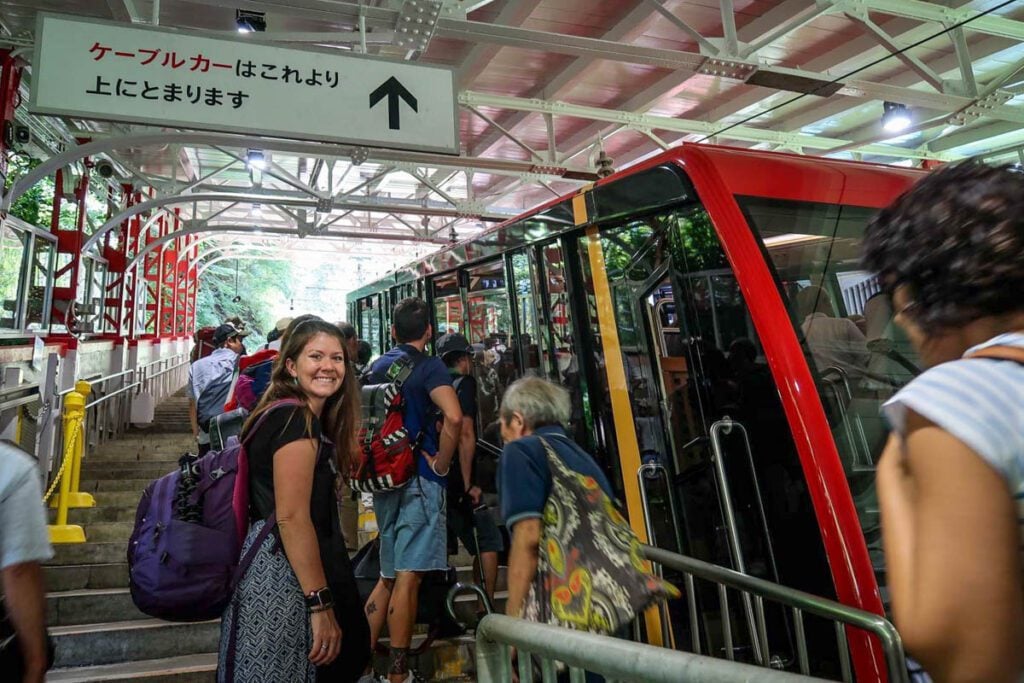
We actually broke this rule, as we had been living in Asia for a year and were in the midst of bringing all our stuff back to the U.S.
But trust me when I say that carrying big backpacks or suitcases through crowded metros, trains and intersections is NOT fun.
We found a luggage transfer service that was able to send the luggage we didn’t need from Osaka to our hotel in Tokyo and store it for us. It was super simple and cheap! I’m sure there are more services out there, but it was a little hard to find when we were searching.
Before you leave, check out these super helpful guides full of packing hacks and tips for traveling in Japan that you won’t find anywhere else:
- Our Japan packing guide lists all the essentials (many of which you might not think about), as well as what you should NOT pack for a trip to Japan.
- This article on what to wear in Japan will help you create a perfect capsule wardrobe for every season and let you in on some cultural taboos so you can be sure to dress appropriately.
- With this FREE Japan packing list PDF download , we’ll send checklists straight to your inbox for everything from clothing and toiletries (for both women and men!) to what shoes to pack and extra stuff you may want to have on-hand just in case. Click the image below to get your free copy!

31. Bring comfortable walking shoes
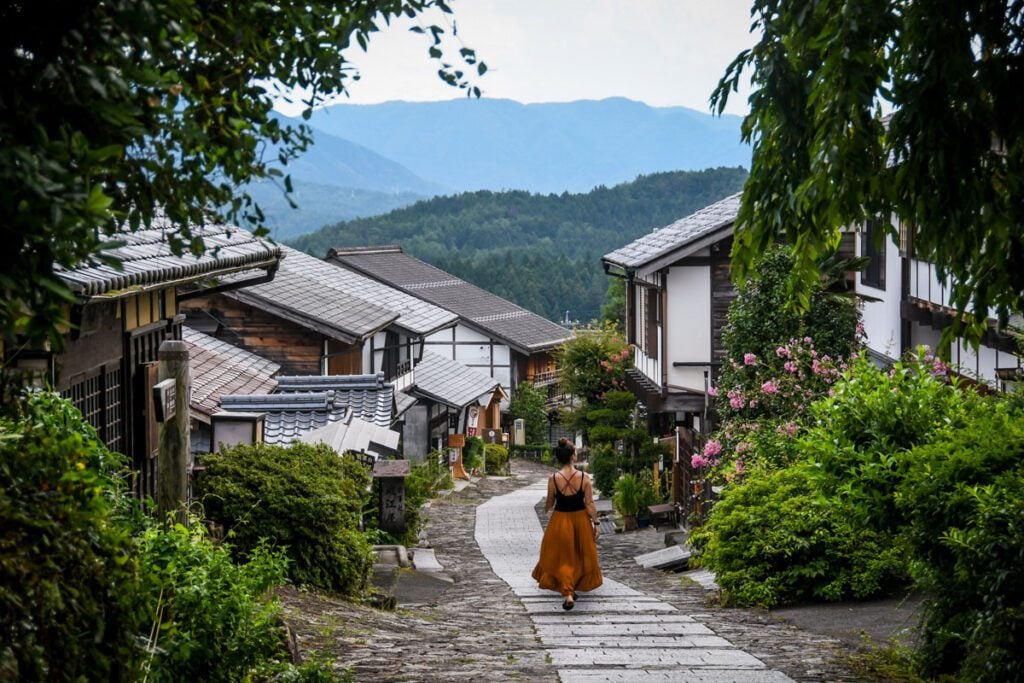
When people say you’ll be walking a lot in Japan, they ain’t lying! We walked an average of 10 miles (16 km) each day, so comfortable shoes are a MUST.
Psst! We have a list of must-see landmarks in Japan that’s sure to give you some inspiration for your itinerary!
32. Know about cover charges at Izakayas
Even though you’re not expected to pay gratuity in izakayas, it’s good to know that many establishments charge what’s called a otōshidai, or a “cover charge”.
Sometimes you’ll be given a small (aka TINY!) dish, otōshi , for which the charge is attributed on your bill. However, it’s really just an extra fee for the seat you are occupying.
Usually it’ll be between 200 – 500 yen. It’s good to expect this so you’re not confused when your final bill comes.
33. Don’t try to split the check
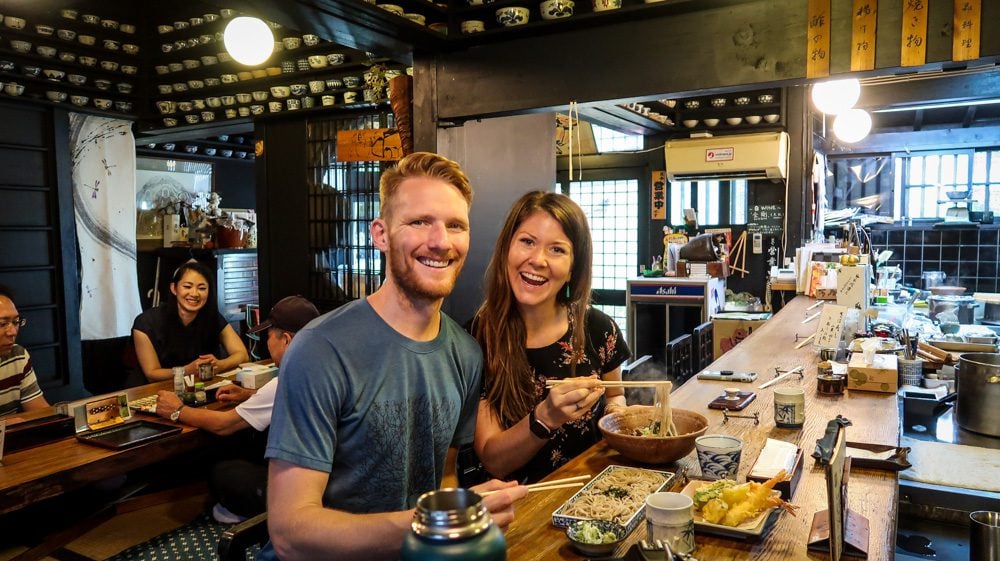
Sometimes when we’re traveling on a budget, we like to split one large meal. Often times, we don’t feel the need to order two full entrees, plus, it cuts our food costs in half.
However, this is usually considered rude in Japan since seating is often limited and you are taking up a spot in the restaurant.
So for instance, it would be frowned upon for two people to go into a ramen shop at a busy hour, and only order one bowl of soup. If one party doesn’t feel like eating, it would be best to wait outside (I know, I know!).
An exception to this would be if you go at an off-hour, say 3 in the afternoon, when a restaurant is less busy. You can ask if it’s okay to split one meal.
We did this once at a restaurant where they served large seafood dishes. The restaurant was pretty much empty in the middle of the afternoon and we just wanted a light meal, not 2 huge entrees. They said it was fine, but I wouldn’t have done this at a busy time of day.
Note: When we say this, we don’t mean you can’t try each other’s meals — we did this ALL the time — and find it the best way to taste as many dishes as possible.
34. Know you can’t see/do everything …
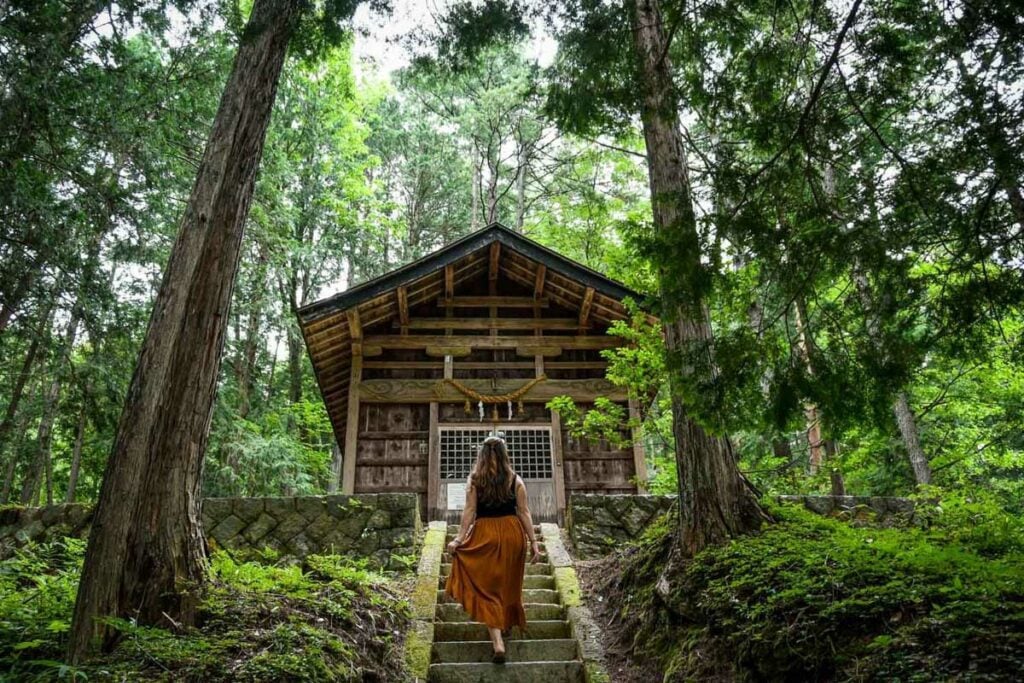
This can be a hard one to come to terms with, especially when you see all sorts of posts and advice. It can honestly get overwhelming (been there!). Just know that you’ll need to narrow down and prioritize the things you really want to do.
If you don’t get to everything — you likely won’t, there are ENDLESS cool things to do in Japan — you can always come back for a second, third, seventh visit down the road.
Need help deciding how long to plan your trip for? Our guide to how many days to spend in Japan will help you figure out how much time you need based on what you want to do.
35. Planning is your friend in Japan
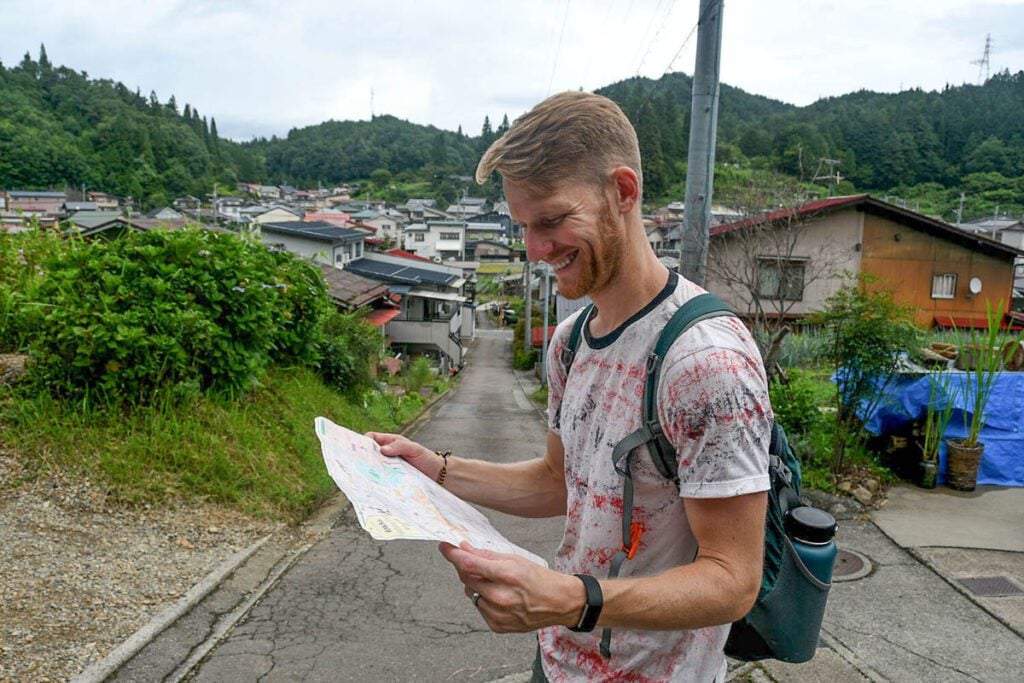
We usually love to travel with a lot of room for flexibility. However, unless you’ve got a lot of time to travel around Japan, planning your route and accommodation in advance is going to help you maximize your time.
Add in some “flexible” time where you can just wander or relax, but our advice would be to come with a pretty solid plan (even if you don’t usually travel this way).
Be sure to check out our ultimate Japan planning guide to help prepare for your trip!
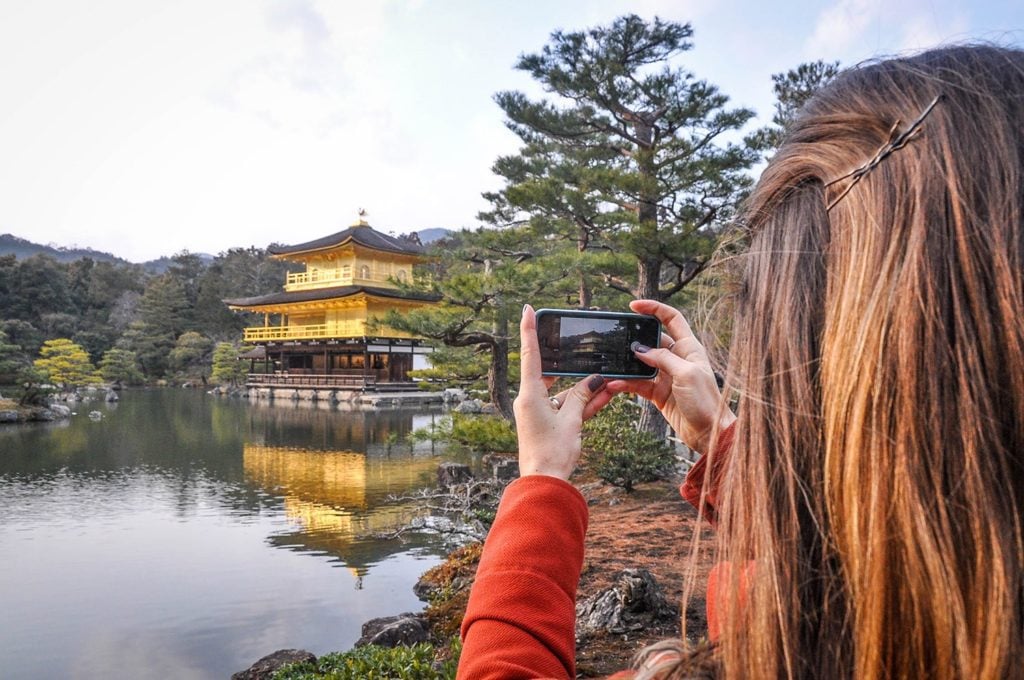
Japan Trip Planner: How to Plan Your First Trip to Japan
This information-packed Japan trip planner has the answers to all your questions. Find out the best places to visit, which Japanese foods to try, and how to ride the bullet trains. All the research is done for you to assist in planning a trip to Japan.
More resources for traveling in Japan
We have TONS of resources on travel in Japan and destinations throughout the country. Check out our Ultimate Japan Travel Guide for all the answers to your most burning questions, or read some of our favorite articles below!
- Best Time to Visit Japan: When to Go & When to Avoid
- Japan Rail Pass: Where to Buy & Is It Worthwhile?
- Renting a Car in Japan: Essential Driving Tips You Need to Know!
- Japan Travel Cost: Exactly How Much is a Trip to Japan?
- Japan on a Budget: Money-Saving Tips + Free Things to Do
- One Week in Japan: Best Itinerary for Your First Visit
- Japan Pocket Wifi vs. Japanese SIM Card: Review & Comparison
- Best Japan Travel Apps
- Foods to Eat in Japan: Guide to Japanese Cuisine
- Helpful Japanese Words & Phrases to Know for Traveling in Japan
Save this article to Pinterest for later!
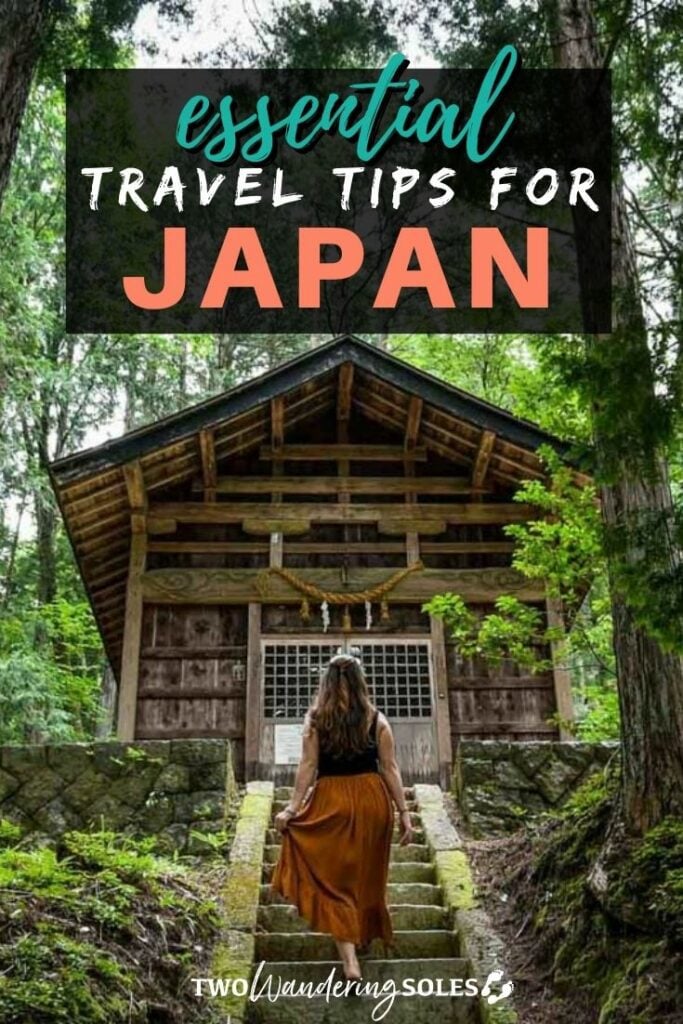
We want to hear from you!
Are any of these tips for visiting Japan surprising to you? Do you have any more Japan travel tips you think we missed? Let us know in the comments below!
Leave a Reply Cancel reply
Your email address will not be published. Required fields are marked *
Save my name, email, and website in this browser for the next time I comment.
Travel Tips: The Best 99 Travel Tips You’ll Ever Need

August 30, 2023
Traveling is something that you can only learn with experience. The more you travel, the more you experience and learn.
If you are new to traveling, you are most likely to make a whole lot of mistakes at first and that’s okay.
With time, you’ll know all the things to do and all the things to avoid when planning a trip somewhere or visiting a foreign land.
There are a ton of mistakes you can make as a first-time traveler. These include being reckless, being culturally offensive, missing buses, etc.
You have to think about traveling as you did your first time in a new school. It will take some time but eventually you will get used to how things work.
Meanwhile, here are my 99 travel tips to get you started as a traveler.
The journey might be long and bumpy so hold on tight and brace yourself;
1. Find Photogenic Places & Spots Using Instagram
2. learn common phrases of the local language, 3. read a history book about the place you are visiting, 4. get to know local customs before you go, 5. don’t be afraid to take your kids with you, 6. get vaccinated, 7. let your family and friends at home know your plans, 8. if you plan to visit someone/staying with someone, during your trip, then get them a present, 9. don’t go into debt for travel, don’t spend beyond your means, 10. research your destination, 11. be flexible and don’t over-plan, 12. book early for cheap flights, 13. use points and miles for discounts and even free travel, 14. use a vpn to potentially get a discount on flights, 15. avoid expensive hotels and accommodations, spend your money on experiences not on sleeping, 16. write down your hotel address and phone number.
- 17. Get a VPN for Travel to Protect Your Internet Connection While Abroad (I Personally Recommend ProtonVPN and NordVPN)
18. Take Cash with You and Extra Credit/debit Card
19. let your bank know you’re traveling, 20. pack light, 21. but take extra underwear and socks, 22. pack a pair of sneakers, 23. carry a first-aid kit, 24. always get a compeed for your feet – thank me later, 25. bring your normal clothes you’re comfortable in with you, 26. wear comfortable shoes you already broke into, 27. don’t bring clothes that need ironing, 28. always pack a hat and a sarong/scarf, 29. mark your luggage and write your name and contact information on them, 30. take pictures of your luggage and clothes, 31. take a photo and make copies of your passport and important documents, 32. get your phone unlocked before you leave, 33. invest in a good travel camera, 34. bring an extra camera battery, 35. bring a powerful power bank, 36. put electronics, medications, and extra clothes in your carry-on, 37. go to the airport early, 38. go to the bathroom right before boarding on a plane or taking a bus, 39. get a window seat so you can lean against the wall when you sleep, 40. get the closest seat possible from the doors on the plane, this will save a huge time going through customs, 41. stay hydrated on the plane and on the road, 42. get a water filter bottle and drink tap water whenever you can., 43. don’t change your currency at the airport, 44. track your spending, 45. don’t be afraid to pay to get your laundry done, it’s totally worth it, 46. wake up early, 47. try to exercise during your trip, 48. eat local food frequently, 49. don’t be ashamed to buy souvenirs, 50. visit famous and touristy places, 51. but don’t hesitate to get off the beaten path, 52. also, don’t eat at restaurants in touristy places, 53. wear sunscreen, 54. always have snacks with you, 55. put down your cellphone and enjoy the moment, 56. visit historical places at lunchtime, they are usually less crowded between 12:30 and 13:30, 57. go to local markets, 58. try new food, even if you think you won’t like it, 59. go on free walking tours, 60. make friends with locals, 61. make friends with other travelers, 62. break out of your comfort zone, 63. get lost on purpose, 64. do something that scares you, 65. be spontaneous. say yes to interesting opportunities and don’t stick blindly to your plans, 66. experience traveling alone from time to time, 67. go somewhere new every year, 68. if it feels wrong, it’s probably wrong. don’t take unnecessary risks, 69. abc: always be charging charge your power-bank and your devices whenever you have the chance, 70. get a local sim card with internet data for your phone, 71. always take your camera with you, always, 72. don’t forget to take epic photos of what you’re seeing, 73. take plenty of photos at sunrise and sunsets., 74. cloudy days are actually excellent for portrait photos, 75. take more photos of yourself in those places, 76. take more photos of and with locals, 77. save memories, don’t fake memories. your photos are meant to remind you of good times, not for showing off to others., 78. don’t wear your purse on one shoulder. rather, wear it around your body, 79. never carry your wallet in your back pocket., 80. be aware of pickpockets and scams, 81. use public transportation in big cities, 82. if you need a car then rent it. it’s cheaper than hiring a driver or taking taxis every time, 83. if you hired a driver, take pictures of the car, the license plate, and relevant details about the car and the driver. just in case, 84. never leave any valuables in your car, ever, 85. check if you forgot something in your hotel room before leaving, 86. don’t throw trash on the street, 87. be eco-friendly and minimize your trash, 88. also don’t buy anything made of animal parts, 89. don’t take your trip too seriously., 90. expect everything to go wrong, 91. don’t lose your temper when it does, 92. be kind with your travel partner. try to understand each other and avoid getting into an argument or a fight., 93. also, a fight doesn’t mean the end of your relationship/friendship. don’t be too proud to apologize, 94. compromise, compromise, compromise, 95. slow down to enjoy your vacation and never let yourself be in a rush, 96. keep an open mind and don’t judge other cultures, 97. don’t assume that you know more about a country or a culture than the people who actually live there, 98. be polite, smile often, and be friendly, 99. always, always, be respectful., i- travel tips before you go.

Instagram is one of the most popular social media applications you can resort to if you want to stay updated with the best places in town to visit.
Before you plan a trip to any destination, make sure to check Instagram for all the most scenic places you must visit in that particular town and city.
Each city in every country has certain must-see tourist spots, including places of worship, museums, or even landscapes full of natural beauty that you must visit. Instagram can be pretty useful as a starting point for pinning down which places you should necessarily add to your itinerary.
Visiting a new place will always be easier if you have some knowledge of the local language.
This doesn’t mean that you have to spend weeks picking up the new language. It simply means that you can take out a few hours each week before your trip to learn some common phrases in the local language that will help you when in the foreign land.
Such phrases include “I’m sorry” , “hello” , “thank you” and anything else that you feel is necessary to get you through your trip.
As an example I wrote an article that compiles the must-known phrases when visiting Japan . Check it out.
More knowledge never hurt anyone. It’s only human to be curious about a place before you visit it. For the sake of both your curiosity and for efficiency purposes, try to grab a hold of a history book about wherever you plan on visiting.
Anywhere you decide to travel will most likely have a rich history and heritage and it only makes sense to read up on some of this so that you enjoy your trip even more.
Read our guide on the best travel books to read that give intense wanderlust.
The one mistake you want to avoid as much as you can when in a new place is to be culturally insensitive or offensive in some way to the locals.
If you are unaware of their culture entirely, you are quite likely to make this mistake. This is why it makes sense to read up a little on the traditions and customs of a place before you visit so that you understand them better and don’t risk acting in an insensitive manner.
Some people are afraid of traveling with their children, especially if their children are pretty young. Although traveling with toddlers or even infants can be exhausting and even terrifying at times, this is no reason to avoid it altogether.
In fact, traveling helps increase knowledge and if a child is made to travel from a younger age, they develop cultural awareness from that tender age and this shapes them up to be informed, educated, and sensitive adults.
Some countries have strict travel policies and will not allow you to enter their land until you are properly vaccinated. The reasoning behind this is simple – they wish to prevent the spread of diseases from one country to another.
Even if it is not required of you by the country according to its travel policies, it is always a good idea to get yourself vaccinated before boarding the plane to another country. Why risk passing on some sort of infection or disease to another land when you can easily avoid it altogether?
This is perhaps the simplest of all travel tips and is understood even without mentioning. Unless, of course, you have absolutely no friends or family that you are in contact with, it’s always a good idea to inform your close relatives and friends about your travel plans.
This is important because visiting a new place is always risky, and it’s good to know that someone knows exactly where you are in case you need any help or encounter some sort of an emergency.
This shouldn’t be too hard to understand. It’s only common decency that if you plan on living with someone during your travels, or even just visiting them, you should buy them a present in advance of your trip.
It’s best to not leave this till the last minute when you will be chaotic and in a rush. Buy these presents at least two weeks before your intended date of travel to avoid any last minute anxieties.
Traveling can be pretty expensive. The actual costs that you will incur depend on where you are traveling, for how long, and whether or not you opt for any travel packages.
It is never a good idea to spend so much that you are in debt after your trip. If you can’t afford to stay in luxury hotels then don’t include them in your itinerary.
As fun as traveling can be, it won’t be much fun if you can’t afford basic necessities for months after your trip.
II- Travel Planning Tips

Before you begin packing your bags and booking your flights, it’s important to do some research on your destination. This will help you better understand the culture, customs, and norms of the place you are visiting, and ensure that you are prepared for what to expect.
Some things you might want to research include the climate and weather, local laws and regulations, the cost of living and common expenses, and any potential health or safety concerns.
This will help you plan and pack appropriately, and also give you a sense of what activities or sights you might want to see while you are there.
Traveling anywhere requires at least a certain degree of flexibility. It is a basic rule of life that everything is more fun when you don’t plan it down to every little detail.
While it is important to be organized and responsible when visiting a new place, you should always be open to spontaneity.
If things don’t go exactly as you planned, don’t be too disappointed because this will most likely ruin the rest of your trip.
Once you have made up your mind about where you are traveling, it only makes sense to book your flights as soon as you can.
You can hire a travel agent, book a package, or even plan the entire trip by yourself, but whatever you choose to do, make sure to get a head start on the process.
No point paying extra when you can get much lower prices by just being responsible enough to book the flights well in advance.
Once you become a frequent flier, you are likely to receive flying points and miles. The more points and miles you gather, the more likely you are to get a discount on your flights. Sometimes, once you have accumulated enough points, it’s even possible for you to travel completely free of cost!
Generally speaking, travel websites tend to track your IP address and the prices that they offer you are based on where you are browsing from.
Using a VPN for travel , you can hide your IP address and consequently, you might be able to benefit from lower flight prices. For example, if you were to set your IP address to a lower income country, you may be able to book a flight at a lower price.
Similarly, you may be able to set your IP address to the country from which that particular airline operates, and thereby save on flight costs.
Yes, traveling is expensive; but it doesn’t always have to be! There are countless ways you can save money during your travels using hacks such as choosing budget-friendly hotels as opposed to luxury, five-star hotels if you can’t afford it.
Remember that the whole point of traveling is to gain new experiences. If you want to sleep comfortably, you can do that in your own home. Make sure that when you do travel, spend on exploring and discovering new places, rather than on comfort.
In fact, the whole point of traveling is to step outside your comfort zone!
Before you set out for your travels, it is pertinent to do some research well in advance. You need to know exactly which hotels you will be staying at, and the smart thing to do is to write down the contact number and address of wherever you will be staying.
This information is important to keep for yourself, as well as for giving it to a close family member or friend lest they have to contact you in case of an emergency.
17. Get a VPN for Travel to Protect Your Internet Connection While Abroad (I Personally Recommend ProtonVPN and NordVPN )
A VPN protects the privacy of your internet connection when you’re away from your home country. When in a new country, it makes sense to install a VPN well in advance of your travel for the sake of internet privacy.
There are certain websites that you are accustomed to using that may even be blocked in the country you are traveling to. A VPN can make sure that you can access your favorite sites regardless of where you are.
ProtonVPN and NordVPN are two reliable VPNs you can install before your travel dates.
Remember that when traveling, it’s always good to be prepared for the worst. Anything can happen during your travels, things can go wrong and you must be prepared.
As such, always make sure to travel with your debit and credit cards, along with cash. It’s important to have both options in hand because depending on where you are traveling, one option might work while another might not.
For example, if you are in a particular city, some areas such as large malls and restaurants might accept a card while marketplaces and bazaars etc. might only accept cash.
Never make the mistake of limiting your options to only one of the two.
It’s always a good idea to inform your bank that you will be traveling and give them your travel dates. This is important because it’s possible that your ATM card or debit card might not work in a foreign country unless your bank allows it.
You might get into a very sticky situation if you somehow run out of cash sooner than you expect and your debit card refuses to work. So make sure to get these technical processes sorted out well in advance of your trip to avoid any inconveniences during the trip.
III- Packing Tips for Travel

He who travels happily must travel light. Antoine de Saint-Exupery – One of the best travel quotes out there
When going on a trip, it makes sense to pack as light as you possibly can. The more things you carry with you, the more inconvenient things are likely to be for you.
Let’s say your trip comprises of visits to a number of different cities or even countries. The fewer things you carry with yourself, the easier it will be for you to maneuver and move around.
Additionally, the fewer things you carry, the less likely you are to lose things.
It doesn’t take a genius to understand why this is so important. Remember that no matter how much you pre-plan, it isn’t possible to think of almost every possible thing that can go wrong in the trip.
You also don’t know if your plan might somewhat change along the way. For example, let’s say you decide to extend your trip by a few days.
The smart thing to do is to avoid all these problems and simply pack a few extra pairs of socks and some extra underwear.
The most important thing to keep in mind while packing is that your comfort must be your first consideration.
If you aren’t comfortable with the clothes you have packed or the things you have kept with you, your entire trip might get ruined.
You also generally have to walk a lot during trips as you go about exploring and discovering new cities and towns.
This is why it’s always a good idea to pack at least one pair of sneakers with you, wherever you go. Sneakers are comfortable, durable, and perfect for walking long distances.
Whether you are traveling alone or with a group of people, you alone are responsible for your health along the way.
It is possible for you to encounter any number of accidents or incidents on your trip. You could get a small injury like a broken nail or stubbed toe, or a bigger injury, such as a fracture.
In any case, having a first aid box with you at all times of your travel is absolutely essential.
Compeed dressings are meant to relieve you of the pain of blisters on the feet. When traveling, there are usually such large distances to cover that you can get blisters very easily.
Blisters are naturally painful and uncomfortable and can potentially make the rest of your trip not as much fun for you.
So do remember to keep some compeed with you at all times during your travels.
No matter where you are traveling to, you aren’t likely to have too great a time if you aren’t comfortable.
While fashion is important, the first rule of fashion is that you must be comfortable in what you wear. So make sure to at least bring two to three outfits that you know you are 100% comfortable in.
It’s common knowledge that new shoes can be pretty uncomfortable the first few times you wear them. This is why it’s never a good idea to take new shoes that you haven’t worn too often along with you on a trip.
It’s possible that the new shoes start to dig into your toes, or hurt the back of your heel.
Old is gold, so stick to what’s comfortable!
While it is possible for you to take a steam iron along with you on your travels, it will just be an added inconvenience.
Ironing also takes up a whole lot of time you could have spent exploring the new land you are in.
The solution is simple – simply make sure to take clothes that you know for a fact won’t require ironing.
There are certain accessories that prove to be very useful during traveling. A hat or a cap is one such accessory. Hats can protect you from the sun, particularly if you are heading out towards a tropical climate. Hats also look stylish.
A scarf can also serve multiple purposes. If you are going to a country where you are required to dress ‘modestly’, a scarf can be pretty useful. Scarves can also sometimes look very fashionable.
Similarly, if you are going to a beach location, a sarong is a necessary item to pack.
If you have ever traveled on a plane before, you will realize just why this is so important. Flights nowadays are often booked. Among so many passengers, it’s very easily to lose some or your entire luggage along the way.
This can easily be avoided. All you have to do is make sure that all pieces of your luggage have your name and proper contact information on them.
This way, even if you do lose your luggage, you can be assured that it will always make your way back to you.
This is purely a precautionary measure. Just writing your name and contact information on all pieces of your luggage sometimes isn’t enough.
It’s also a good idea to take pictures of all pieces of your luggage and clothing just in case something goes wrong.
This is one of the most important pre-travel steps you need to take.
It’s always a good idea to have copies of each of your important travel documents including your passport, your tickets, hotel bookings, and any other crucial pieces of information or documents you need to travel.
IV- Travel Tips for Packing Tech

Make sure that your phone is unlocked before you leave for any trip. You don’t want to face any complications accessing your phone when in a completely foreign land.
There is little point of traveling if you aren’t going to make a whole lot of memories and make sure that at least some of those memories are caught on camera and preserved for you to keep for years and years.
This is why it is always worth investing in a decent travel camera well in advance of your trip. The Canon G5X M2 is one camera certainly worth investing in before your travels.
Cameras usually come with batteries.
It’s possible for those batteries to run out or for something else to go wrong with those batteries.
As such, always make sure that you carry extra camera batteries with you each time you travel.
A power bank is a device that can help you charge your phone when on the go. This device is particularly useful during traveling because even if you do take your phone charger with you, a number of things could go wrong.
It’s possible that the charger begins to malfunction or that you are on some cruise or on an exotic island where there is no way for you to charge your phone.
That’s why I actually have 3 or 4 myself 😀
A carry-on bag serves many purposes during traveling. This bag is where you store all of the extra things that are very useful to you such as necessary medications, electronic items such as your laptop and laptop charger, power bank etc.
You might even want to put a few pairs of extra clothing inside your carry on, just in case you need to freshen up during the journey.
Opening the main suitcase mid journey is impossible, so all of the important things that you might need should be stored in your carry on.
V- Travel Tips While on the Road

This is perhaps the number one rule of traveling – you must get to the airport well in advance of your flight.
It’s always better to be early rather than late. So quit being lazy. On the day that you have to travel, wake up extra early, have a good breakfast, make sure all your stuff is with you and is sorted out, then head on over to the airport!
One of the most uncomfortable aspects of traveling is not having access to one’s own bathroom. Since traveling is all about stepping outside your comfort zone, you must not mind this too much.
In order to avoid having to go to the bathroom while traveling, make sure you use the bathroom right before boarding a plane, a ship, a bus, or any other vehicle where it might be difficult to use the washroom.
Although this isn’t necessary, the window seat is always a good seat to select, when on a bus or plane.
Not only is this a more comfortable seat because you can lean against the window and fall asleep, the window seat also offers the best views, especially from an airplane.
If possible, make sure to get a seat as near to the doors of the plane as you possibly can.
The nearer you are to the exit of the plane, the earlier you can exit the plane, and the sooner you can get clearance from customs.
This is particularly important if you have to take a connecting flight because you cannot afford to get late for it.
When traveling, it’s sometimes impossible to remember to drink enough water.
Always make sure that whether you are flying or on the road, you have water with you.
Traveling to another country is scary enough, especially for first timers. You don’t need the added stress of encountering any health problems when in a foreign land.
So drink as much water as you can!
It may not be possible for you to find mineral or bottled water easily when on the go.
The easiest thing to do is to simply carry around a water bottle (with an included filter) with you and fill it up with tap water wherever you may find it.
VI- Travel Tips when Arriving at Your Destination

If you are a frequent traveler, you may have realized that it is never a good idea to get your currency exchanged for the foreign currency when at the airport.
This is because the airport often tends to overcharge and give you a rate higher than what you would get from anywhere outside.
Each time you travel, you will have a fixed amount of money with you. As such, you need to spend it wisely.
Make sure you keep a track of all the money you are spending on internal commute, food etc.
Carry a small notebook in your handbag, or use a dedicated budgeting app, and make a note of each time you spend money so that you don’t go overboard or run out of cash.
Whichever hotels you choose to stay at will most likely have a laundry service. You may be unwilling to use the service because of the money you will have to pay for it.
It’s best to however pay that money and get your clothes laundered because you will be saved from a whole lot of inconvenience later.
Fresh, clean clothes are definitely a blessing, especially when you’re in a foreign land.
VII- Travel Tips During Your Trip

The whole purpose of travel is to explore and discover new places. As such, you want to make the best of your time in the foreign land.
Make sure that you plan out activities for each day of the trip in advance and during the trip, wake up bright and early each day so as not to waste any precious trip time.
Remember, you can always sleep once you’re back home!
Because traveling can be so chaotic in itself, you may forget to care about your physical and mental health. A little bit of exercise goes a long way in this regard.
You can wake up early and do some morning stretches and yoga before starting your day. Alternatively, you can even use an application to keep a track of the number of steps you walk each day. Set a target number of steps and make it your goal to meet your target each day.
There is little point visiting strange new lands if you aren’t willing to step outside your comfort zone. When in a new place, make sure to try out all the local delicacies instead of sticking with food that is readily available.
It can be tempting to buy souvenirs such as bells, magnets, decorative items, or T-Shirts when in a new place.
It’s always a good gesture to buy such things for your family and friends back home or even just for yourself so that you remember this trip for a long time to come.
As obvious as this sounds, some people visit a place and miss out on some of the most famous places to visit because they aren’t aware of them.
Do your research in advance or talk to local tour guides and make sure you visit all the must-see places when in a new place.
While touristy spots are always a delight to visit, sometimes, there are places that no one talks about or visits about are pretty charming. In fact, if you want to get an authentic vibe of the place, its best to sometimes visit places that aren’t particularly famous among tourists.
The problem with only sticking to spots and restaurants that are ‘touristy’ is that these places often tend to get pretty crowded. You also won’t get a feel of the local culture and cuisine if you only stick to restaurants specifically designed to cater to tourists.
This is particularly relevant if you are visiting a tropical region or island. The rays of the sun tend to be pretty strong in these places so make sure to apply sunscreen on all parts of your body that will be exposed to the sun.
Traveling tends to make you pretty hungry, especially when your trip involves a whole lot of adventure an if you’re constantly on the move. Because you can’t always stop at restaurants it’s best to keep some snacks with you on hand in case you get hungry.
The one mistake you should never make when on a trip is to be constantly using your phone. In fact, you should try to avoid social media as much as you can when on vacation. Put your cell phone away, talk to those around you, and enjoy each little moment to the fullest!
If you are in a town or city that is home to a number of historical landmarks that are open for tourists to visit, make sure you plan your visit around lunchtime. This is the time when these landmarks are least crowded and you can even manage to get decent photographs.
Local markets everywhere have a charm of their own. No matter where you are, make sure to visit the night markets and day markets because these can both be pretty interesting in their own ways.
Some places even have floating markets – markets built over flowing water. If you come across any of these, make sure to explore well.
There is little to no point in traveling if you’re only going to stick to what’s considered ‘safe’. Each place you visit will have certain local culinary delicacies that you should at least try out, even if you think you might not like them. Traveling is about collecting new experiences after all!
If the city or town you are visiting has the option of availing free walking tours, make sure you go for these. These walking tours generally tend to be guided and can tell you a lot about the history and culture of the place you are visiting. It’s always good to learn!
Making friends with the locals has a whole lot of advantages of its own. For starters, you can learn some of the local language. More importantly, the locals can guide you on the best places to visit in town and perhaps tell you where you can get the best local food.
It’s always a good idea to befriend those you are traveling with. Not only does this give you a certain support system when in a new land, you can also explore and discover new parts of the city with the other travelers. It’s always more fun when there are more people.
You can even get to know more about the travelers’ home county and this in itself is a learning experience.
VIII- Travel Tips to Live Unforgettable Experiences

The number one rule of traveling is that you step outside your comfort zone and are willing to have all sorts of new experiences.
During your travels, you might sometimes face situations that are entirely unfamiliar and where you may feel where you are uncomfortable and that is perfectly okay.
Strange as it sounds, sometimes, the best way to discover yourself is to get lost deliberately. When in a new, strange land, try to be as adventurous as you can, and what’s more adventurous then getting lost?
So shut your phone and aimlessly walk the streets of a foreign city until you don’t know where you are.
At home, it’s okay to stay away from the things that tend to scare you, but not while you are traveling. During your travels, make sure to do things you were otherwise too scared to do. For example, if there’s something you always wanted to try but never got around to it, make sure you go for it when you’re on your trip.
The only thing you need to ask yourself is, what’s the worst that can happen?
Life is supposed to be an adventure, more so when you are traveling. During your travels, make sure to be as spontaneous as you can.
While it’s important to plan out your activities for each day, it’s equally important to take life as it comes to you and not be too stringent if things don’t work out exactly how you plan them.
While it’s always fun to travel in groups, it’s also sometimes fun to travel by yourself. Traveling by yourself can sometimes help you gain a whole new perspective on life. It can also be enriching for your soul to travel alone.
Being by yourself and discovering new places is fulfilling in itself.
While traveling anywhere is a learning experience, the more places you discover, the more you are likely to learn. As such, make it a point to visit a whole new place each year.
The more places you travel, the more you learn about different cultures, histories and traditions, the more foods you discover and the more lifestyles you experience.
Remember that are instincts are almost always right. If you are in a new place or situation that doesn’t feel right to you, get out of those situations as soon as you possibly can. Taking risks is important but taking unnecessary risks is stupid.
Remember that if you mess up, no one can come to your rescue so far away from home. So be smart and careful whenever required.
IX- Travel Tips for Photography & Tech

You want to make sure that you don’t run out of charge in your phone or any of the other essential devices you need to carry with yourself. The easiest thing you can do is charge your phone and power bank overnight each day of the trip. You don’t want your phone to be off when you are out and about taking pictures!
This will be useful in case you need to contact friends and family back home. Remember, anything can happen when you are on a trip, far away from all that is familiar. This is also particularly important if you are traveling alone.
Furthermore, data is important even just to access GPS settings on your phone. Imagine that you are in a new place and get lost only because you cannot access maps on your phone.
Make sure that wherever you go, you carry your camera with you and that your camera is fully charged. You might not realize the importance of a camera today, but someday, years from now, when you want to look back at the memories from the trip and you have only the photographs you took, you will realize just how important a camera is.
Photographs will be the only memories of your trip for years to come. Even when you are old and wrinkly, photographs remind you of the places you have visited and the people you have seen,
So make sure that whichever photographs you do end up taking are memorable and epic!
Sunrises and sunsets are two of nature’s most incredible phenomena. Some of the best pictures you can capture are those of the sun rising and setting because this is when the sky is in stunning shades of orange and pink. So make sure to get plenty of these if and where possible!
Many people believe that only sunny day pictures turn out decent and avoid taking pictures when the sky is overcast.
Contrary to popular belief however, cloudy days actually make for excellent backgrounds for photographs, particular portrait photographs .
So next time the sky is cloudy, there is no need to shy away from pictures!
Remember, it’s not all about landscape photography. It’s also somewhat about taking pictures of yourself in whichever place you are visiting.
Years from now, you will want to remember the time you were visiting that place. So make sure to get great shots of yourself with the most popular landmarks of that city.
These are important because years from now, these will make for excellent memories. Make sure that each town or city you are visiting, you get at least a few shots of and with the locals.
Locals everywhere are different from each other. They may for example have a unique style of dressing that you want to capture, for memory’s sake.
Remember that the purpose of taking pictures on a trip is to preserve the memories from the trip, for your own sake, and no one else.
If you spend most of your trip going around taking ‘aesthetic’ or ‘Insta-worthy’ pictures then you might as well not go.
X- Travel Tips for Security & Transportation

This is a safety precaution. While traveling, as you go about exploring and discovering a new town or city, it is common that your things may get stolen or misplaced.
As a result, it’s always best to make sure that your stuff is tightly strung across your body. That way, you can keep an eye on your valuables at all times.
If you are visiting a town or city where theft or pick pocketing is common, you don’t want to risk your things getting stolen. As a result, you must take all necessary safety precautions.
Keeping your wallet in your back pocket is never a good idea because a thief may easily steal it, so avoid this as much as possible.
In some countries and cities, street crime and theft is pretty common. If you are visiting any such city, you must be sure to be as careful as you possibly can. Always be on the lookout for pick pockets and don’t trust anyone blindly when in a foreign land.
If you are visiting any of the major cities of the world such as Tokyo, Paris, London, or new York, it’s always best to stick to public means of transportation such as buses.
Public transport generally tends to be much safer than private taxi services.
If for some reason, public transportation isn’t an option for you and you would much rather travel by car, make sure you rent out a car. Renting a car is much more practical and affordable option than taking taxis all the time. Taxis can sometimes be really expensive and even unsafe in certain situations.
When in a completely new land, there aren’t a lot of people you can trust. Anything can go wrong and you always need to be on your guard. When traveling by taxi, make sure you have pictures of the driver, the car and the license plate, just in case.
While you can afford to be reckless when you’re at home surrounded by friends and family who love you, you must always be extra careful during your travels.
Never forget any of your valuables in a public place.
You most likely won’t get them back.
XI- Common Sense

It doesn’t take a genius to understand why this is so important.
It’s possible that you may not gather all your things before leaving and forget some things in the hotel room, so always double check.
You wouldn’t like it if someone came to your country or city and littered the streets. Littering is extremely disrespectful and ill-mannered so make sure to avoid it.
Each place you visit is likely to have dustbins where you can throw your trash, so follow rules and be on your best behavior.
It’s never too late to start thinking about your planet. During the course of your trip, try to minimize your trash in as many ways as you possibly can. A good start would be to carry around a single water bottle with you instead of buying plastic water bottles all the time.
Caring about animals goes hand in hand with caring about the planet.
Avoid at all cost buying anything that is made up of animal parts. Such as handbags made from crocodile leather, lined with tiger fur, or anything made from giraffe parts, for example.
Purchasing souvenirs made from animal skin to bring home with you is ill-advised, just DON’T do it.
Remember that the primary purpose of your trip is to have a ball. Stop trying to take each aspect of the trip too seriously. Let loose, have fun, and treat everything as an adventure.
If you get lost on your way back to your hotel, stay calm, enjoy the moment while it lasts. You will find your way back eventually!
It’s always best to be prepared for the worst. Remember, any number of things can go wrong during your trip, from the time you board your flight till you come back. Mishaps are simply a part of life. Take them as you come and try to enjoy the journey regardless.
When things don’t seem to be going your way, remember to stay calm. Have faith that everything will work itself out eventually.
There is no need to get wound up about things that are beyond your control and the least productive thing you can do is get angry or lash out on others when things don’t go your way.
During traveling, it’s fairly common for people to get irritable with those they are traveling with. It’s possible that the people you travel with have personality differences to you.
Don’t let this ruin your trip however. Be understanding of everyone’s wishes.
Checkout this wonderful video of the Flying The Nest channel where 4 couples share their best advice about How to travel better as a couple:
Even if you do end up having a fight or two with your travel partners, this is perfectly okay. It doesn’t have to imply the end of your friendship or relationship. It is a fight and you will get over it.
A squabble or two are common when traveling with people. Just remember to not take it to heart or let it ruin your trip, or even worse, your relationship.
The key to a successful trip is to compromise as much as you can with those you are traveling with. Remember, they may have preferences you have to take into account.
This is particularly relevant when you are traveling with your partner our with a group of friends. Each person may have a different place they may want to visit, and you may sometimes have to give up some of the places on your ‘must visit’ list for them, even when you don’t want to.
While you do have to cover a lot of places and activities during you travels, make sure to take things slow at times and enjoy yourself thoroughly.
It does make sense to plan out your itinerary well in advance, but you don’t always have to be on the move. Allow enough time for yourself to soak in each moment so that you enjoy to the fullest.
Simply running from one tourist attraction to the next isn’t always important. What’s important is to make sure to enjoy yourself, wherever you are in that moment.
A lot of tourists make the mistake of being judgemental and insensitive when visiting a new place.
If you want people to welcome you to their country, you need to be sensitive towards their culture, heritage, religion, and traditions.
Avoid doing anything that might be offensive. For example, do not visit a mosque or temple with light clothes as this may be considered disrespectful.
No one can know more about a place than its inhabitants. Be very careful to not act arrogant when visiting a new place.
Locals will consider this to be tactless and disrespectful.
Remember, you are only a tourist, not a resident. You should be open to learning new things, but always remember, you know less than them. It is their country after all!
This is a good idea regardless of where you are traveling. Always appear a friendly as you possibly can.
You must be friendly to the locals as well as to your fellow travelers. People always love to be around friendly people and the more kind and outgoing you are, the more you are likely to enjoy your trip!
This is something you must always remember, regardless of where you are traveling. Make sure you are respectful at all times during your travels. Each place you visit has a unique culture, heritage and traditions. In order to learn about these, you must first and foremost be respectful of these differences.
If someone welcomes you with open arms into their country, you don’t want them to think that you are being offensive to their history, culture or traditions.
For more articles on Travelness check out:
About the author

Travel Reporter & Editorial Director
Ph.D. in Geography, Travel Photographer, and Software Engineer. Been on 4 continents and loved them all.
Latest Posts

Travel Blog
Most Hotel Rooms are Terrible: They Don’t Prioritize a Good Night’s Sleep
Read more →

200 Original Travel Slogans that are actually Great

Behind the Hype: 17 Myths About Being a Digital Nomad
Travel Guides You Can Trust
About Travelness
Brand Assets
Recent Posts
Tours & Activities
Tours in Europe
Digital Security
© 2024 Travelness. All Rights Reserved.
Terms of use - Privacy policy
Bucket list travel on a budget: Expert tips for airfare, loyalty programs, credit card perks and more
Nicky Kelvin from The Points Guy dives into ways to save this summer.
Many travelers have their sights set on summer getaways , but with everything from baggage fees to fuel costs impacting the price of a ticket, "Good Morning America" is asking travel experts to share tips for booking bucket list destinations on a budget and finding savings along the way.
Travel expert Nicky Kelvin, senior director of content for The Points Guy, offered his tips for affordable travel techniques.

Where to find the best flight deals

Kelvin encourages travelers to utilize Google Flights and other free price-tracking tools to compare fare prices and snag the best deal.
He also suggests using both the calendar and map features within Google Flights to see which airports, dates and destinations how the lowest fare.
From the Google Flights homepage on a computer, click "explore destinations" and select a departure city without adding a destination. Then zoom out on the map to see the best prices for destinations all over the world.
Get the most out of free travel loyalty programs
Travelers should be earning points for anything and everything that they are buying or booking from airline and hotels to car rentals, Kelvin said.
In addition to the points that can can help travelers earn free flights and hotel stays, Kelvin said to look for extra perks just for joining.
Hyatt rewards, for example, offers all guests free breakfast.
For Thrifty Car Rental and Dollar Car Rental, he said you can add your spouse or domestic partner as an additional driver for free.
Loyalty programs are great for airlines too. JetBlue, for example, allows enrolled customers -- even if they don't have enough points for a flight -- to use points for discounts. Plus, with any airline, as you accumulate points to earn status, you can get free seating upgrades.
Travel credit cards with cash back perks
Along with earning points, travel credit cards give you protection for your trip like insurance to help with lost or damaged baggage and trip cancellation protection

Chase debuts new airport lounge: Gourmet menus, sleek interiors, free facials redefine hospitality for airport travel
As for credit cards, The Points Guy team suggests the Capital One Venture Rewards credit card as an all-around pick -- you get 75,000 miles after meeting your minimum spend in the first three months. Which Kelvin said is a value of over $1,300.
If you're looking to earn the most miles, he said look to the Chase Sapphire Preferred Card.
"You'll earn the most points on all your purchases with this one," he said.
Finally, if you want a credit card with no fee, Kelvin suggested the Bilt Mastercard, which he said is particularly great for renters because you can earn points on what's likely someone's biggest expense.
Related Stories

Power of US: ABC News Earth Week coverage
- Apr 25, 2:18 PM

Report: Tiger Woods, Rory McIlroy among big PGA Tour payouts
- Apr 24, 2:49 PM
Fire at small hotel in Brazil kills at least 10
- Apr 26, 10:59 AM
Save money on international phone plans for summer trips
If someone's trip is taking them out of the country, using a cell phone internationally can cost $10 to 15 per day. For a family of four, that's more than $400 for a week.
If your phones support eSIM, Kelvin suggested purchasing a data plan for your destination through an app such as Airalo, Truphone or GigSky.
For example, one of Airalo's global SIM plans costs $9 for one week, which could save a family close to $350 dollars, depending on their existing international coverage.
Related Topics

Inflation gauge: Price pressures stayed elevated
- Apr 26, 8:38 AM

20 Cambodian soldiers killed in explosion at base
- Apr 27, 9:12 AM
ABC News Live
24/7 coverage of breaking news and live events
Nomadic Matt's Travel Site
Travel Better, Cheaper, Longer
Latest Blog Posts

The 6 Best Hotels in Copenhagen

The 6 Best Hotels in Dubrovnik
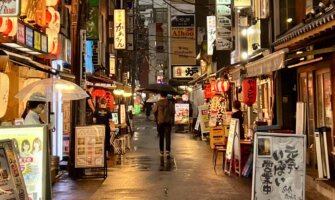
How to Spend Your Time in Tokyo: A Suggested Itinerary

The Perfect 7-Day Japan Itinerary for First-Time Visitors

How to Find the Perfect Apartment for Vacation Rentals

The 6 Best Hotels in Florence

Where to Stay in Florence: The Best Neighborhoods For Your Visit

TravelCon is Back! Come Join Us!
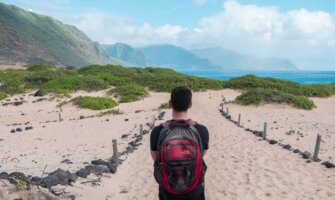
How to Plan a Trip: A Month-by-Month Guide
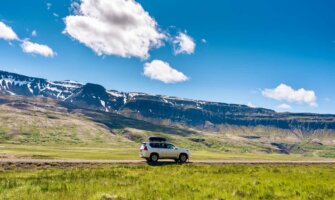
13 Iceland Road Trip Tips: What You Need to Know Before You Go

The 7 Best Hotels in Madrid
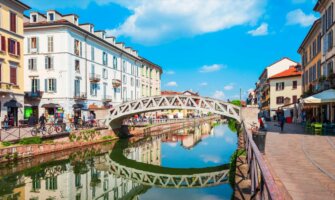
Where to Stay in Milan: The Best Neighborhoods for Your Visit
Can't find what you are looking for? Use the search form below to search the site!
Get my best stuff sent straight to you, pin it on pinterest.
- Search Please fill out this field.
- Manage Your Subscription
- Give a Gift Subscription
- Sweepstakes
This Gorgeous California State Park Was Just Named the Best Place for Stargazing in the U.S.
All you need to do is look up.
:max_bytes(150000):strip_icc():format(webp)/Stacey-Leasca-2000-631fabdcfe624115bea0ce8e25fdec96.jpg)
Kevin Key/Slworking/Getty Images
The 2024 eclipse may have come and gone, but it left plenty of people hungry for more astrotourism. And luckily, there are plenty of fantastic spots to stargaze across the United States, and HomeToGo has rounded up a few of the best destinations in its new Stargazing Index .
“Astrotourism has emerged as the defining travel trend of 2024 so far, with April’s total solar eclipse generating a notable uplift in demand. Leading up to the event, the search demand for vacation rentals in towns along the path of totality skyrocketed by 139 percent week-over-week on HomeToGo, with median nightly prices registering increases of 40 percent,” Eleanor Moody, a spokesperson and travel expert at HomeToGo shared in a statement provided to Travel + Leisure . “We predict that this piqued interest in celestial tourism will persist further into the year, and have curated HomeToGo’s 2024 Stargazing Index with a new wave of eager astro-travelers in mind.”
As Moody explained, the new index is designed to assist travelers in discovering all the darkest places to ensure the best view of the stars above.
In total, it found 24 Dark Sky communities across nine states, including California, Arizona, Texas, Indiana, Utah, Colorado, Illinois, Idaho, and Florida.
It then ranked them on five indicators, including an "under-the-radar score," which it gave based on their search volume (the lower the search volume the higher the score); an "affordability score" based on the median nightly price per person for a vacation rental on HomeToGo; an "availability score," based on the number of vacation rentals in each destination bookable on HomeToGo; a "clear sky score" based on the average number of clear days in each community; and a "solitude score," based on the size of each certified International Dark Sky Place and the area's population size. (For the latter, the lower the population density, the higher the score.)
After looking at all that data, it named Borrego Springs, California, the home of Anza-Borrego Desert State Park , to be the No. 1 astrotourism spot. "This small community is the only International Dark Sky Community in California," the findings noted. "Dedicated to protecting the night sky from light pollution, backyard stargazing parties are a daily occurrence. Visitors are invited to embrace the local natural and cultural wonders with the annual Night Fall Star Party, southern California’s prime opportunity to view the night sky with others."
It was joined by two Arizona locations: Fountain Hills at No. 2, followed by Flagstaff in third. Dripping Springs in Wimberley, Texas, and Cottonwood, Arizona, came in fourth and fifth, respectively.
Ready to get out and enjoy a blanket of stars? Check out the full findings at hometogo.com .

Is it safe to travel to France? The latest advice
T he French government has raised its terror alert to the highest possible level, “emergency”, following the terror attack in Moscow that left more than 135 people dead.
French prime minister Gabriel Attal said the decision was taken “in light of the Islamic State’s claiming responsibility for the [Moscow] attack and the threats weighing on our country”.
France’s terror threat system has three levels. The highest level is announced if there is a terrorist attack in France or overseas, or if an attack on French soil is considered to be imminent.
France was already on high alert for potential terrorist attacks, with the Paris Olympics and Paralympics due to take place in the capital this summer.
The updated terror alert comes just days before the UK Easter school holidays, when thousands of British holidaymakers will travel across the Channel for a getaway.
What is the Foreign Office advice for France?
The UK Foreign, Commonwealth and Development Office (FCDO) France advice, which was last updated on February 20, reads: “There is a high threat of terrorist attack globally affecting UK interests and British nationals, including from groups and individuals who view the UK and British nationals as targets. You should remain vigilant at all times.”
“Methods of attack have included knife attacks, shootings, bombings and vehicle attacks. Be vigilant in public places and follow the advice of local French authorities,” the FCDO adds.
The FCDO lists shopping centres, entertainment establishments, cultural events, public transport and places of worship as settings where “indiscriminate” terrorism attacks could take place.
Check the France FCDO page for the latest advice.
What happened in the Moscow terror attack?
On Friday, terrorists carried out an attack at the Crocus City Hall on the outskirts of Moscow, killing at least 137 and injuring 140.
Four men, all of whom are citizens of Tajikistan, have been formally charged with committing a group terrorist attack. The attack has been claimed by the Afghanistan-based Islamic State Khorasan Province (IS-K) group.
On March 7, the United States warned its citizens in Russia that extremists had “imminent plans to target large gatherings in Moscow” and specifically mentioned concert venues. It advised Americans to avoid large gatherings.
What should I do if I get caught up in a terrorist attack?
Britain’s counter-terrorism police gives advice on what to do in the event of an emergency . This includes to run to a place of safety: “This is better than trying to surrender or negotiate.” To hide: “It is better to hide than confront. Barricade yourself in, turn your phone to silent and use only when it is safe to do so.” And to tell: “Make sure you know the local emergency numbers in the country you are travelling to. For all EU countries call 112.”
Have there been recent terrorist attacks in France?
There have been a number of terrorist attacks in France over the past decade. In January 2015, eight cartoonists, two guests and two police officers were murdered at the offices of the satirical magazine Charlie Hebdo . The gunmen identified as belonging to al-Qaeda.
In November that year, in the deadliest terrorist attack in French history, 131 people were killed and 413 were injured in a series of shooting and grenade attacks at the Bataclan music venue, near the Stade de France and at several restaurants and bars across Paris. Islamic State claimed responsibility for the attacks.
In July 2016, 86 people were killed and 434 injured in Nice after a 19-tonne cargo truck was driven into crowds during Bastille Day celebrations on the Promenade des Anglais in Nice. Again Islamic State claimed responsibility.
What if I want to cancel my trip to France?
If you have booked a package holiday to France and want to cancel your trip for any reason, contact your tour operator and they might offer flexibility with alternative dates.
But bear in mind that, because the Foreign Office has not issued any advice against travel to France, there is no guarantee that you will receive a refund, nor will you be able to claim money back with your travel insurance company.
If you have booked flights and accommodation independently, and wish to cancel your holiday, contact your travel providers as soon as possible to see if you can rearrange your plans. Note, however, that given the circumstances, it is unlikely you will receive a full refund.
Sign up to the Front Page newsletter for free: Your essential guide to the day's agenda from The Telegraph - direct to your inbox seven days a week.
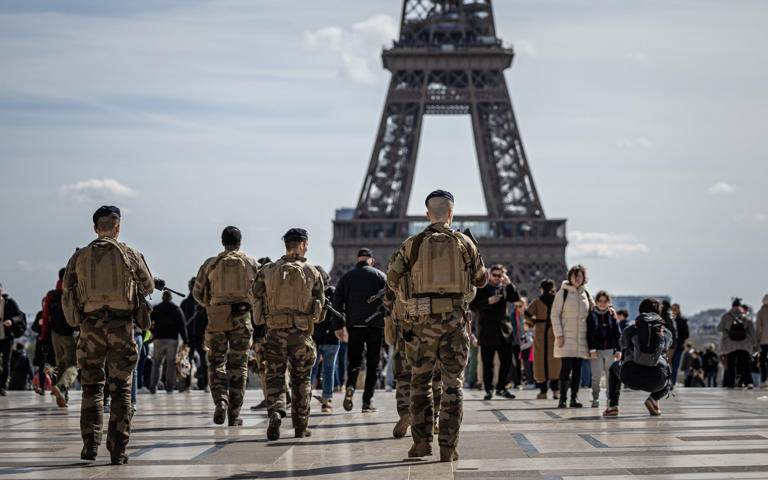
Protect Your Trip »
6 top-rated newport mansion tours + tips from a local.
Newport's famed mansions are a must-see in the City by the Sea.
Top-Rated Newport Mansion Tours

Gavin Ashworth | Courtesy of Newport Mansions
Experience peak luxury and elegance at these stunning properties.
More than a century ago, America's wealthiest families commissioned their "summer cottages" to be built in the coastal enclave of Newport, Rhode Island , along the edge of the Atlantic Ocean. The era's most renowned architects outdid one another in size and scale as well as opulence and grandeur. Today, Newport is synonymous with its exquisite Gilded Age mansions, and experiencing them in person is an absolute must.
The majority of the Gilded Age mansions in Newport – but not all – are owned and operated by the Preservation Society of Newport County, and many of the most popular are open to the public year-round. Get ready to explore the Bellevue Avenue Historic District as you tour Newport's best mansions.
The Breakers

Courtesy of Andrea McHugh
Price: From $29 for adults; $10 for youths 6 to 12
Standout perk: The Breakers offers an audio Family Tour that engages young visitors with stories about the lives of the children who summered there, the staff who ran the home and interesting things to see in the mansion, such as the playful dolphin sculpture beneath the grand staircase.
Considered the grande dame of all the Newport mansions, The Breakers was no doubt built to impress. The summertime escape of Cornelius Vanderbilt II and his family was designed by the Gilded Age's preeminent architect, Richard Morris Hunt, and boasts a classic Italian palazzo design with panoramic views of the Atlantic Ocean.
Visitors can explore the mansion at their own pace via the self-guided audio tour available in nearly a dozen languages on the Newport Mansions free app, which will come in especially handy if you plan to explore more than one mansion. Take some time to explore the beauty of the 13-acre grounds as well, and be sure to wear comfortable walking shoes .
Those with a curiosity of how a mansion of this magnitude worked – after all, The Breakers was considered a modern marvel when completed in 1895 – will enjoy the Beneath The Breakers Tour. This guide-led tour takes you through the boiler room, tunnel and basement. Guests will learn how the home was outfitted with electricity, still considered a novelty during the Gilded Age. This tour requires a separate ticket from The Breakers' audio tour and is best suited for visitors 13 years and older. Advance reservations are recommended.
Local tip: As The Breakers is the most visited mansion in Newport, a good time to visit is either when it opens or toward the end of the day, especially in the busiest summer months. The early evening light can be ideal for photos, but plan accordingly as the house and grounds close one hour after the last tour admission. Before you visit, save time by downloading the free Newport Mansions tour app.
View & Book Tickets: The Breakers | Viator | GetYourGuide
Marble House

Price: From $25 for adults; $10 for youths 6 to 12
Standout perk: While it's hard to rival the splendor of Marble House, the Chinese Tea House on the end of the mansion's lawn parallel to Cliff Walk is an unexpected visual delight. For $35 extra, tour ticket holders to Marble House can enjoy sandwiches and refreshments at the cafe at the Chinese Tea House or make a reservation for brunch and afternoon tea service, offered on weekends May through December. The service is operated by Stoneacre Restaurants, which owns two popular restaurants in downtown Newport.
From the moment visitors walk under the four towering Corinthian columns fronting this mansion, they know they are in for a treat. Like other Newport Mansions audio tours, Marble House has a self-guided tour available via the organization's free app, allowing visitors to peruse the property at their own pace.
Inspired by the Petit Trianon at Versailles , Marble House is an architectural masterpiece. Made from 500,000 cubic square feet of marble, the mansion was a 39th birthday present from businessman and philanthropist William K. Vanderbilt to his wife Alva. He spared no expense for their summer escape. Later in life, Alva Vanderbilt Belmont became a suffragist and hosted events at Marble House in support of women's right to vote. Viewers of the popular HBO series "The Gilded Age" may recognize rooms in the mansion as it was used for filming on location and also inspired sets.
Local tip: Don't miss the ballroom on the first floor – while it's not the largest in Newport, it's widely considered the most ornate, with gilt details from floor to ceiling.
View & Book Tickets: Marble House | Viator | GetYourGuide

Standout perk: While The Elms is spectacular, its formal gardens – 10 acres' worth – are extraordinary, complete with nearly 40 species of trees plus terraces, gazebos, fountains and colorful blooms, depending on the time of year.
Fashioned after an 18th-century French chateau, The Elms is a must-visit mansion, from the sun-soaked conservatory and the drawing room to the handsome library and the breakfast room bearing Chinese-style lacquered wall panels. A self-guided audio tour is available in nearly a dozen languages, but any fan of "Downton Abbey" or those curious about life behind the scenes of Newport's mansions will appreciate the Servant Life Tour at The Elms.
On this newly updated, guide-led tour, visitors start in the basement, where you'll see the operations of the house such as the kitchen and butler's pantry, all the way up to the domestic staff's living quarters on the third floor. Along the way, travelers will learn more about the personal lives of staff, and see rare photographs of servants at work and in their free time. You'll even get to learn about topics like immigration and labor disputes on this tour.
Local tip: The Servant Life Tour is not only fascinating, but you'll get the rare opportunity to go on The Elms' rooftop and be rewarded with an amazing and unexpected view of Newport Harbor.
View & Book Tickets: The Elms | GetYourGuide
Tips on Trips and Expert Picks Newsletter
Travel tips, vacation ideas and more to make your next vacation stellar.
Sign up to receive the latest updates from U.S News & World Report and our trusted partners and sponsors. By clicking submit, you are agreeing to our Terms and Conditions & Privacy Policy .
Rough Point

Price: From $20; free for children 12 and younger
Standout perk: Rough Point sits at the southern end of Bellevue Avenue, so getting here allows you to enjoy views of both private mansions and those open to the public along the way. The mansion's oceanfront perch offers an uninterrupted view of the beautiful Cliff Walk Bridge, a stone arch bridge across the rocky inlet where Doris Duke would swim regularly.
Though a Gilded Age mansion through and through, Rough Point is perhaps best loved not for its grandeur but for its most famous resident: Doris Duke. The late heiress, collector and philanthropist – dubbed the "richest little girl in the world" when she was born – spent considerable time at Rough Point until her death in 1993. A self-guided audio tour leads visitors here through the art-filled home room by room, highlighting eclectic sculpture, family portraits, centuries-old tapestries, renowned furnishings and many pieces Duke collected as an avid world traveler.
While the formal rooms such as the Yellow Room and jaw-dropping Music Room are a sight, the ocean-facing Solarium affords the best views. Whether before or after your tour, visit the house tour on the website for footage of Doris Duke at the home as well as behind-the-scenes videos. Note that Rough Point is typically open seasonally from spring through mid-November.
Local tip: On Rough Point's grounds, you'll find a pair of life-size topiary camels inspired by Doris' pet Bactrian camels, Princess and Baby. Both enjoyed the summer months with the tobacco heiress at Rough Point and have become the unofficial mascots of the mansion. The Newport Restoration Foundation encourages taking a #camelgram photo with the Princess and Baby topiary to share on social media.
View & Book Tickets: Rough Point | GetYourGuide

Dave Hansen | Courtesy of Newport Mansions
Standout perk: Rosecliff's signature feature – despite being home to Newport's largest ballroom, which hosted lavish society events throughout the Gilded Age – is its celebrated heart-shaped grand staircase.
Following a multimillion-dollar renovation, Rosecliff resumed tours in September 2023, much to the delight of Newport's visitors. Architect Stanford White, who was the mastermind behind Newport's historic Casino Theatre and myriad other important buildings, modeled the mansion after the Grand Trianon at Versailles for silver heiress Theresa Fair Oelrichs. Its European influence is felt throughout.
Explore the mansion at your own pace via the self-guided audio tour on the free Newport Mansions app. Don't forget to look up in the ballroom, where the trompe l'oeil ceiling creates an air of whimsy and romance, making it the ideal setting for the filming parts of "The Great Gatsby" with Robert Redford and Mia Farrow, as well as the more recent "27 Dresses."
Local tip: Rosecliff hosts many amazing events, including the annual Newport Mansions Wine & Food Festival, which features dinners, events and seminars with wines and other libations from around the world.
View & Book Tickets: Rosecliff | Viator
Chateau-sur-Mer

Standout perk: A new audio tour is your guide to this National Historic Landmark, considered Newport's first true mansion. Learn about the lives of the Wetmore family members who lived there for more than a century.
Until the arrival of the Vanderbilt houses in Newport in the 1890s, Chateau-sur-Mer was considered the seaside city's most palatial residence. Today, visitors can explore the home, an Italianate-style villa built for wealthy China trade merchant William Shepard Wetmore, who did quite a bit of entertaining at this summer cottage.
Local tip: While Chateau-sur-Mer is essentially a Victorian Era time capsule, the mansion's grounds are home to amazing tree specimens, shrubs and more, including a striking weeping beech tree. If you explore deeper into the grounds, you'll find a cool circular maze made from mounds of grass; this earthwork by artist Richard Fleischner is known as the "Sod Maze" and makes for a relaxing place to meditate.
View & Book Tickets: Chateau-sur-Mer | GetYourGuide
What to do nearby
In addition to the historic mansions, Newport offers a variety of historic attractions, walking trails and museums. To help you fully explore the area, here are some recommendations for things to see and where to eat.
Things to do:
- Wander along the Cliff Walk
- Visit the International Tennis Hall of Fame
- Explore the historic Fort Adams
- Discover automotive history at Audrain Automobile Museum
- Explore The Sailing Museum
- Visit the Redwood Library and Athenæum
- Discover the oldest synagogue in the U.S.
- Browse the private collection at the Newport Car Museum
Nearby restaurant recommendations:
- Breakfast: Annie's, Lucy's Cafe & Bakery or Corner Cafe
- Lunch: Cru Cafe, Belle's Café or The Mooring Seafood Kitchen & Bar
- Dinner: White Horse Tavern, Clarke Cooke House or Castle Hill Inn
- Drinks: Midtown Oyster Bar, The Roofdeck at the Vanderbilt or The Lounge at The Chanler
Why Trust U.S. News Travel
Andrea McHugh is a travel and lifestyle writer based in Newport, Rhode Island, where the famed mansions of the Gilded Age are common sights along her daily run in the City by the Sea. Though she regularly visits the mansions as they play host to local business and social events, such as the Newport Mansions Wine & Food Festival, Newport Classical Music Festival and Newport Film, she spent a recent "staycation" touring these turn-of-the-century behemoths to write this article.
You might also be interested in:
- The Top Things to Do in Rhode Island
- The Top Things to Do in New Hampshire
- The Top Things to Do in Maine
- The Top Things to Do in Vermont
Tags: Travel , Tours
World's Best Places To Visit
- # 1 South Island, New Zealand
- # 4 Bora Bora
If you make a purchase from our site, we may earn a commission. This does not affect the quality or independence of our editorial content.
You May Also Like
Flight canceled or delayed what to do.
Amanda Norcross April 26, 2024

The Best Beach Hats
Megan Johnson and Sharael Kolberg April 26, 2024

The Best Florence Tours
John Rodwan April 25, 2024

The 9 Best Louisiana Swamp Tours of 2024
John Rodwan April 24, 2024

How Much Does a Cruise Cost?
Gwen Pratesi April 24, 2024

The Best Whale Watching in Cape Cod
Lyn Mettler April 24, 2024

Best Whale Watching Tours in Maine
Marisa Méndez April 23, 2024

The Best Wineries in Napa Valley
April 23, 2024

The Best East Coast Beaches
April 19, 2024

The Best Hard-sided Luggage Picks
Erin Evans , Rachael Hood , Catriona Kendall , Amanda Norcross and Leilani Osmundson April 17, 2024

- Skip to main content
- Skip to flight search
- Skip to main menu
- Skip to footer
- Hotel (opens in a new tab)
- Car rental (opens in a new tab)
- eVisa (opens in a new tab)
- Parking (opens in a new tab)
- eSIM (opens in a new tab)
- Activities (opens in a new tab)
Flight search
Manage my booking.
Check your flight details. Specify your dietary requirements, choose seat on board, order a premium meal, request an invoice or change your flight.
Online check-in begins 36 hours before the scheduled departure. Choose one of the check-in options/methods.
If you have been denied boarding or if your flight has been cancelled or delayed for at least two hours, ask at the check-in counter or boarding gate for the text stating your rights, particularly with regard to compensation and assistance.
Starting your journey at one of the following airports? Online check-in is available only on the local airport website. Select a city and check in: Dubrovnik (opens in a new tab) , Podgorica (opens in a new tab) , Sarajevo (opens in a new tab) , Skopje (opens in a new tab) , Split (opens in a new tab) , Tirana (opens in a new tab) , Zadar (opens in a new tab) .
Are you traveling from Baku (GYD) in Azerbaijan or from Athens (ATH) in Greece ? Choose a seat via online check-in option, then proceed to the counter at the airport so we can verify the required documents. We will then give you a boarding pass with a QR code .
Check out information on flights, delays, cancellations and changes in flight schedule.
Passengers with chronic diseases. What is worth paying attention to when preparing for a flight?
Reading time 🕗 4 minutes | April 26, 2024 | The material was prepared by Politykazdrowotna.com
The cabin pressure in most passenger aircraft corresponds to that at 2400-2500 meters above sea level. For our body, therefore, a flight means a trip to Rysy peak that lasts about twenty minutes — because that's how long it takes to ascend — and that's from the altitude of Warsaw, Krakow or Gdansk, not from the foothills of the Tatra Mountains, explains Kajetan Gawarecki, an expert in anesthesiology and intensive care nursing, who also deals with air medical transport. So what rules should passengers diagnosed with chronic diseases such as cardiac problems, asthma, or diabetes follow? In the following material, we provide all the necessary answers to this question.
✅ From this article you will learn:
- What to pay attention to when struggling with chronic diseases and planning air travel.
- What to know before traveling, in case of diabetic diseases.
- What to remember, in case of air travel with cardiovascular diseases.
- How to prepare for a flight, suffering from asthma.
Pressure changes in aircraft — this is worth knowing
Diabetic on board, air travel for people with cardiac problems, asthmatic's peaceful journey, seniors on board. what should you keep in mind when planning air travel, the magic of air travel. how to overcome the fear of flying, flying by plane during pregnancy — what should you pay attention to.
Boeing 787 Dreamliner planes, which operate long-haul flights on LOT Polish Airlines, maintain a pressure equivalent to 1,800-1900 meters above sea level during flight, which is about the same as at the height of Giewont or Kasprowy Wierch. These few hundred meters of difference in pressure sensation can be particularly important for people with chronic ailments. However, it is worth noting that although the cabin pressure during a standard flight is lower than the pressure on land, it is still acceptable for the human body.
The change in pressure can manifest itself as an unpleasant sensation of ear plugging. Here, however, how our body is built comes to the rescue: thanks to the connection between the eardrum cavity and the throat, this pressure can be equalized via the auditory trumpet. So what can help? For example, frequent swallowing of saliva, chewing gum, sucking on a dissolvable candy or.... yawning.
The longer the flight, the greater the fatigue of being in conditions of reduced access to oxygen. A healthy body compensates for this deficit in various ways, such as accelerating breathing and heart rate slightly, making air travel completely comfortable. Some people may, on a flight that lasts for hours, develop symptoms related to the change in pressure. Passengers with respiratory diseases such as chronic obstructive pulmonary disease or cancer, or with circulatory failure, unstable coronary artery disease, or, for example, in the case of children, a heart defect or significant anemia. All of which exacerbate oxygen deficiency in the tissues, should seek medical advice before departure. This will ensure that their trip will be safe. For longer trips that involve a change in time, the timing of medication should be planned accordingly so as not to lead to bodily dysfunction, explains Kajetan Gawarecki.
Diabetes is estimated to affect up to three million people in Poland. The disease is not a contraindication to high-altitude travel. There is also no conclusive evidence to suggest that people with diabetes are more likely to suffer increased discomfort. It is worth noting, however, that large changes in altitude, temperature and decreases in activity can impact blood sugar levels, which may necessitate the administration of insulin.
Fortunately, diabetics can take medications like glucagon and other necessary items to control the disease in their carry-on luggage. It's also a good idea to bring a doctor's certificate and have a “plan B”: patients who use an insulin pump should take a supply of insulin injections or spare batteries for the pump. Likewise with a continuous blood glucose monitoring system: remember spare accessories, batteries, charger or disinfectant liquid before inserting the sensor.
Sound education and good preparation before traveling will help diabetics have a successful and enjoyable time. It is worth remembering, for example, to have a small sweet snack on hand. If a diabetic is traveling with medications or medical equipment, he or she should remember to bring a doctor's certificate and document the condition , concludes Dr. Justyna Kaźmierczak, Ph.
People who face cardiovascular problems on a daily basis should always consult with their health care provider before air travel. There are certain contraindications that should be taken into account before planning a flight. These include a myocardial infarction suffered 7-10 days prior to travel, an exacerbation of coronary artery disease, or uncontrolled arrhythmia. However, if the aforementioned contraindications do not affect the prospective traveler, such a person can freely pursue air travel.
Flight safety also depends on how long the trip will be. It is worth bearing in mind that longer flights of several hours for people with cardiovascular problems may require special preparation. Such a person should absolutely take all necessary medications: especially anticoagulants: on board the plane, as well as medical records. It is also a good idea to inform the flight attendants about the possibility of aggravated ailments. During the duration of the flight, it is also advisable to walk around the plane once every hour or so and perform simple exercises that will reduce the likelihood of venous congestion.
For my patients who are struggling with hypertension or heart disease, I always recommend a check-up visit before a planned trip. This is to see if they have an adequate supply of medication, what their blood pressure is, and how they react to a stressful situation such as an airplane flight. It's important to remember that it's the passenger's health that is key, as the environment on board an airplane itself is by no means dangerous, explains Dr. Aleksandra Szymańska, a specialist in internal medicine.
If the passenger remains in good physical condition, under constant medical care, airplane flight should not be a difficulty for him. Asthmatics may experience changes, usually resulting from reduced pressure in the aircraft cabin, causing breathing difficulties. In such moments, you can always count on the support of cabin crew, who are prepared for such situations. You can also take a mobile inhaler in your carry-on luggage, the capacity of which will not exceed 100 ml.
What distinguishes the air in an airplane from that on the ground is not only the lower pressure, but also the humidity, or rather the lack of it. The air is dry, the humidity in the cabin is only a few: a dozen percent, recalls Kajetan Gawarecki.
It is important to remember that flying by air is one of the safest transportation options in the world, which is primarily due to extremely strict safety procedures and the possibility of receiving professional support from cabin crew.
Any person with a diagnosed chronic disease, whose health condition is stable and whose attending physician does not see any contraindications to flying, can enjoy the opportunities offered to passengers by air travel. What we should always be guided by, however, is the safety of our health therefore, if anything raises doubts: always, before planning a flight, consult a doctor.
Read similar articles
Child on airplane - how to ensure their comfortable journey.

IMAGES
VIDEO
COMMENTS
I started this travel blog in 2019 to document my own international trips, share my photos, and help others learn how to travel the world and find some really good spots off the beaten path. I'm currently based in Bali, Indonesia, where I met my wife Intan, who's a Bali local. Now she joins me on these wild and crazy adventures too. Together ...
Dry Fox travel towels are my favorite (use the code "nomadicmatt" for 15% off your purchase)! 2. Use a small backpack/suitcase. By purchasing a small backpack (I like something around 35/45 liters), you will be forced to pack light and avoid carrying too much stuff. Humans have a natural tendency to want to fill space.
Make copies of your important documents. Make digital and hard copies of all your important travel-related documents. Start by photographing your driver's license, your state ID and/or your passport. You should have copies of your IDs in your phone's library in case you get separated from the actual document.
44: Make Friends With Locals. Make it a point to avoid other travelers from time to time and start conversations with local people. One of my best travel tips is to make eye contact and smile more. Maybe stop to ask for directions. This is a fast way to make new friends.
Full Suitcase is a travel website filled with inspiring travel stories, jaw-dropping images, and no-nonsense trip advice. Established in 2015, Full Suitcase is now one of the world's leading family travel blogs with millions of readers all over the world. Our destination guides, trip itineraries, and practical tips will help you MAKE THE MOST ...
Since 2008, I've helped millions of people save money, travel more, and have a more authentic experience in the destinations they visit. This website has been featured in major media time and time again because it's got the best budget advice out there. My goal is to make you a smarter traveler so you can go where you want, as often as they ...
Christy Woodrow is a travel photographer and professional blogger based in San Diego, California. She started this adventure travel blog in 2010 to provide trip ideas and helpful travel tips for people with limited vacation time. Follow her adventures by signing up for weekly emails or read more about her on our about page.
Here are Our Top Travel Tips. 1) Travel Slow. 2) Think Outside the Box When Booking Flights. 3) Learn Some of the Local Language. 4) Buy Travel Insurance. 5) Ask for Prices Before you Agree to Anything. 6) Get a VPN. 7) Apply for a Credit/Debit Card That Has Zero International Transaction Fees.
Travel blog & podcast that pairs practical advice with humor and storytelling to emphasize travel as a tool for education, connection, growth, & social impact. ... Travel Safety Tips; Travel Insurance Guide; Responsible Tourism Guide; Family Travel; Long Term Travel. 30 Things Nobody Tells You About Quitting Your Job to Travel;
Traveling since 1997 | 16 years with kids | Professional travel blog since 2010. Sharing travel tips and destination ideas to help you travel more and create better memories.
Her blog features great photos, dive tips, travel stories, and a biting and self-deprecating humor. Plus, I helped pick out her blog name, so it's hard not to love it. The Blonde Abroad. Kiersten's site focuses on the intersection of fashion and travel. She gives tips and advice for women on what wear, pack, and see while overseas and ...
Before I started my own adventure travel blog 10-years ago, I was inspired to explore the world after reading other people's travel blogs online. Travel blogs are a wonderful source for cool ideas & advice if you're planning a trip! Below you'll find some of my favorite travel blogs, plus many more I've discovered over the years.
I'm Kate. I teach women how to travel the world safely — and I'm here to help you have the best trip ever. I quit my job to travel the world alone in 2010. 12 years later, I've traveled to 83 countries and all seven continents! Oh, and I never went back to a "real" job. Whether you need guidance for your first solo trip or you're ...
64. When carrying medical supplies: split between two bags. Since I have type 1 diabetes, this is an important factor for me, but lots of people travel with some sort of condition or illness and if that applies to you, then make sure you split your important supplies between two different bags.
Read the Explore blog, packed with top tips and ideas for choosing and planning your trip. We've got inspiration for where to go and when, as well as advice on preparing for your tour. ... 2023 has been a huge year for adventure travel - and Explore Worldwide's highest-revenue year in its 42-year history. Now the operator... 7 things you ...
The air onboard is extremely dry. Pack a decent moisturizer, lip balm, lubricating eye drops and a small nasal spray. Try to avoid alcohol and drink as much water as you can throughout the flight ...
22. It's difficult to be gluten-free in Japan. While the abundance of rice may make you think Japan would be an easy country for gluten-free travelers, that's simply not the case. Soy sauce and other wheat-based seasonings are an integral part of Japanese cuisine, making it hard to avoid gluten.
36. Put Electronics, Medications, and Extra Clothes in Your Carry-on. A carry-on bag serves many purposes during traveling. This bag is where you store all of the extra things that are very useful to you such as necessary medications, electronic items such as your laptop and laptop charger, power bank etc.
Whether you're planning to visit Japan's Golden Route (Tokyo - Kyoto - Osaka - Hiroshima) or wander off the beaten path, my Japan travel guides cover all the bases. Create your own Japan travel story by exploring lesser-known cities, enjoying cultural experiences and discovering hidden gems to enrich your trip. Golden Route. Off the ...
What To Expect. Language: The most commonly spoken language in the USA is English.. Currency: The currency in the USA is the US Dollar.. Credit Cards and ATMs: You can pay for almost anything with your credit or debit card in the USA.There are plenty of ATMs as well, and most machines will accept Mastercard and Visa. Plugs: The plugs in the USA are type A and B.
Road Scholar Blogs Navigating Group Travel as an Introvert: Our Top Tips Navigating Group Travel as an Introvert: Our Top Tips. Road Scholar 5/1/2024 . Community; Travel Tips; A common topic of discussion on the Women of Road Scholar Facebook group is traveling as an introvert. Even if you enjoy making new friends and being a part of a group ...
Here are the main San Diego city neighborhoods: Gaslamp: The heart of the City of San Diego and hub for nightlife and dining. Little Italy: A chic, pedestrian-friendly neighborhood, packed with trendy restaurants, creative cocktail bars, gastropubs, and coffee shops. Balboa Park-Hillcrest: Home of the famous San Diego Zoo and museums.
Now more than ever, more people are deciding to forgo travel companions and embark on their trips alone. Solo vacation package searches on Google shot up by more than 200% over the past 90 days as ...
Bucket list travel on a budget: Expert tips for airfare, loyalty programs, credit card perks and more. Nicky Kelvin from The Points Guy dives into ways to save this summer.
The travel blog of Nomadic Matt features tips and advice on how you can travel better, cheaper, and smarter so you can explore the world on a budget. Nomadic Matt's Travel Site. Travel Better, Cheaper, Longer. Search for: About; Blog. Latest Posts; The 6 Best Hotels in Dubrovnik;
After looking at all that data, it named Borrego Springs, California, the home of Anza-Borrego Desert State Park, to be the No. 1 astrotourism spot."This small community is the only International ...
Based on recommendations from travel experts and advice from physicians, these are the best neck pillows for travel. Best Overall: Cabeau Evolution S3 Best Affordable: MVLOC Travel Pillow
But bear in mind that, because the Foreign Office has not issued any advice against travel to France, there is no guarantee that you will receive a refund, nor will you be able to claim money back ...
Local tip: As The Breakers is the most visited mansion in Newport, a good time to visit is either when it opens or toward the end of the day, especially in the busiest summer months.The early ...
These include a myocardial infarction suffered 7-10 days prior to travel, an exacerbation of coronary artery disease, or uncontrolled arrhythmia. However, if the aforementioned contraindications do not affect the prospective traveler, such a person can freely pursue air travel. Flight safety also depends on how long the trip will be.